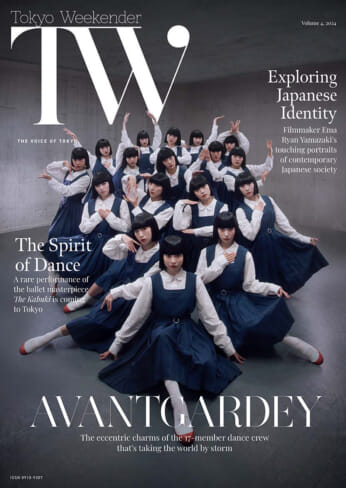
Travel Travel Guides

Japan in September: The Best Things To Do and Places To Visit
August 30, 2024
Japan in September: Travel Overview
- Weather: September is a transitional month from summer to autumn, with warm temperatures gradually cooling down. Expect some residual heat, especially in the early part of the month, along with the possibility of typhoons. Daytime temperatures usually range between 23° and 28° Celsius , while evenings can be cooler, particularly in the northern regions.
- September is an ideal time for those looking to enjoy Japan’s natural beauty without the summer crowds. There are fewer people on the beaches, making it a great time for a late summer escape. Early autumn foliage can begin to appear in the northern regions like Hokkaido.
- Events and Festivals: September is packed with traditional festivals and seasonal events. The Kishiwada Danjiri Festival in Osaka is a must-see, known for its thrilling danjiri (large wooden floats) races. Another highlight is the Ohara Hadaka ‘Naked Man’ Festival , a boisterous celebration in Chiba where loincloth-clad men carry mikoshi shrines into the sea to pray for a good autumn harvest.
- Popular travel destinations such as Kyoto and Tokyo can still see significant foot traffic, especially during the Silver Week holiday in mid-September. It’s advisable to book accommodation early.
Popular Activities and Things To Do in September
Beach escapes.
Though summer is winding down, Japan’s beaches are still a prime destination for sun-seekers. September offers warm ocean temperatures and fewer crowds, making it a perfect time for a relaxing beach vacation.
Okinawa’s beaches are legendary, with soft, white sands and vibrant coral reefs. Yonaha Maehama Beach on Miyako Island is often touted as one of Japan’s most beautiful, with its seven kilometers of pure white sand and shallow, turquoise waters. For a more secluded experience, head to Furuzamami Beach on Zamami Island, part of the Kerama Islands, where the water is so clear you can see colorful fish swimming just beneath the surface.
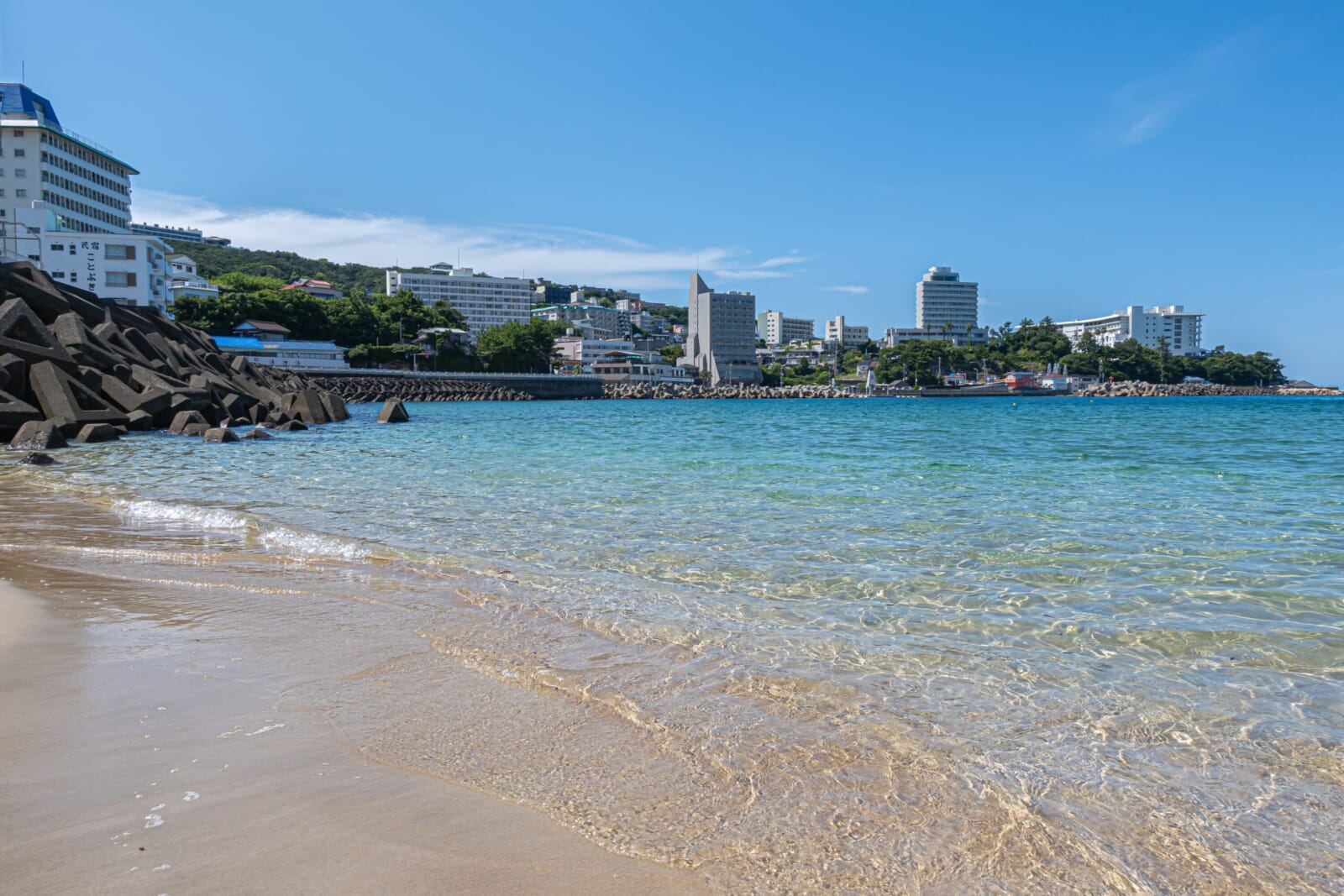
Shirahama Beach, Wakayama
Closer to Japan’s main island, Shirahama Beach is known for its pristine, 800-meter stretch of fine sand imported from Australia . The beach is perfect for swimming and sunbathing, with nearby attractions such as Shirahama Onsen, one of Japan’s oldest hot springs, where you can soak in the waters while enjoying views of the Pacific Ocean.
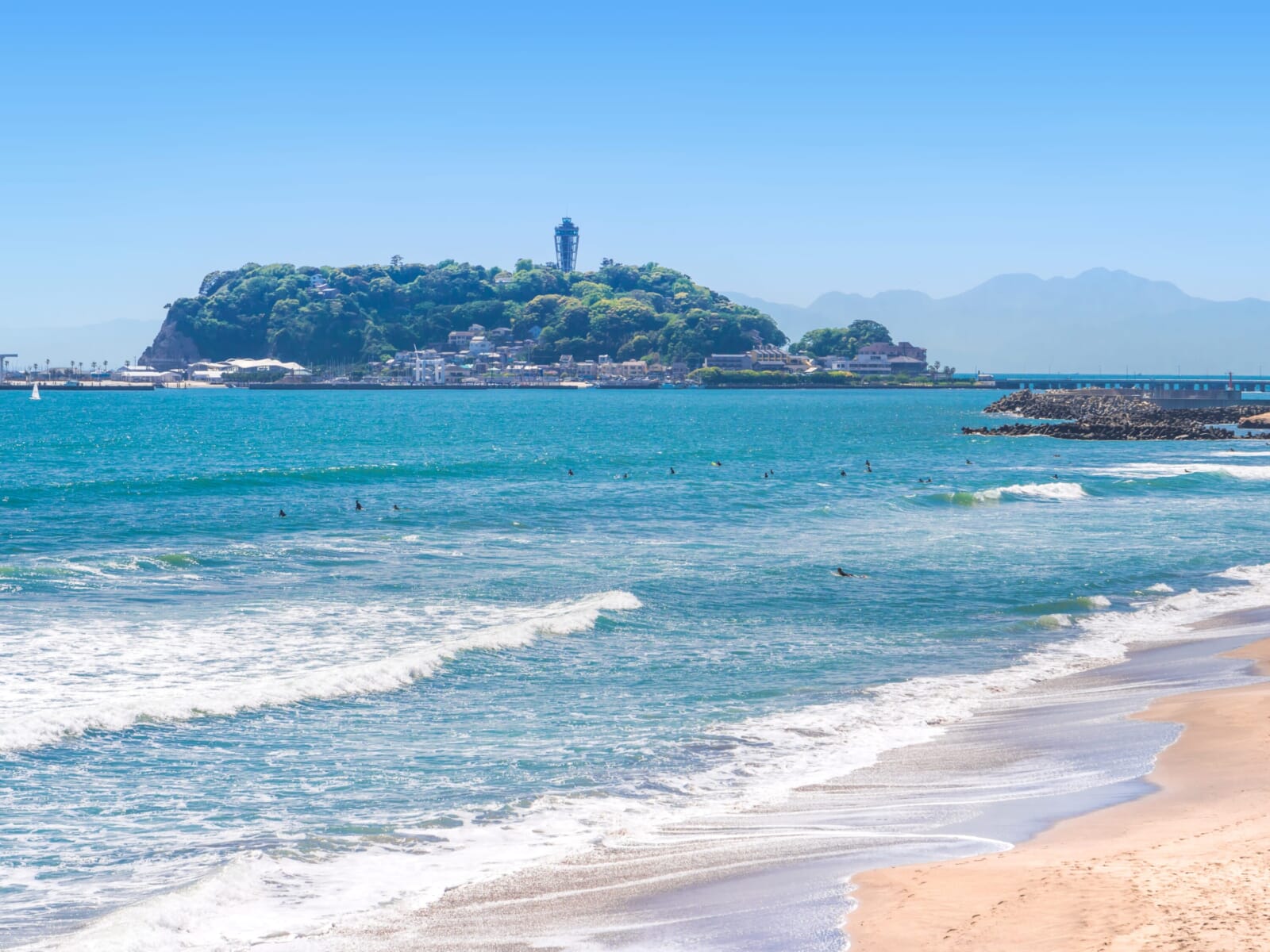
Kamakura, Kanagawa
Just a short train ride from Tokyo, Kamakura’s beaches , such as Yuigahama and Zaimokuza, offer a mix of natural beauty and cultural experiences. The historic town of Kamakura, with its ancient temples and the iconic Great Buddha, provides a perfect backdrop to a day spent by the sea. The beaches here are popular for surfers and the gentle waves are perfect for beginners. The sunset views over Sagami Bay are simply unforgettable.
Tips & Recommendations
For the ultimate beach experience, consider staying at a beachfront resort or a traditional ryokan with ocean views. Some places offer private access to the beach and amenities such as open-air baths and gourmet dining featuring local seafood. Be sure to check the weather forecast regularly, as September is still within typhoon season.
Autumn Hiking
As the weather cools, Japan’s mountainous regions become a hiker’s paradise. Early autumn hikes offer breathtaking views of the changing foliage, especially in the northern and higher altitude areas.
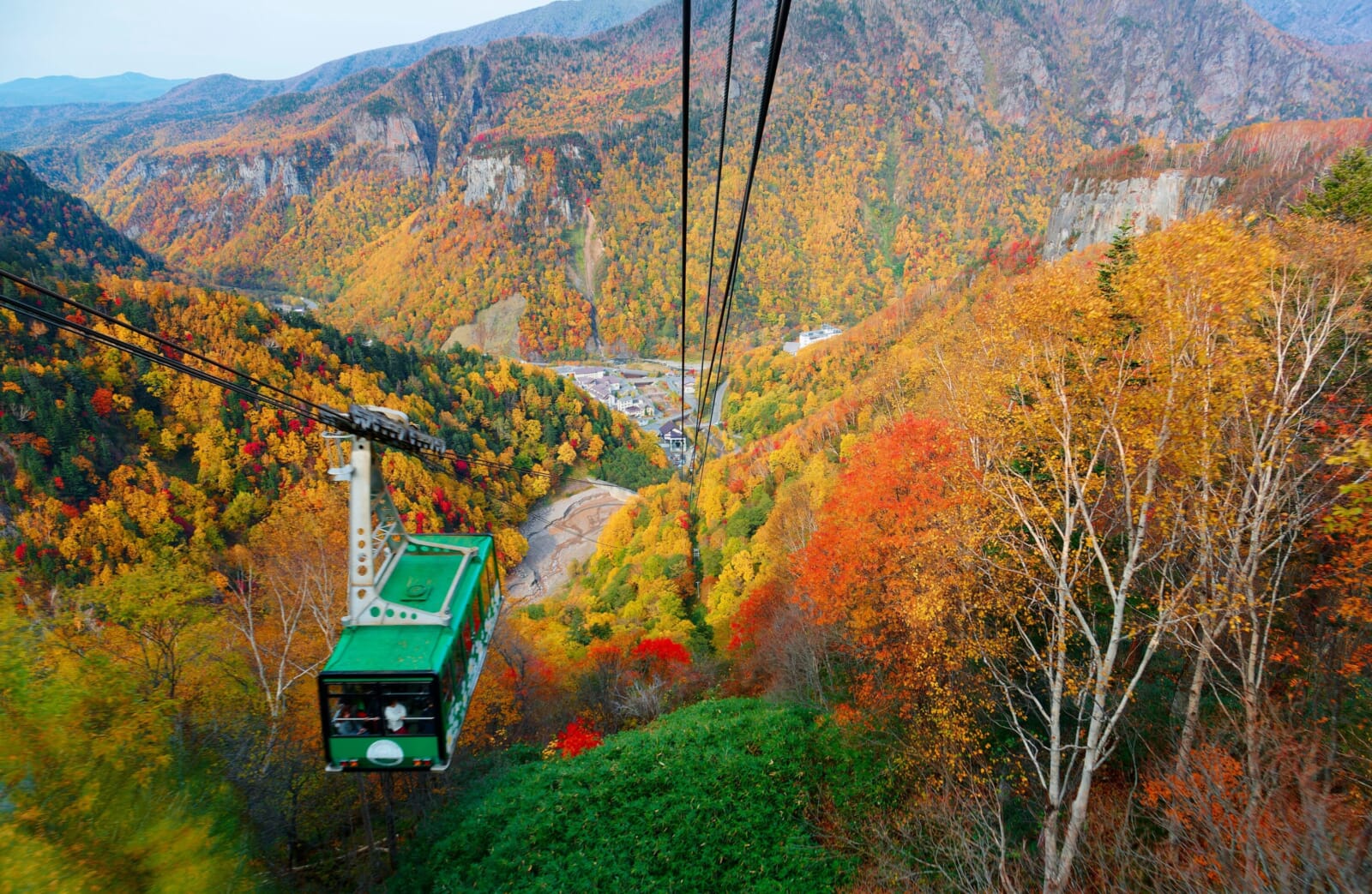
Daisetsuzan National Park, Hokkaido
As Japan’s largest national park, Daisetsuzan is one of the first places in the country to witness the stunning autumn colors. The park’s high altitude means that the leaves can begin to change as early as mid-September. The Asahidake Ropeway takes you up to the Asahidake summit, where you can start your hike surrounded by vibrant alpine vegetation and panoramic views of the park’s volcanic landscape. For those seeking a challenge, the trail to Kurodake offers a more strenuous hike with equally rewarding vistas.
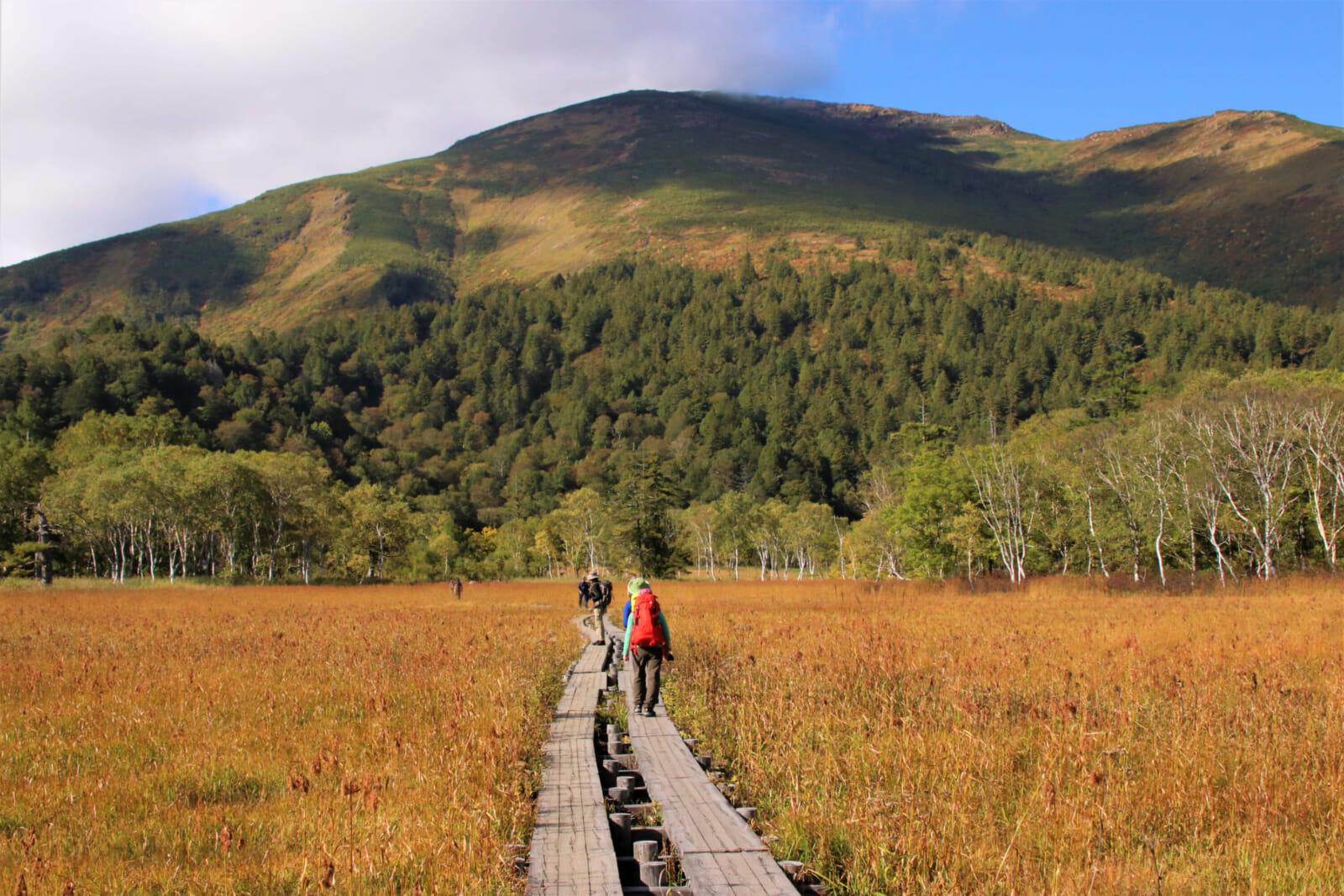
Oze National Park, Gunma-Fukushima-Niigata-Tochigi
Oze is famous for its expansive wetlands and is one of Japan’s most beloved hiking destinations. In autumn, the marshlands are covered in golden grass, and the surrounding mountains are ablaze with color. The Ozenuma Pond and Ozegahara Marshland offer relatively easy hikes with stunning views of the changing seasons.
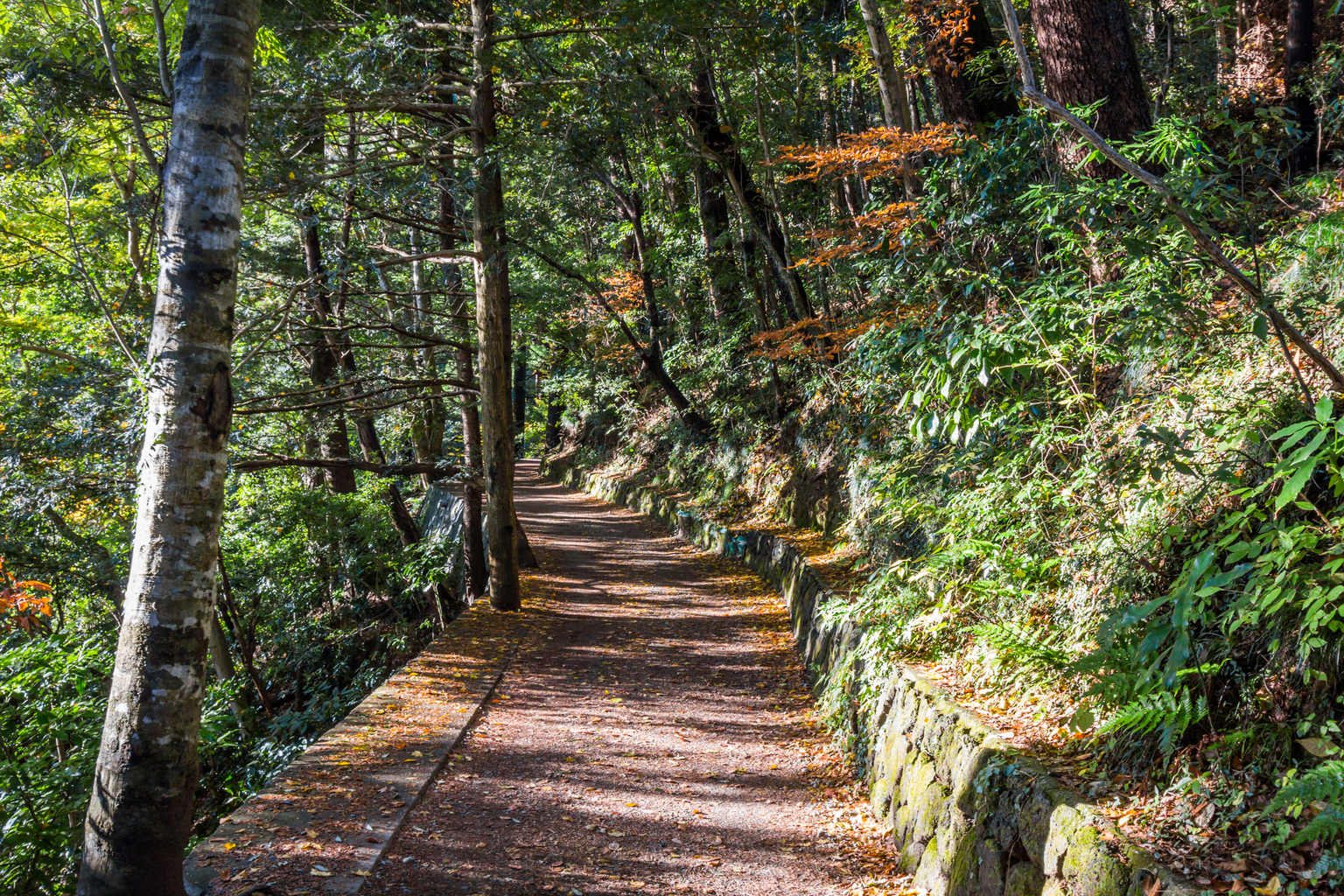
Mount Takao, Tokyo
Just an hour from central Tokyo, Mount Takao is a popular hiking destination that offers both convenience and natural beauty. The Takao Trail, which leads to the Yakuoin Temple and the summit, provides sweeping views of the city and, on clear days, even Mount Fuji.
Autumn weather in the mountains can be unpredictable, with temperatures varying significantly between morning and afternoon. Dress in layers that can be easily added or removed as needed. A lightweight, waterproof jacket is essential, as afternoon rain showers are common. Some trails, especially in national parks like Daisetsuzan and Oze, are remote and require proper preparation. Ensure you have a map, enough water and snacks, as well as information about the trail’s difficulty and duration.
Attending Traditional Festivals
September is filled with lively matsuri that showcase Japan’s rich cultural heritage. From energetic float races to peaceful lantern ceremonies, there’s something for every type of traveler.
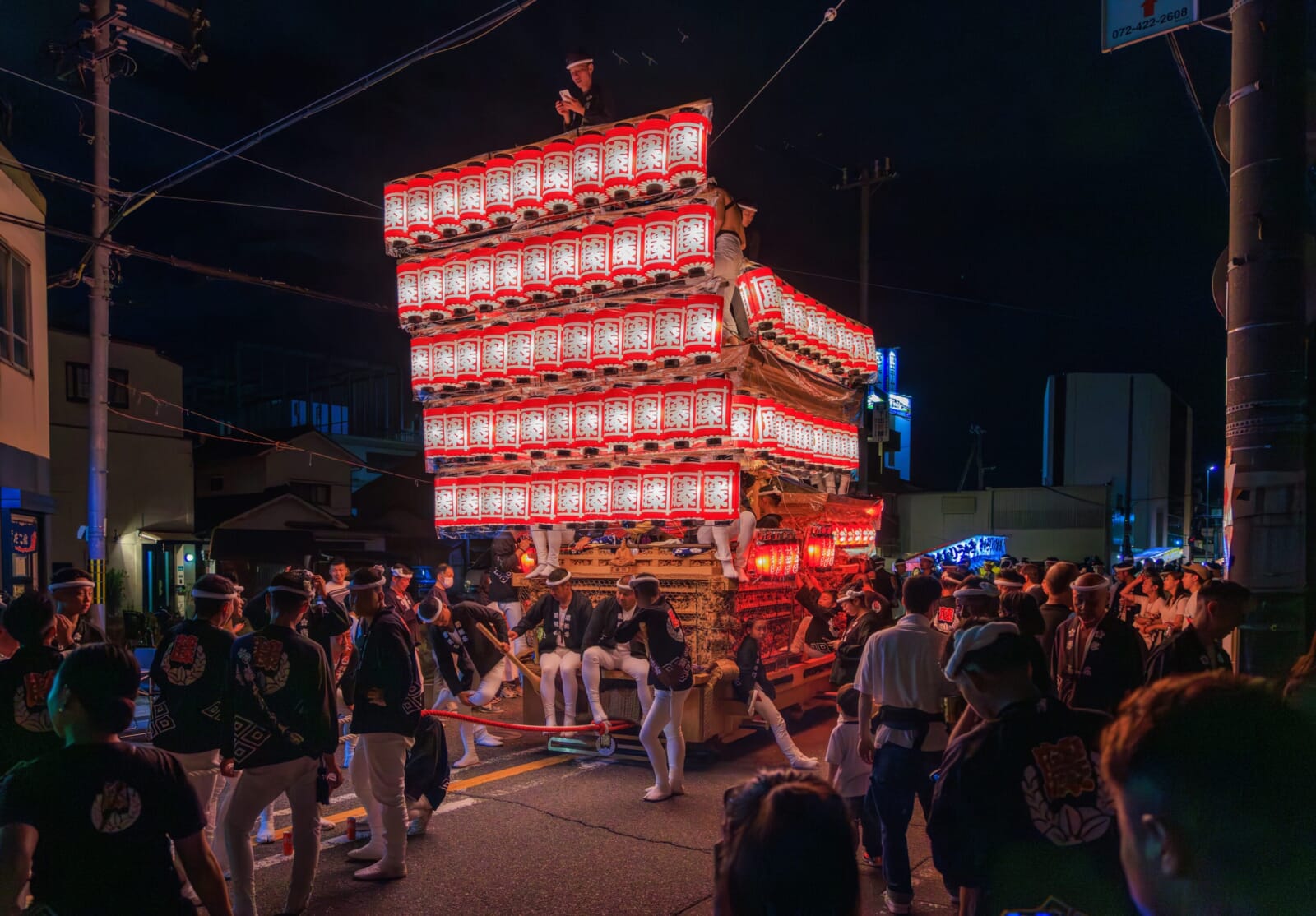
Kishiwada Danjiri Matsuri, Osaka
Held in the lively city of Kishiwada, this festival is renowned for its thrilling danjiri , or wooden float, races. These massive floats, each weighing several tons, are pulled through the narrow streets by teams of participants. The event is a true test of strength, coordination and community spirit, as the teams race at breakneck speeds, navigating sharp corners with incredible precision. The danjiri are works of art, adorned with intricate carvings and vibrant colors, making this festival as visually stunning as it is exhilarating.
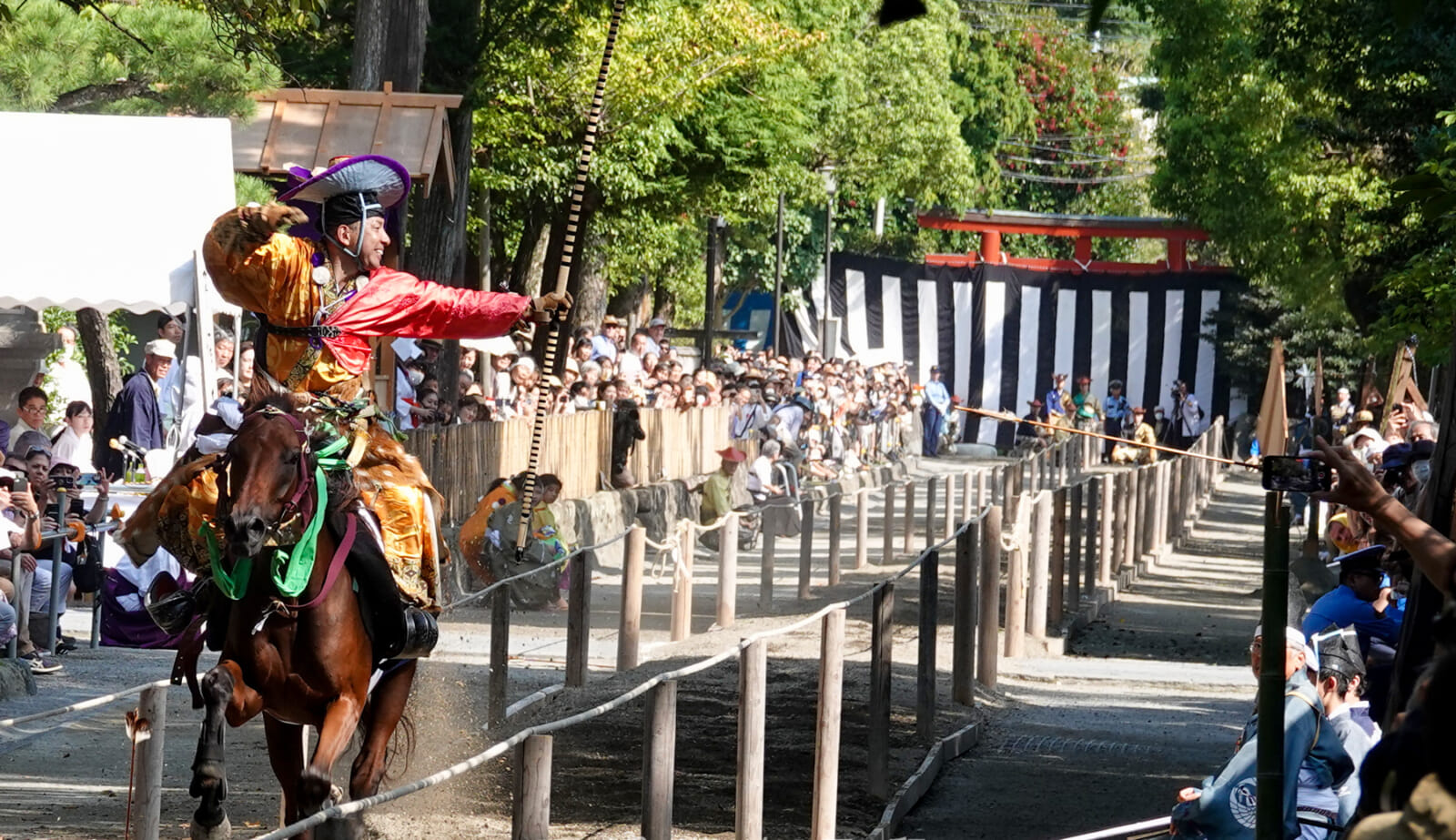
Tsurugaoka Hachimangu Reitaisai Festival, Kamakura, Kanagawa
Reitaisai at Tsurugaoka Hachimangu Shrine offers a more serene and reflective festival experience. The highlight of this event is the yabusame , a traditional Japanese martial art where archers on horseback shoot arrows at targets while galloping at full speed. The festival also includes a grand procession of mikoshi , or portable shrines, music and traditional dances, all set against the backdrop of Kamakura’s ancient shrines and temples.
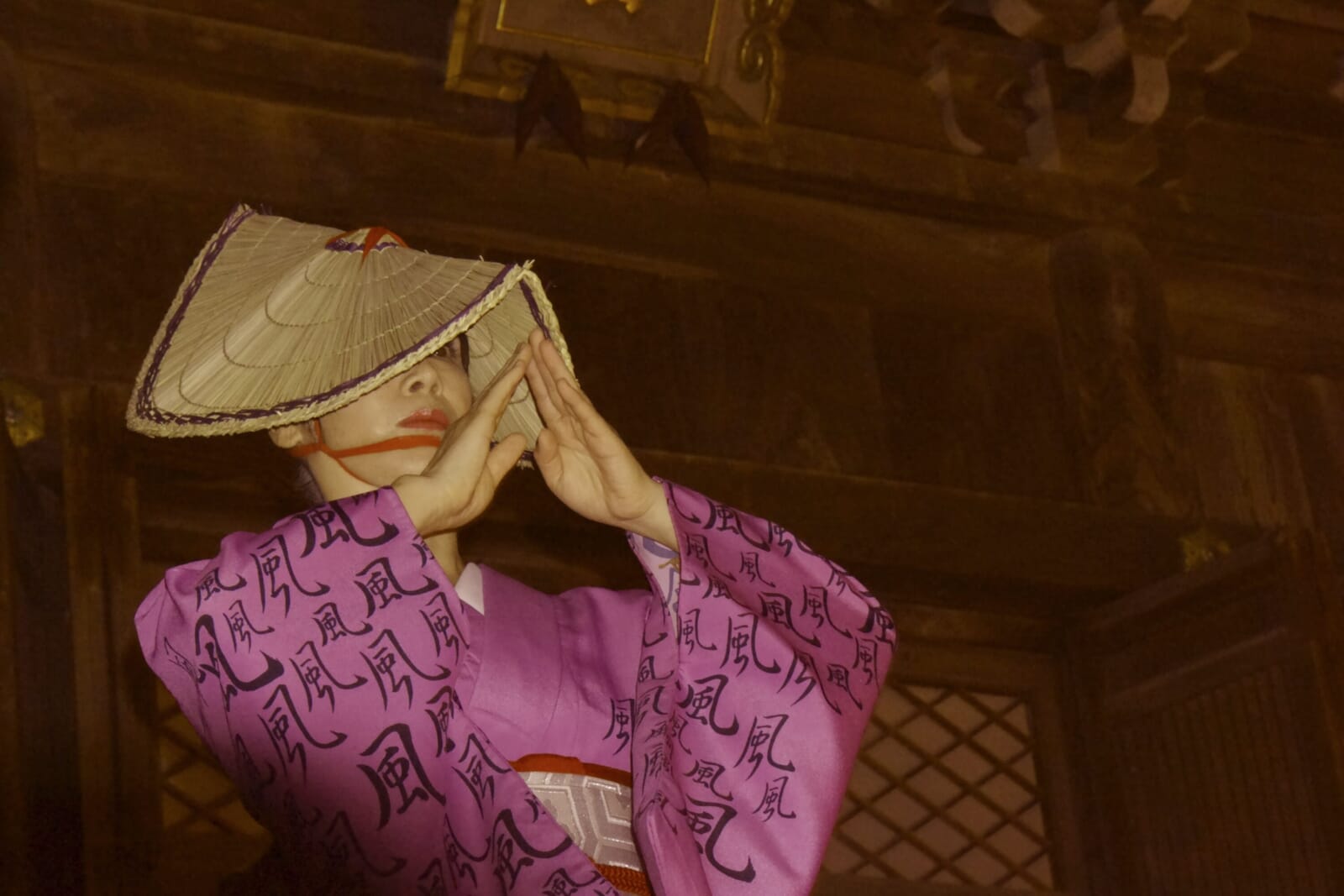
Owara Kaze no Bon, Toyama
This enchanting festival in the small town of Yatsuo, Toyama Prefecture, is a celebration of the wind and the harvest. The town’s streets are lined with paper lanterns, casting a warm, golden glow over the nighttime festivities. The main attraction is the Owara dance , a slow and graceful performance that reflects the delicate beauty of the season. Dancers in traditional kimono and wide-brimmed hats move in unison, their movements gentle and flowing, as if carried by the wind itself. The accompanying music, played on shamisen and kokyu , adds a hauntingly beautiful soundtrack to the evening.
Popular festivals like Kishiwada Danjiri and the Nihonmatsu Lantern Festival attract large crowds, so arriving early is essential to secure a good viewing spot. Even in September, festival days can be long and warm, especially in crowded areas. Carry a bottle of water and stay hydrated, especially if you plan to participate in or watch active events like float-pulling or processions.
Top Destinations To Visit in September
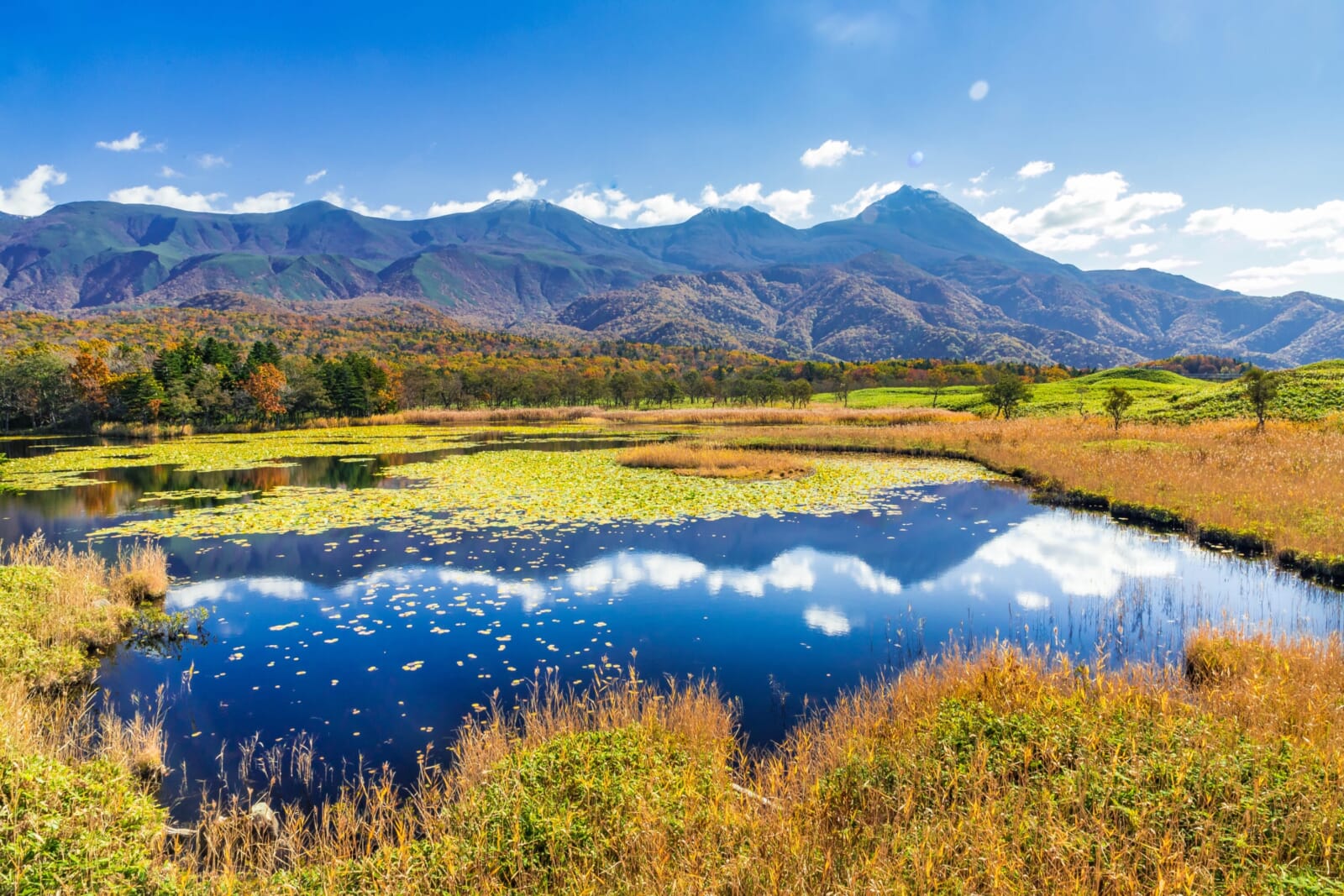
Shiretoko Peninsula
Located on the eastern edge of Hokkaido, the Shiretoko Peninsula is a UNESCO World Heritage Site renowned for its untouched wilderness and natural beauty. The peninsula is home to a rich variety of wildlife, including brown bears, deer and foxes, and offers breathtaking views of rugged cliffs, waterfalls and the Sea of Okhotsk. The five Shiretoko lakes, surrounded by dense forests, are especially picturesque during this time of year. Take a boat cruise along the coast to fully appreciate the dramatic landscape, or hike one of the many trails that offer panoramic views of the autumn foliage.

Furano and Biei
Known for its stunning flower fields in summer, Furano transitions into a picturesque autumn landscape in September. While the lavender season has just ended, the region is now adorned with patches of cosmos, dahlias and sunflowers that add bursts of color against the backdrop of rolling hills. Nearby Biei, with its undulating fields and iconic Shirogane Blue Pond , offers equally breathtaking views. The hills of Biei, often compared to Tuscany, are a mosaic of autumn colors, perfect for leisurely drives or cycling. Don’t miss the Panorama Road, which offers spectacular vistas of the patchwork fields against the backdrop of Mount Tokachi.
Cuisine & Culture
Hokkaido is famous for its fresh seafood, and September is an excellent time to sample some of the best. Try Hokkaido’s signature dishes, such as crab and ikura (salmon roe) and uni (sea urchin). Head to the coastal cities such as Otaru or Hakodate for seafood markets, where you can enjoy these delicacies straight from the sea. Another must-try is the local specialty, soup curry, a flavorful dish that combines a spiced broth with vegetables, meat and rice. September is also the time for local harvest festivals, where you can experience Hokkaido’s rich agricultural heritage. Attend events like the Furano Wine Festival , where you can sample locally produced wine while enjoying live music and food stalls.
Hokkaido Tips & Recommendations
Hokkaido’s beauty lies in its vast, open landscapes, and the best way to explore them is by car. Renting a car gives you the flexibility to visit remote areas like Furano and Shiretoko at your own pace.
Kyoto in September offers a mix of lingering summer warmth and the start of cooler autumn days, making it perfect for temple and garden visits. The city’s famous sites like Kinkakuji, Fushimi Inari Shrine and Arashiyama Bamboo Forest are slightly less crowded than in peak seasons.

Kinkakuji (Golden Pavilion)
In September, Kinkakuji’s shimmering gold leaf exterior contrasts beautifully with the deep greens of the surrounding pines. The reflection of the pavilion in the mirror-like Kyokochi Pond is particularly striking in the soft, golden light of late afternoon. Take a quiet stroll around the garden, where the pathways meander through meticulously manicured landscapes.
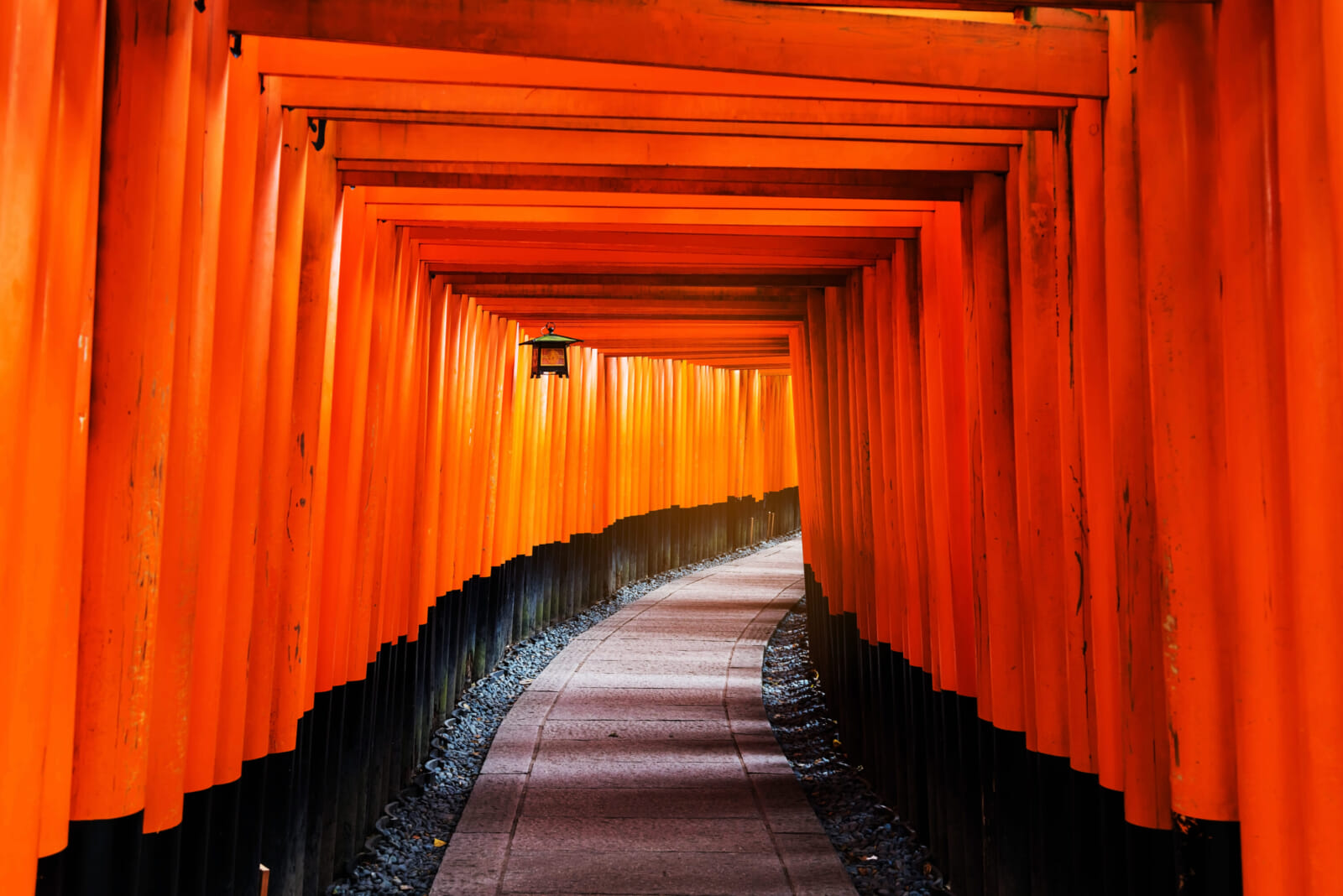
Fushimi Inari Shrine
Famous for its thousands of vermilion torii gates, Fushimi Inari is a must-visit in any season, but September offers a slightly more tranquil experience as the summer crowds dissipate. The cooler weather makes the hike up Mount Inari more comfortable, and the forested paths are shaded and peaceful. As you ascend, you’ll encounter smaller shrines, stone fox statues and the occasional glimpse of Kyoto’s cityscape below, all framed by the vivid torii gates.
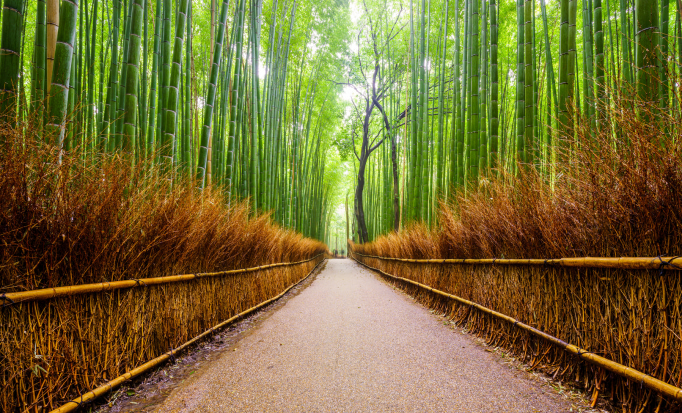
Arashiyama Bamboo Forest
In the early mornings of September, the Arashiyama Bamboo Forest is bathed in soft, filtered light, creating an almost ethereal atmosphere. The towering bamboo stalks, gently swaying in the breeze, create a natural symphony that’s both calming and awe-inspiring. After wandering through the grove, cross the Togetsukyo Bridge, where the Katsura River flows serenely beneath.
Kyoto is the birthplace of kaiseki , a traditional multi-course meal that is as much about aesthetics as it is about taste. September’s kaiseki menus reflect the changing seasons, with dishes featuring seasonal ingredients like matsutake mushrooms, sweet potatoes and chestnuts. As the evenings begin to cool in September, there’s no better comfort food than yudofu , a simple yet flavorful tofu hot pot. Made with Kyoto’s famously soft tofu, the dish is served with a variety of dipping sauces and seasonal vegetables.
Kyoto Tips & Recommendations
Kyoto is a city best explored on foot, with its narrow streets, hidden alleys and numerous temples and gardens. Wear comfortable shoes to make the most of your day, especially if you plan to visit multiple sites. For a truly immersive experience, consider staying in a traditional ryokan. These Japanese inns offer tatami mat rooms, futon beds and often include kaiseki meals. Staying in a ryokan also allows you to enjoy the seasonal changes up close, as many ryokans feature beautiful gardens that reflect the natural beauty of Kyoto.
Nikko is rich in history and full of stunning nature, making it a popular place to-visit in September.
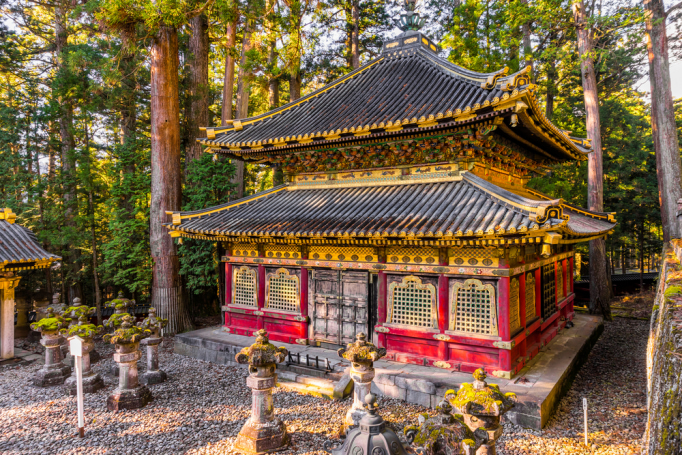
Nikko Toshogu Shrine
The crown jewel of Nikko, Toshogu Shrine is a UNESCO World Heritage Site that dazzles with its elaborate carvings, gold leaf decorations and intricate woodwork. Dedicated to Tokugawa Ieyasu, the founder of the Tokugawa Shogunate, the shrine is surrounded by ancient cedar trees. Be sure to visit the famous Nemuri Neko ( Sleeping cat carving ) and the Five-Story Pagoda , both of which are iconic symbols of Toshogu’s artistic and spiritual significance.
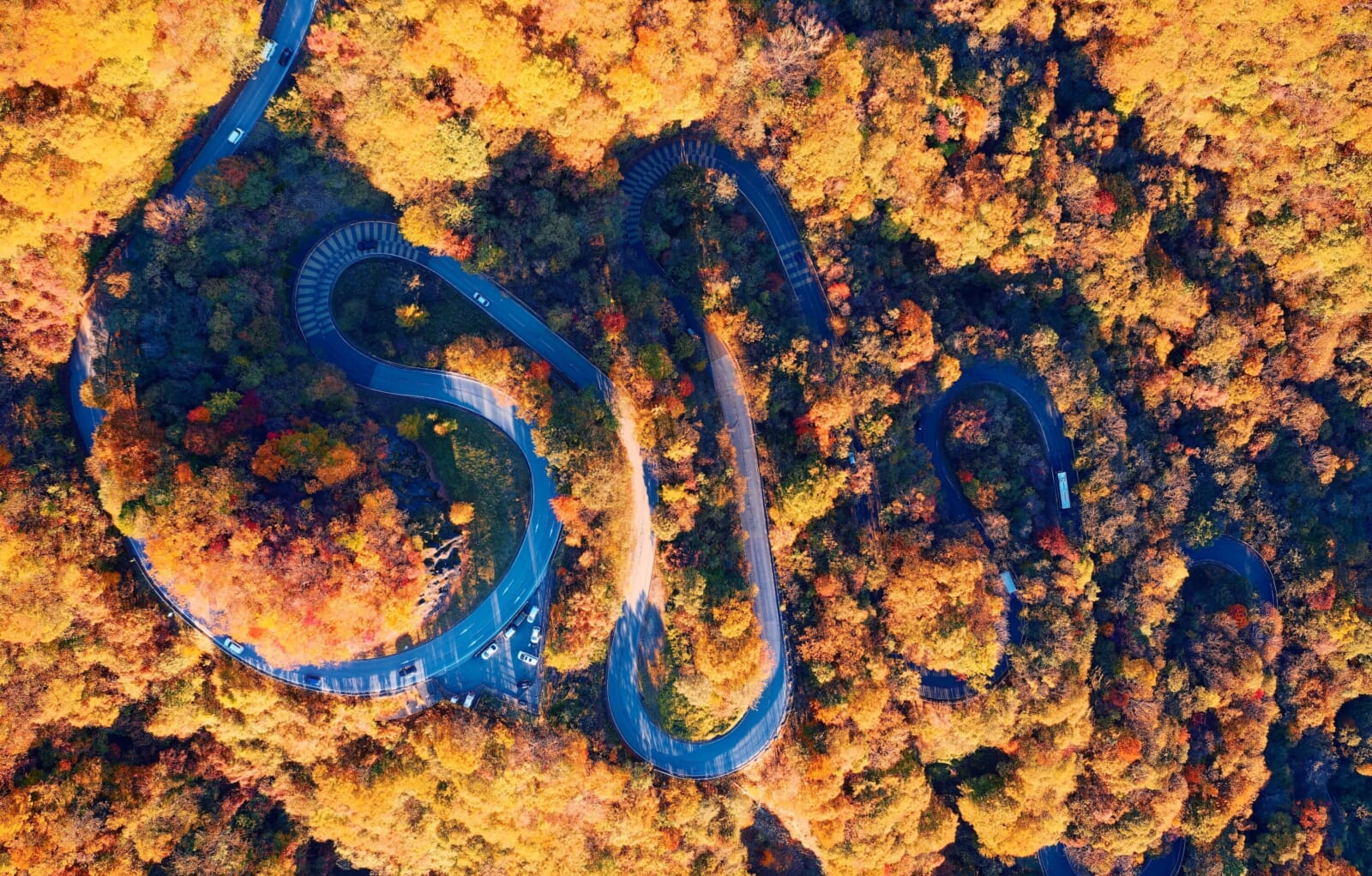
Irohazaka Winding Road
The Irohazaka Winding Road is an exhilarating drive that offers some of the most breathtaking views in Nikko. Comprising 48 hairpin turns that ascend the mountains, this road connects the lower town of Nikko with the Okunikko region. In September, as you navigate the twists and turns, you’ll be treated to panoramic vistas of the surrounding mountains, which begin to light up with the first touches of autumn foliage. The journey culminates at the Akechidaira Ropeway Observation Deck , where you can take in sweeping views of the Kegon Falls and Lake Chuzenji.
Tochigi Prefecture is known for its high-quality sake, thanks to the pure mountain water and cool climate. In Nikko, you can visit local breweries to sample a variety of sake, from light and crisp varieties to richer, more full-bodied brews. Many breweries offer tours where you can learn about the traditional sake-making process and the importance of local ingredients. After a day of exploring, there’s nothing more relaxing than soaking in one of Nikko’s many hot spring baths. The mineral-rich waters are said to have healing properties, and the outdoor baths offer stunning views of the surrounding nature. Yunishigawa Onsen , in particular, is a charming hot spring village where you can enjoy a quiet and rejuvenating experience surrounded by mountains.
Nikko Tips & Recommendations
To enjoy the tranquility of Nikko’s most famous sites, such as Toshogu Shrine and Kegon Falls, it’s best to visit early in the morning before the crowds arrive.
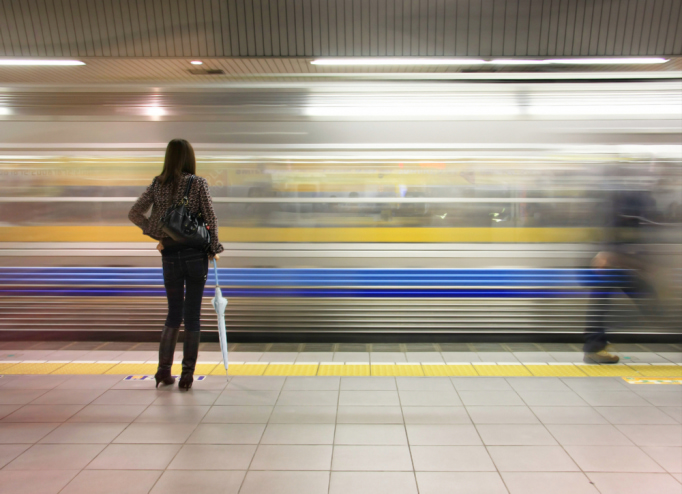
Travel Tips and Recommendations
Transportation.
Despite the increase in price, the Japan Rail Pass (JR Pass) is still a good option for tourists planning to travel long distances, offering unlimited rides on JR trains, including the Shinkansen. It’s particularly cost-effective for trips between major cities like Tokyo, Kyoto and Osaka. For island destinations like Okinawa, domestic flights are quickest, with budget carriers like Peach Aviation offering frequent connections. Ferries are an option for a scenic route to Okinawa and smaller islands. For city travel, IC cards (Suica, Pasmo) streamline transit on trains, buses and even at convenience stores.
- JR Pass: https://japanrailpass.net/en/
- Peach Aviation: flypeach.com
Accommodation Recommendations
Book early, especially during Silver Week. Traditional ryokan offer an authentic experience with tatami rooms and hot spring baths, while minshuku (family-run inns) and temple lodgings provide a cultural stay. In cities, modern hotels and guesthouses cater to all budgets.
Packing Tips
Pack light layers for fluctuating temperatures and bring a rain jacket or umbrella for unexpected showers since typhoon season is in September. Comfortable, easy-to-remove shoes are ideal for visiting temples.
Budget Planning
Use regional rail passes for specific areas to save money on transportation. Look for discount tickets and combination passes for museums and attractions. Keep some cash on hand for rural areas and small purchases.
Regional Rail Passes: https://www.jrpass.com/regional-passes
Related Posts
- Alternative Beach Towns Near Tokyo (That Aren’t Kamakura)
- Alternative Bamboo Forests in Japan (That Are Not Arashiyama)
- Hokkaido Travel Guide: 4 Places to See Fall Foliage (Koyo)
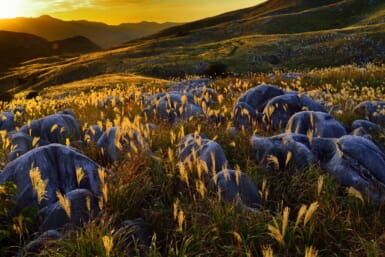
Fukuoka Fall Travel Guide: Must-See Foliage Spots & Cultural Experiences

Hokkaido Wine Tour: Get Spirited Away in Japan’s Wine Country
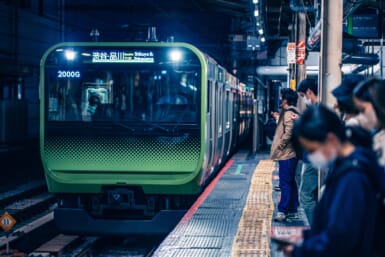
Japan Travel Made Easy: A Comprehensive Guide to Shinkansen and Subway Trains
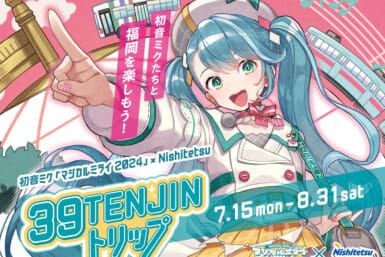
Hatsune Miku Gets Her Own Train Station

Tokyo Ballet's "The Kabuki": East Meets West in a Powerful Ballet Experience

A Gourmet Experience in the Heart of the Forest
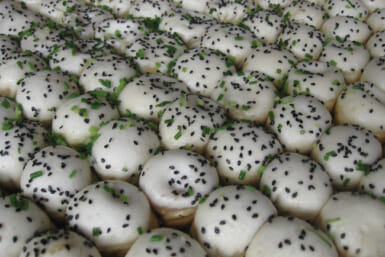
Enjoy a Shanghai Summer With These 7 Delicious Dishes

A Complete Guide to Chiyoda City: What to Do in Akihabara, Jimbocho and More

17 Aug 2024 - 4 min read
5 Easy Ways: Travel from Tokyo to Osaka
Having a wonderful experience in Tokyo makes you crave to enjoy another city in Japan. So, here is the easy way to travel from Tokyo to Osaka . Basically, many people might be thinking about using Shinkansen. But, there are still many transportation options for you, such as by plane or car, the rest is based on your choice.
Tokyo and Osaka are two of Japan's finest cities, each providing a distinctive fusion of food, culture, and lifestyle. Osaka is renowned for its lively and energetic populace, and vibrant local culture, the city is more relaxed than in Tokyo. Osaka is also renowned for having a lively nightlife. Besides, Tokyo is already internationally influenced and modern, but still fusion with Japanese culture that is very strong in both cities.
Travel from Tokyo to Osaka
If you are wondering about the easy ways to travel from Tokyo to Osaka, we’re gonna unpack this for you. So, you can choose wisely which one of the transportation modes for you to take.
1. Shinkansen

In Japan, the Shinkansen is the quickest land transportation option. It can travel in the shortest amount of time to several stations. Usually, Shinkansen run ten to fifteen minutes, dozens of time a day. It's really comfortable and convenient transportation mode because the Shinkansen offers spacious seats, free Wi-Fi, and electrical outlets.
If you decide to go to Osaka from Tokyo by Shinkansen, you will leave from Tokyo Station to Shin-Osaka Station. The trip usually takes between 2,5 and 3 hours in total. So, here is the guide for you:
2. Overnight Buses

Overnight Buses
For a traveller, night buses are cheaper and simpler to go around. The buses go to Umeda, Namba, and Osaka Station from a number of locations in Tokyo, including Tokyo Station and Ikebukuro.
In addition to saving money on lodging and providing extra time for touring during the day, night buses also have more spacious seats with more legroom than standard buses, and some of them come with complimentary Wi-Fi and TVs to ensure that passengers have a comfortable journey for 8 to 9 hours until they arrive to Osaka.
3. By Plane

Fly from Tokyo to Osaka
Fly from Tokyo to Osaka is also another quickest method of transportation. The flight duration is only one hour and ten minutes. But, since you need to reserve time for boarding and security check, the total transportation time can be as long as 2 to 3 hours. And for the worst case, flights may be delayed due to weather conditions and other factors.
Nevertheless, for travellers or business travellers with little time, Tokyo to Osaka flights depart virtually every hour.
4. Local Train

Local trains are not Shinkansen
Local trains are not Shinkansen, it is usually not the first option for travellers because of their slow speed and frequent stops. In contracts, local trains in Japan will give you a distinctive travel experience to see lesser-known places and get a taste of the local way of life because they usually stop at more locations than simply the big cities.
Local trains depart at Tokyo or Ueno Station and make a few transfers from major Osaka stations like Osaka Station or Umeda Station. But, please make sure to think about train intervals and transfer times. You must plan your rail trip carefully, especially in distant places where train service is less regular.
5. Rent a Car

You can have flexibility and see Japan's smaller towns and rural areas by renting a car from Tokyo to Osaka. The distinctive experiences and breathtaking vistas may make it worthwhile, even though it could be more costly and time-consuming than other modes of transportation. You can explore several attractions along the journey if you choose this option as well.
Here is the list of major car rental companies in Japan:
Remember that you'll require a Japanese driving licence or an international driving permit (IDP). The rental deposit also needs to be paid using the credit card. You can make a reservation on the rental company's website or directly rent from the Tokyo rental offices, though availability may vary. Depending on traffic and stops, the estimated travel time for you will be between six and eight hours. We advise you to go from Tokyo to Yokohama and then on to Shizuoka. You may detour here to enjoy in the gorgeous panorama of Mount Fuji. Continued to Nagoya prior to arriving at Osaka.
Flights to Osaka

Start from US$ 39.36
Seoul (ICN) to Osaka (KIX)
Thu, 19 Sep 2024

Peach Airline
Start from US$ 39.89
Nagasaki (NGS) to Osaka (KIX)
Sat, 7 Sep 2024

Jetstar Japan
Start from US$ 40.98
Tokyo (NRT) to Osaka (KIX)
Wed, 25 Sep 2024
Travelling Tips from Tokyo to Osaka
The thrill of travelling from Tokyo to Osaka offers flexibility and breathtaking scenery. For a quick and comfortable ride, you can take the Shinkansen; alternatively, think about taking an inexpensive overnight bus. Having a car rental might gives you the flexibility to visit undiscovered locations like Mount Fuji and Nagoya.
So, to get the best rates, especially during busy seasons, get your tickets in advance. Bring a portable charger for your electronics and light clothing to facilitate your travels. Savour local delicacies in both locations and remember to check the weather before you travel so that you pack accordingly. Always have the required travel documentation and your identification card with you.
To make your trip even more convenient, book your tickets and accommodations through Traveloka. With Traveloka , you can find the best deals on any tickets, nearby hotels , flights and more tourist attractions . Plus, you can read reviews and get travel tips to ensure you make the most of your visit. Start planning your adventure today with Traveloka and enjoy a hassle-free memorable trip!
Payment Partners
About Traveloka
- How to Book
- Help Center
Follow us on
- Airport Transfer
- Traveloka Affiliate
- Privacy Notice
- Terms & Conditions
- Register Your Accommodation
- Register Your Experience Business
- Traveloka Press Room
- Vulnerability Disclosure Program
Download Traveloka App

From Tokyo to Mount Fuji: A comprehensive two-week travel guide to Japan
I t’s Friday night and I’m sat in the corner of a dive bar in Hiroshima sipping a local plum wine and cheering on a group of three Japanese businessmen, dressed in full suit-and-briefcase attire, battling it out playing Pac-Man on an old arcade machine next to me.
I can’t help but wonder, has my Japan trip peaked?
Travelling across five main locations, the aim of my two-and-a-half-week trip is to immerse myself in Japanese culture, cuisine and history – and learn more about what this fascinating country has to offer .
It seems my idea isn’t the most original either – what with Japan now ranking as one of the highest trending destinations for 2024 , as well as recently being named the top spot for solo travellers.
For those considering a trip there soon, know that you can cram a lot into just a couple of weeks – mainly thanks to the country’s high-speed bullet trains, which whiz you from one location to the next.
For example, my 16-day holiday covered Tokyo, Mount Fuji, Kyoto, Osaka and Hiroshima – taking between 1-3 hours to jump from one location to the next. It’s also worth pointing out that now Japan Rail Pass prices have risen by 70%, it actually might be cheaper for you to pay for single journeys, depending on your route.
If the country’s bountiful offering is enough to make you feel overwhelmed, here’s a two-and-a-half-week itinerary mapped out for you…
Tokyo (1-5 days)
Our trip started in Tokyo , and for Japan first timers the sheer size of the city is likely to be your main takeaway – it was the first thing that blew me away when we touched down in Haneda airport. It’s the largest city by metropolitan area in the world, with a population of 37.3 million.
The best way to soak this up is by visiting one of the city’s many viewpoints and Shibuya Sky should be top of your list for the 360-degree open-air factor. Just be sure to book in advance and sunset is widely considered one of the best times to go, so you can witness the city skyline by day and night.
While visiting Shibuya be sure to tick off the Meiji Jingu shrine and the Shibuya Crossing, which is often dubbed as ‘the busiest pedestrian intersection in the world.’
One of our Tokyo highlights was the vibrant neighbourhood of Shinjuku, including the tranquil national garden (with the concrete jungle skyscrapers as the backdrop) as well as the tastiest, no-fuss (but delicious) ramen you’ll ever have at Tatsunoya, where the tonkotsu broth (pork bones and water) is simmered for 15 plus hours. Our two ramen bowls, plus a beer and two cokes, cost us just £15.
Food in Tokyo comes in two extremes, from authentic street food – like the sensational yakitori (grilled meat skewers) at Omoide Yokocho – to Michelin-starred dining , including the likes of Narisawa (which is the ultimate luxurious dining experience). Both showing the city’s offering through completely different culinary lenses.
Michelin-starred restaurant Est, located in Four Seasons Otemachi , was an absolute standout though – with wagyu, Hokkaido scallops and miso monkfish on the menu. This was my first time trying Japanese wine too – let alone a Japanese Chardonnay – and it was an unexpected delight.
You don’t see much Japanese wine in the UK, or even in other parts of the world for that matter. That’s because, as our sommelier tells us, the country’s produce is so good, winemakers prefer to share it with the population rather than export it en masse.
On the topic of drinks, while you’re at the Four Seasons a visit to award-winning VIRTÙ – headed up by the talented Keith Motsi – is a must. Keith’s passion for giving Japanese bars the attention they deserve shines through and his cocktail wizardry and outstanding drinks knowledge, as well as the doting bar staff, makes leaving this opulent Art Deco watering hole pretty impossible.
For a boozy night, bar-hop around Golden Gai, a network of six narrow alleys with little bars peppered throughout.
Tokyo checklist:
- Shibuja Sky for views of Tokyo
- Lunch at est (in the Four Seasons Otemachti)
- Shibuja crossing
- Shinjuku National garden
- Drinks at Virtu
- Eat yakatori at Omoide Yokocho
- Bar hop around Golden Gai
- Kabukiza Theatre
- Tokyo station
Mount Fuji (2 days)
It may be a slight detour from bullet train routes, but spending a portion of your trip in Japan’s natural beauty is a must. After all, what trip to the country would be complete without seeing the majestic Mount Fuji in all its glory? Among the Fuji Five Lakes – which are designated as a World Cultural Heritage – Lake Kawaguchiko is the easiest to access (a two-hour bus from Tokyo).
Once you’re there, Villa Hanz Glamping is the perfect base for the rural part of your itinerary, particularly with the 3,776-metre high stratovolcano as the backdrop to this resort.
This luxury glamping site (think bougie pods with heaters and mini fridges) will make you feel right at home, while the resort’s activity offering of hiking, kayaking and stargazing will ensure you make the most of rural retreat.
Kyoto (1-3 days)
My first impression of Kyoto was how it was the perfect example of old meets new, but the thing that stood out the most was simply how stunning it was – a respite from Tokyo’s concrete jungle.
The former Japanese capital has historic temples and sublime gardens nestled alongside bustling new food markets and shopping districts. It’s a city with a lot of natural beauty that also somehow spotlights the area’s rich history, from the Arashiyama Bamboo Forest to the ‘Golden Pavilion’.
If you tick off one attraction in Kyoto, let it be the famous Fushimi Inari-Taisha . The red shrine gates follow a pathway that wanders 4km up the mountain – which, after a whole day of sightseeing, was pretty knackering. Nevertheless, was worth it for the view at the top – even in the dark.
Kyoto is also an excellent spot to sample some of the country’s vast cuisine. Comfort food doesn’t get much better than the curry udon at Mimikou – where a Kyoto-style curry soup marries thick wheat noodles in a curry powder-thickened Japanese soup stock called ‘dashi’.
You also can’t visit Japan without trying traditional okonomiyaki (a Japanese teppanyaki, savory pancake dish made with cabbage, meat and cheese) and Kyo Chabana is the spot to sample it in Kyoto.
Kyoto checklist:
- Arashiyama Bamboo Forest
- The ‘Golden Pavilion’
- Fushimi Inari-Taisha
- Curry udon at Mimikou
- Okonomiyaki at Kyo Chabana
Hiroshima (2 days)
It might seem slightly out of the way, geographically, for a two-week Japan trip but believe me when I say this stop should definitely be on your itinerary. Plus, it’s only a tour-hour train on the trusty (literally, it’s never late) bullet train.
As someone who has always been interested in WW2 history, visiting Hiroshima felt more than just an itinerary pit spot, it felt like a necessity – and it was a sobering reminder of what took place at 8.15am on the morning of August 6 1945, and its aftermath.
The bomb obliterated nearly everything within a two kilometer radius – now the city’s re-built legacy urges one crucial message: never again.
The A-Bomb Dome, still in its original bombed-out condition with pieces of 1945 rubble on the ground, remains in tact – but really that’s it. Everything else has been rebuilt. Now there’s a well-manicured Hiroshima Peace Memorial Park and a Museum – which houses belongings and artefacts, and tells the stories of the victims.
But what caught me off-guard the most was the city’s incredible underground nightlife scene – dive bars like Mac Bar and Stevie Wonderland, in particular, where you can while away the hours listening to vinyls while sipping on local beers and traditional plum wine.
Hiroshima checklist:
- A-Bomb Dome
- Hiroshima Peace Memorial Park and a Museum
- Stevie Wonderland
Osaka and Nara (3-4 days)
An hour-and-a-half away from Hiroshima and on the way back to Tokyo, neon playground Osaka is the ideal spot for your trip’s finale.
What can only be described as Japan’s equivalent to Time Square, the Dōtonbori district comes alive at nighttime with eye-catching signage and riverside shops and restaurants.
A day trip to Nara Park will also see you get up close and personal with TikTok’s famous ‘polite’ deer, which bow to you in return for crackers.
Top tip, try to feed a solo deer, otherwise you might be subjected to a herd showdown, with multiple chasing you for your crumbs (trust me, I speak from experience here).
Osaka checklist:
- Dōtonbori district
- Day trip to Nara Park
My main takeaway from my two-week trip, however, is simply how everything is better in Japan: from self-flushing toilets and exceptional hospitality, to the highest standard of foods – beyond anything I’ve ever tasted.
It’s a country that’s stolen a piece of my heart – and has left me dreaming of those efficient bullet trains while I’m waiting 10 minutes for the dreaded Circle Line back home.
Where to stay in Japan:
From glass lifts, to hot spring baths and a swim over Tokyo, here are six hotels that made my two-week holiday to Japan …
Bellustar Tokyo
Located in the heart of Shinjuku, this lavish skyscraper hotel is an excellent base point for a Tokyo first-timer or a seasoned visitor. The 97-room hotel is spread out across three floors, which also houses the five deluxe penthouses (some of which are double-storey)
panpacific.com
Hotel Groove
While Bellustar occupies the upper half of Tokyo’s 48-storey Kabukicho tower, Hotel Groove lies in the lower one – and it’s the quirky and playful younger sibling of the two – with smaller rooms, bar and dining space, JAM17 and a roof terrace.
panpacific.coml
Four Seasons Otemachi
For a hotel that ticks all the boxes, look no further than the Four Seasons Otematchi. From a Michelin-star restaurant to an award-winning bar, not to mention sensational views of Tokyo.
fourseasons.com/otemachi
Villa Hanz Glamping
Villa Hanz offers rural respite from city chaos. With both glamping and villa options available, you can stay with views of the 3,776-metre high stratovolcano. The site’s Pao pods offers a camping experience with a luxury twist.
gv-hanz.com/en/
Roku Kyoto, LXR Hotels & Resorts
This spot is nestled in rolling foothills of the ancient capital’s north western mountain range, offering a natural sanctuary. Guests have five different room types to choose from. A firm favourite, however, is the Garden Deluxe rooms, which come with their own small Japanese-style garden, plus a roomy bath inside supplied with hot spring onsen water.
hilton.com/en/hotels/itmolol-roku-kyoto
Hiroshima and Osaka
Hilton Hiroshima and Hilton Osaka
For creatures of habit when they’re abroad, Hilton has a number of hotels across Japan, each offering something a little different.
Hilton Hiroshima for example, is one of the newest additions. The hotel is also situated in the centre of Hiroshima City, so is the ideal base point for exploring what this destination has to offer.
Hilton Osaka is another great choice, nestled amongst the city’s vibrant Umeda district and train station – so is particularly convenient if you’re planning on heading to Nara for the day.
Getting there:
Flights to Japan start from £460 return on Skyscanner with one stopover.
Do you have a story to share?
Get in touch by emailing [email protected] .
For even more unmissable travel news, features and inspiration in your inbox each week, sign up to Metro's The Getaway newsletter
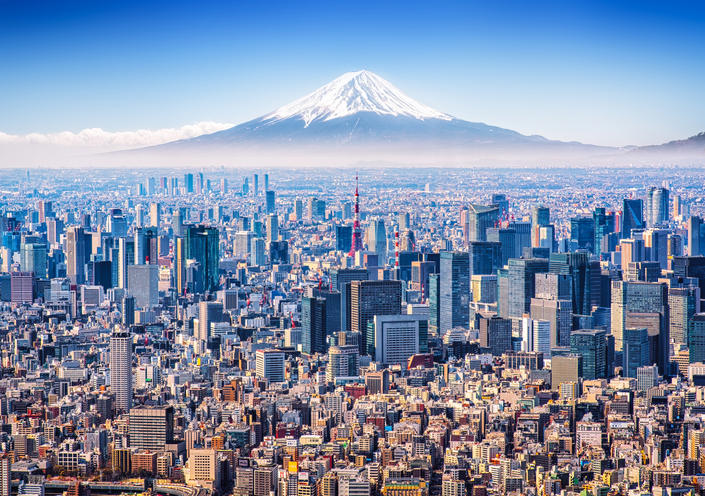
- Today's news
- Reviews and deals
- Climate change
- 2024 election
- Newsletters
- Fall allergies
- Health news
- Mental health
- Sexual health
- Family health
- So mini ways
- Unapologetically
- Buying guides
- Labor Day sales
Entertainment
- How to Watch
- My watchlist
- Stock market
- Biden economy
- Personal finance
- Stocks: most active
- Stocks: gainers
- Stocks: losers
- Trending tickers
- World indices
- US Treasury bonds
- Top mutual funds
- Highest open interest
- Highest implied volatility
- Currency converter
- Basic materials
- Communication services
- Consumer cyclical
- Consumer defensive
- Financial services
- Industrials
- Real estate
- Mutual funds
- Credit cards
- Balance transfer cards
- Cash back cards
- Rewards cards
- Travel cards
- Online checking
- High-yield savings
- Money market
- Home equity loan
- Personal loans
- Student loans
- Options pit
- Fantasy football
- Pro Pick 'Em
- College Pick 'Em
- Fantasy baseball
- Fantasy hockey
- Fantasy basketball
- Download the app
- Daily fantasy
- Scores and schedules
- GameChannel
- World Baseball Classic
- Premier League
- CONCACAF League
- Champions League
- Motorsports
- Horse racing
New on Yahoo
- Privacy Dashboard
Storm creeps through Japan, bringing heavy rainfall to some spots for days
TOKYO (AP) — Tropical Storm Shanshan brought torrential rain Sunday to Japan ’s Shizuoka area, 180 kilometers (110 miles) southwest of Tokyo, as weather officials warned the storm would linger for several more days.
Shanshan , packing winds of 65 kph (40 mph), made landfall Thursday , leaving landslides, flooded rivers, torn branches and scattered debris in its path. In southwestern Japan, people were busy cleaning up muddied homes and throwing out broken appliances.
The storm is so far connected with at least six deaths , including three people who were trapped in a mudslide. It left one person missing and 127 people injured, according to Japanese public broadcaster NHK, which compiles reports from local governments.
Shanshan was traveling extremely slowly and barely moving at all as of Sunday morning, the Japan Meteorological Agency said.
It triggered rainfall in an extensive area , even in places not in its path, such as the northernmost main island of Hokkaido, according to the agency.
Some homes became lopsided as roofs caved in, while vehicles passed through brown water.
Shanshan initially crept across the southwestern Japanese islands of Kyushu and Shikoku, then reached the main island of Honshu, meandering into coastal waters at one point but later moving back onto land.
Landslide warnings were issued in parts of Hamamatsu and Izu cities in Shizuoka Prefecture and Yokohama in Kanagawa, a port city near Tokyo, as well as at-risk spots in Tokyo. Tokyo in recent days saw mostly cloudy skies, speckled with moments of sudden and intense showers.
People living in areas at risk for landslides were told to evacuate to local stadiums and community centers as a cautionary measure. Shanshan’s exact route remains uncertain. It's expected to gradually move north Monday, then out over the Sea of Japan.
Yuri Kageyama is on X: https://x.com/yurikageyama
Recommended Stories
Typhoon shanshan leaves at least 3 dead in japan as storm brings 'unprecedented' winds, storm surge and rainfall.
Typhoon Shanshan made landfall in Southwest Japan, causing at least three deaths, hundreds of thousands of power outages and flight cancellations as heavy winds and rainfall bear down on the country.
I test home appliances for a living, and this powerful Craftsman hand vacuum makes cleaning a piece of cake
It weighs less than five pounds, yet delivers industrial-strength suction.
Caitlin Clark's next WNBA game: How to watch the Indiana Fever vs. Dallas Wings today
Watch Caitlin Clark's next WNBA game when the Indiana Fever play the Dallas Wings today in Texas.
US Open 2024: How to watch the Taylor Fritz vs. Casper Ruud tennis match today
American Taylor Fritz will face Norway's Casper Ruud in the fourth round at the US Open tennis tournament. Here's how to watch the match.
How to wash a car
Washing your car is something you can do yourself and you can do a much better job with the proper tools and instructions than a standard machine auto wash.
US Open 2024: How to watch the Coco Gauff vs. Emma Navarro tennis match today
Reigning US Open champion Coco Gauff will play Emma Navarro in the fourth round at this year's tournament. Here's how to watch the match.
White Sox tie franchise record with 106th loss, with 1 more month to go
If the White Sox lose Sunday, they will have the three longest losing streaks in MLB this season.
Chicago Sky's Diamond DeShields responds to toxic fan after hard foul on Caitlin Clark
An incident involving Cailtin Clark and the Sky got ugly. Again.
14 tried-and-true hacks from world travelers — plus their packing essentials
From minimizing checkpoint slowdowns to getting quality shut-eye anywhere, here are the travel secrets we swear by.
Shoppers say these sandals are comfier than Birkenstocks — they're down to $30 for Labor Day
They feature ample arch support and a contoured footbed, and they've amassed over 58,000 five-star reviews.
The best podiatrist-approved Labor Day sales on sneakers, shoes and sandals
Our expert-vetted picks offer comfort, support and style — and some are over 50% off during this deals event.
Olivia Wilde, 40, loves CeraVe, and its bestselling eye cream is on sale for just $8 for Labor Day
'Gentle and simple': A celeb- and derm-approved brand that battles fine lines? There's a reason for 41,000+ 5-star reviews — and it's over 60% off.
'Fitted in the right spots': This 'wonderfully flattering' T-shirt is down to just $18
More than 27,000 five-star shoppers say this is the wardrobe staple you need in multiple colors.
This top-rated shacket is 'super soft' and at an all-time low of $14 for Labor Day
Yes, this price is for real! Cozy up to the best deal we've ever seen for this stylish staple.
Engadget review recap: The Pixel 9 phones are surprisingly great, in spite of their price
A recap and some insight on how the Engadget team reviewed the Pixel 9 series and the Dell XPS 13 Copilot+ PC.
This week in Bidenomics: Maybe things are okay?
Confidence surveys show the inflation shock is finally fading and some Americans are feeling more hopeful.
Toyota and BMW to upgrade fuel cell alliance
The two automakers will sign a memorandum of understanding on the partnership next week, with an official announcement set for Sept. 5, Nikkei Asia reported.
What the gap between retirement expectations and reality tells us
The chasm between how much Americans think they need for retirement and what retirees say they can live on is significant, according to recent surveys.
Formula 1: Kimi Antonelli to replace Lewis Hamilton at Mercedes
The seven-time champion is heading to Ferrari in 2025.
Savings interest rates today, August 31, 2024 (best account provides 5.50% APY)
If you’re searching for today’s best savings interest rates, we’ve narrowed down some of the top offers. Learn more about savings interest rates today.
Storm creeps through Japan, bringing heavy rainfall to some spots for days
Tropical Storm Shanshan is bringing torrential rain to Japan’s Shizuoka area, 110 miles southwest of Tokyo
TOKYO -- Tropical Storm Shanshan brought torrential rain Sunday to Japan ’s Shizuoka area, 180 kilometers (110 miles) southwest of Tokyo, as weather officials warned the storm would linger for several more days.
Shanshan , packing winds of 65 kph (40 mph), made landfall Thursday , leaving landslides, flooded rivers, torn branches and scattered debris in its path. In southwestern Japan, people were busy cleaning up muddied homes and throwing out broken appliances.
The storm is so far connected with at least six deaths , including three people who were trapped in a mudslide. It left one person missing and 127 people injured, according to Japanese public broadcaster NHK, which compiles reports from local governments.
Shanshan was traveling extremely slowly and barely moving at all as of Sunday morning, the Japan Meteorological Agency said.
It triggered rainfall in an extensive area , even in places not in its path, such as the northernmost main island of Hokkaido, according to the agency.
Some homes became lopsided as roofs caved in, while vehicles passed through brown water.
Shanshan initially crept across the southwestern Japanese islands of Kyushu and Shikoku, then reached the main island of Honshu, meandering into coastal waters at one point but later moving back onto land.
Landslide warnings were issued in parts of Hamamatsu and Izu cities in Shizuoka Prefecture and Yokohama in Kanagawa, a port city near Tokyo, as well as at-risk spots in Tokyo. Tokyo in recent days saw mostly cloudy skies, speckled with moments of sudden and intense showers.
People living in areas at risk for landslides were told to evacuate to local stadiums and community centers as a cautionary measure. Shanshan’s exact route remains uncertain. It's expected to gradually move north Monday, then out over the Sea of Japan.
Yuri Kageyama is on X: https://x.com/yurikageyama
Popular Reads

Catholics face a shortage of priests. But one Indonesian seminary is overwhelmed with applicants
- Aug 31, 1:55 AM

Mexico suggests US made a deal with Mexican drug lord to get his brother transferred from prison
- Aug 29, 8:02 PM

Arrest made in couple missing from nudist ranch
- Aug 30, 11:33 AM

Woman found dead in her cubicle
- Aug 29, 7:16 PM

Stranded man was hiking for World Central Kitchen
- Aug 29, 11:51 AM
ABC News Live
24/7 coverage of breaking news and live events

This content requires the base game JR EAST Train Simulator on Steam in order to play.

Sign in to add this item to your wishlist, follow it, or mark it as ignored

Downloadable Content
Buy jr east train simulator: utsunomiya line (kuroiso to tokyo) e233-3000 series, about this content.
- The Shinkansen detainment line /Kuroiso〜Nasushiobara As Nasushiobara Station approaches, the Shinkansen Nasushiobara detainment line can be seen on the right.
- Tunnel /Nozaki〜Yaita You will pass through the first and last tunnel on the Utsunomiya Line section.
- Karasuyama Line merges /Ujiie~Hōsyakuji The Karasuyama Line joins from the left.
- Kinugawa River/Hōsyakuji〜Okamoto Cross the Kinugawa River.
- Utsunomiya Station This is the station where the Utsunomiya Line operation schedule is currently divided. It is also a transfer station for the Nikkō Line. The area where trams and commercial facilities are now located used to be a railway line.
- Nikkō Line Farewell/Utsunomiya〜Suzumenomiya After departing Utsunomiya Station, the train runs parallel to the Nikkō Line for a while, then the Nikkō Line splits off to the right.
- Utsunomiya Freight Terminal Station /Suzumenomiya〜Ishibashi The train passes through the Utsunomiya Freight Terminal Station, which has a long north-south yard.
- Oyama train car center/ Jichi Medical University〜Koganei The Oyama train car Center is on the left.
- Oyama Shinkansen train car Center /Koganei~Oyama As Oyama Station approaches, the Oyama Shinkansen train car Center is on the right.
- Oyama Station It is a transfer station for the Mito Line and the Ryōmō Line. You can see the complex of tracks on the premises.
- Row of cherry trees /Nogi~Koga Departing from Nogi Station, the upper and lower tracks are separated from each other as a remnant of the former middle line. There is also a row of cherry blossom trees along the elevated railway near Koga Station, which bloom beautifully during the cherry blossom season.
- Tone River /Koga〜Kurihashi Cross the Tone River.
- Kurihashi Station This station is a transfer station with the Tōbu Nikkō Line. There is a connecting line with Tōbu Railway, which is used by JR and Tōbu direct limited express trains. It is also sometimes used by Tōbu Railway's A-class transportation.
- Higashi-washinomiya Station Due to the former location of the freight yard, the up line is elevated and the down line is above ground, making it a special structure.
- Kuki Station This station is a transfer station with the Tōbu Isesaki Line. In the past, a freight yard extended between the JR and Tōbu Railway platforms, where JR and Tōbu Railway freight was received and delivered.
- Higashi-Ōmiya Yard /Hgashi-Ōmiya〜Toro Higashi-Ōmiya Yard Station and JR East Tōkyō-Ōmiya General Training Center are on the right.
- Tōhoku Line’s detour track /Toro〜Ōmiya Tōhoku Line's detour track runs alongside on the right.
- Tōbu Urban Park Line approaches /Toro〜Ōmiya The Tōbu Urban Park Line approaches from the left.
- Ōmiya Station It is a terminal station that connects the Tōkyō metropolitan area with the Tōhoku, Jōshinetsu, and Hokuriku regions. The Ōmiya General Rolling Stock Center and JR Freight Ōmiya Railroad Freight Depot are located here, making it a railroad town.
- Ōmiya Yard Station /Ōmiya~Saitama-Shintoshin The Ōmiya Yard Station is located on the right. There is also a “Cherry Blossom of Ōmiya Yard” on the premises, and although it is only open for a short time during the blooming season, you can feel the season from the train window.
- Saitama Train car Center/Urawa〜Kawaguchi Near Minami-Urawa Station is the Saitama Train car Center, a rail yard for the Keihin-Tōhoku Line.
- Kawaguchi Station Although only Keihin-Tōhoku Line trains stop at this station, there is a connecting line between passenger and freight lines so that the line to be operated can be changed in the event of a schedule disruption.
- Arakawa River and Shingashi River/Kawaguchi〜Akabane Crossing the Arakawa River and Shingashi Rivers, you will enter Tōkyō.
- Lots of railroad tracks running side by side /Oku〜Ueno The Nippori Station area is a section where numerous lines, including the Jōban Line and the Shinkansen Line, run side by side.
- Ueno Station It is the well-known gateway station to the north. You can see the intricate turnouts as you arrive.
- Tōkyō Station It is one of the representative stations in Japan. Various trains arrive and depart, from elevated to underground. As you arrive, you will see the famous red brick station building on your right.
Route Information
- Section: Utsunomiya Line inbound Kuroiso⇒Tōkyō
- Total length: 163.3km
- Number of Stations: 34
- Security equipment: ATS-P
Train schedules that can be operated
- Train Number:1539E
- Type/Destination:local for Shinagawa
- Section where you can drive:Koganei(07:00)→Tōkyō(08:44)
- Type of train:Series E233-3000 15cars
- Responsible for real voice train announcements:Utsunomiya unification center
- Train Number:1567E
- Type/Destination:local for Hiratsuka
- Section where you can drive:Utsunomiya(11:19)→Tōkyō(13:17)
- Train Number:1591E
- Type/Destination:local for Odawara
- Section where you can drive:Koganei(15:00)→Tōkyō(16:36)
- Train Number:3520M
- Type/Destination:rapid”rabbit” for Ueno
- Section where you can drive:kuroiso(07:14)→Ueno(09:48)
- Type of train:Series E233-3000 10cars
System Requirements
- Requires a 64-bit processor and operating system
- OS: 64-bit Windows 10
- Processor: Intel Core i (6th generation) 4Cores or AMD Ryzen (1st generation) 4Cores
- Memory: 16 GB RAM
- Graphics: NVIDIA GeForce GTX 10 series (VRAM 2GB)
- DirectX: Version 11
- Storage: 40 GB available space
- Additional Notes: need resolution 1920×1080@60Hz,DirectX 11.3
- Processor: Intel Core i5-6500 or AMD Ryzen 5 1400
- Graphics: NVIDIA GeForce GTX 1060
Copyright © East Japan Railway Company / ONGAKUKAN Co., Ltd. All Rights Reserved
Customer reviews for JR EAST Train Simulator: Utsunomiya Line (Kuroiso to Tokyo) E233-3000 series
You can use this widget-maker to generate a bit of HTML that can be embedded in your website to easily allow customers to purchase this game on Steam.
Enter up to 375 characters to add a description to your widget:
Copy and paste the HTML below into your website to make the above widget appear

Popular user-defined tags for this product: (?)
Sign in to add your own tags to this product.

- Subscribe Digital Print

- China tensions
- Latest News
- BOILING POINT SERIES
Today's print edition
Home Delivery
- Crime & Legal
- Science & Health
- More sports
- CLIMATE CHANGE
- SUSTAINABILITY
- EARTH SCIENCE
- Food & Drink
- Style & Design
- TV & Streaming
- Entertainment news
Hokkaido more plugged in to renewable energy than rest of Japan

Hokkaido had over 40% of its electricity generated by renewable energy sources in fiscal 2023, nearly twice the national average and already above the maximum share that the central government is looking to achieve by 2030.
But while Hokkaido says it welcomes further investment to reach this goal, several questions remain: how much more renewable energy can the local grid take, who will foot the bill for upgrading it, and how will local firms and communities benefit from an increased usage of such electricity, some of which is supposed to be sent to Honshu.
Data released by Hokkaido Electric Power Network, part of Hokkaido Electric Power, shows that five renewable sources generated about 12.3 billion kilowatt-hours — or about 41% — of Hokkaido’s total of 30 billion kWh of electricity last year. Hydro power formed the largest share (15.6%), followed by solar (10.4%), on and offshore wind (8%), biomass (6.6%) and geothermal (0.3%).
“Hydroelectric power has always been the main source of Hokkaido’s renewable energy, because of the abundance of water resources. Solar (photovoltaics) follows hydro in terms of usage. Our wind power is virtually all onshore at the moment, as offshore wind power usage is still in its infancy,” says Shota Okada, a spokesperson for Hokkaido Electric Power in charge of energy issues.
While there is a growing trend to use Hokkaido-produced biomass materials, including wood and livestock manure, Okada says that much of the current biomass fuel is imported from abroad.
There are a couple of reasons why Hokkaido now generates more than 40% of electricity from renewables. The introduction in 2012 of a feed-in tariff for renewable energy made investment in solar, wind, and other renewable sources easier. Cheap, abundant land, Okada says, also played a role in attracting domestic and international solar and wind developers to Hokkaido.
The plan to ramp up renewable energy usage to 60% by 2030 is part of a larger concept known as “Hokkaido Valley,” a corridor running from the port city of Ishikari on the Sea of Japan coast, just north of Sapporo, to the port city of Tomakomai, on the Pacific Ocean side. It envisions renewable energy firms providing power for data centers in the area as well as for the Chitose-based Rapidus semiconductor plant and related businesses.

Last month, Hokkaido Gov. Naomichi Suzuki and Sapporo Mayor Katsuhiro Akimoto presented the central government with a list of requests for assistance in strengthening Hokkaido’s renewable energy development. Two of the largest barriers, they noted, were the massive amounts of investment needed for expanding and strengthening the local electricity grid and the long period of construction required for it.
Suzuki emphasized the connection between the central government-backed Rapidus project and the need to support it by investing further in Hokkaido’s renewable energy development.
“Along with the expectations regarding renewable energy in Hokkaido, we must make Rapidus a success at all costs,” Suzuki told reporters after handing over the proposals to the Ministry of Economy, Trade and Industry on July 25.
Adding more renewable energy to Hokkaido’s existing grid also faces several challenges.
To overcome these hurdles, Suzuki and Akimoto called on the central government to provide the necessary support in a number of areas, including offshore wind development and better grid connections to deliver the renewable power.
They also called on the central government to begin as soon as possible construction of an underground cable that will supply Hokkaido-generated renewable power to Honshu by mid-century. Prime Minister Fumio Kishida’s government plans to have the new cable transmit 2 gigawatts of Hokkaido-generated electricity to Honshu by fiscal 2030 .
Okada notes that Hokkaido's grid is smaller than that of Honshu, and was not designed with renewable energy-generated electricity in mind.
“If we don't make our network stronger, we won't be able to transmit the new renewable-generated power to those who need it,” he says.

In a time of both misinformation and too much information, quality journalism is more crucial than ever. By subscribing, you can help us get the story right.

How to Travel From Tokyo to Hokkaido: Best, Easiest, Cheapest Ways to Get to Sapporo Compared
- Written by: Minna no Kotoba Sha
Discover the easiest, cheapest routes from Tokyo to Hokkaido. Sapporo , Hokkaido Prefecture's capital city, is where many tourists make their base. Home to the Sapporo Snow Festival , many other seasonal events and sightseeing spots , and with great access to the rest of Japan's northernmost island, it's a perfect place to visit. So, what is the best way to get from Tokyo to Hokkaido? Though the two areas are around 820km apart, Tokyo and Sapporo are actually well connected to each other. Whether you favor speed, budget, the route and its sights, or even a specific vehicle, we've got you covered. (Main image: PIXTA)
1. Fast & Convenient: Tokyo to Hokkaido (Sapporo) by Air
2. ride the hokkaido shinkansen: tokyo to hakodate via bullet train using your japan rail pass, 3. tokyo to sapporo ferry: crossing to hokkaido, 4. driving to hokkaido: tokyo rental car options, do your research, and enjoy your hokkaido trip.
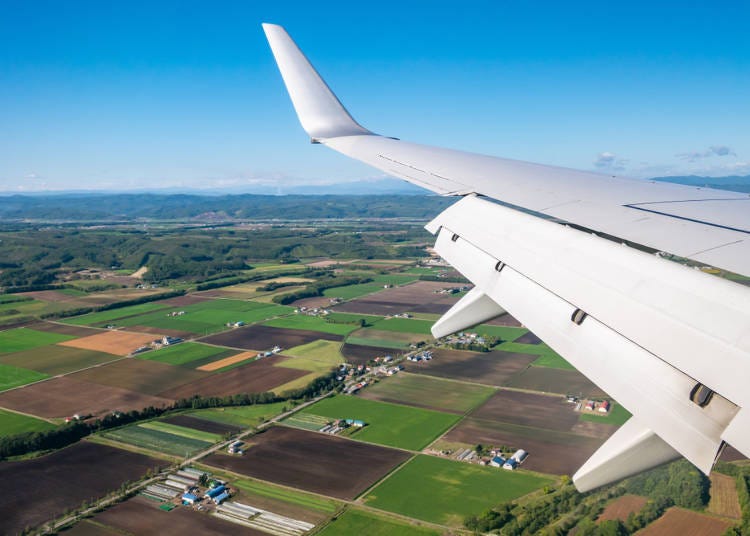
When it comes to speed and convenience, flying from Tokyo to Hokkaido is the optimal choice. Over 80 daily flights connect Haneda and Narita airports to New Chitose Airport , completing the journey in just 1.5 hours. Tickets typically range from 20,000 to 30,000 yen, but early bookings or flexible travel days/times may offer more budget-friendly options.
Conveniently get from New Chitose Airport to Sapporo by bus
You won’t need to leave the airport to access the JR train network, which has convenient rail access. The Airport Express is a train that arrives at Sapporo Station in 33 minutes, departing at a frequency of 5/hour during the day, so you won’t need to wait long. Since many commuters use it, if you want to secure a seat, you can wait for one of the following trains, or reserve ahead (for an additional fee).
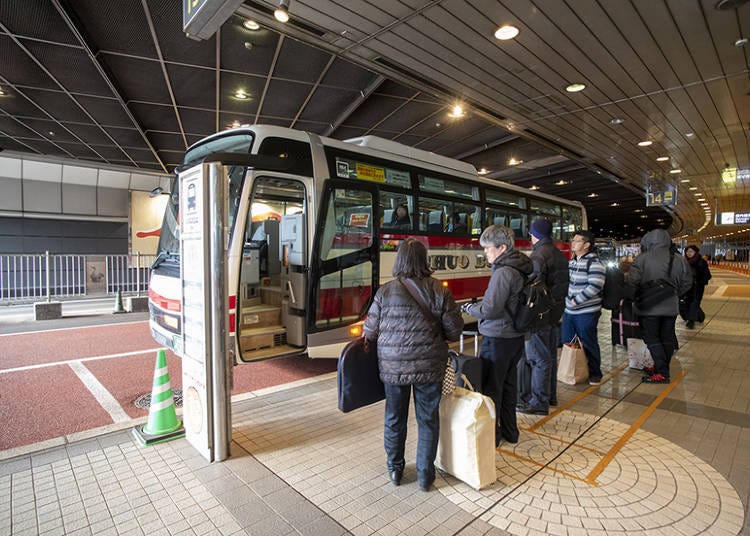
The bus, instead, takes about 50 minutes from the airport to central Sapporo . It can store large suitcases, and every passenger has a seat. If you are staying in the areas of Odori or Susukino, or places not far from the city's center, the bus will probably conveniently stop nearby.
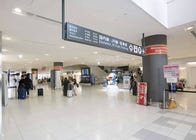
Embark on a remarkable journey from Tokyo to Hakodate via the renowned Hokkaido Shinkansen. This high-speed bullet train offers a comfortable ride through Japan's scenic countryside. If you use the Hokkaido Shinkansen, which opened in 2016, you will arrive at Sapporo Station in about four and a half hours, when traveling from Tokyo Station to Shin- Hakodate Hokuto Station. From Hakodate , Sapporo is a further three and a half hours by express train. Or you can easily connect to other parts of Hokkaido, making it an ideal choice for travelers looking to explore beyond Sapporo . The price ranges around 15,000 yen, not including seat reservation, but your Japan Rail Pass may cover it. In total, it will take around 8 hours from Tokyo Station to Sapporo Station.
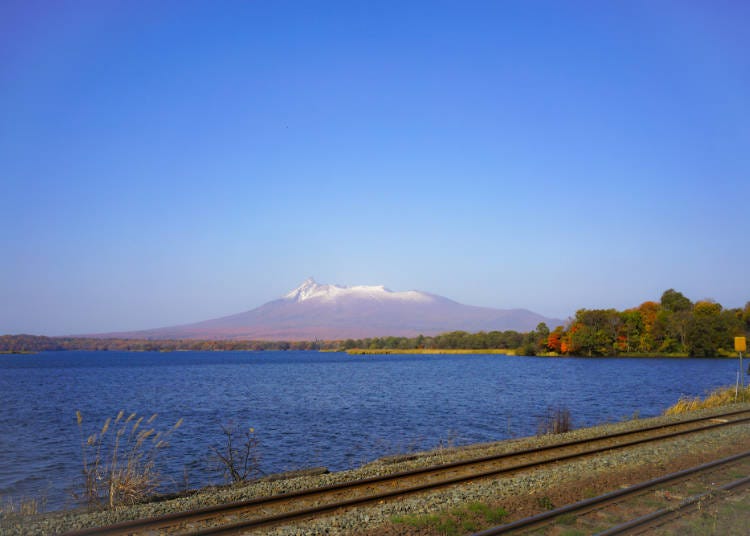
From the Shinkansen windows, you can enjoy the scenery changing from the heavily metropolitan Tokyo to the nature -rich ones of Tohoku. One of the most distinctive areas you will pass through is the Seikan Tunnel between Aomori Prefecture and Hokkaido, which extends to the bottom of the Tsugaru Strait. Although you won’t be able to see anything in the dark, it’s exciting to picture that you are actually traveling on the seabed. From Shin- Hakodate -Hokuto Station, transfer to the express train and enjoy the sights of Hokkaido’s most scenic spots, like the landscapes in Onuma, Mount Komagatake, and Funka Bay, and take in the nature and streets of Hokkaido until you arrive in Sapporo . If you have a lot of time, you can take advantage of discounted tour tickets and stop in various towns in Hokkaido and Tohoku. The JR homepage supports multiple languages, and it’s easy to navigate so that you can plan the perfect railway trip for you.
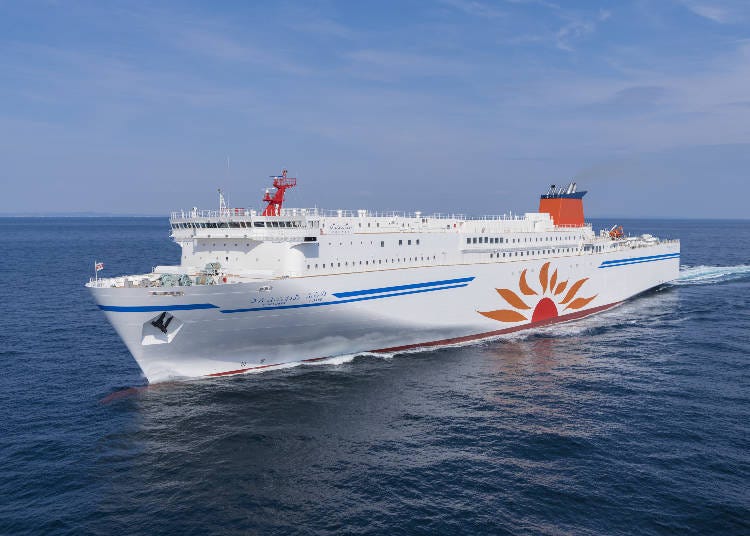
For a more leisurely and picturesque journey, consider taking the ferry from Tokyo to Sapporo . This delightful maritime experience allows you to soak in the beauty of the sea as you sail towards Hokkaido. There are two cruises a day from Oarai Port in Ibaraki Prefecture (two hours driving from Haneda and Narita Airports) to Tomakomai Port in Hokkaido. Travel time by boat is approximately 18 hours. The price varies depending on your room, but if you want to watch your budget, it’s about 10,000 yen for a shared room and 12,000 yen for a cabin. There are also hotel -like rooms equipped with a bath, toilet, and refrigerator, where you can spend your time with your family and friends. There are also facilities like public baths, where you can bathe while gazing at the ocean, restaurants where you can taste elaborate dishes, and a vast bridge, which all guarantee you won’t be bored during your cruise. You can also find nice towels and origami that will be perfect as souvenirs.
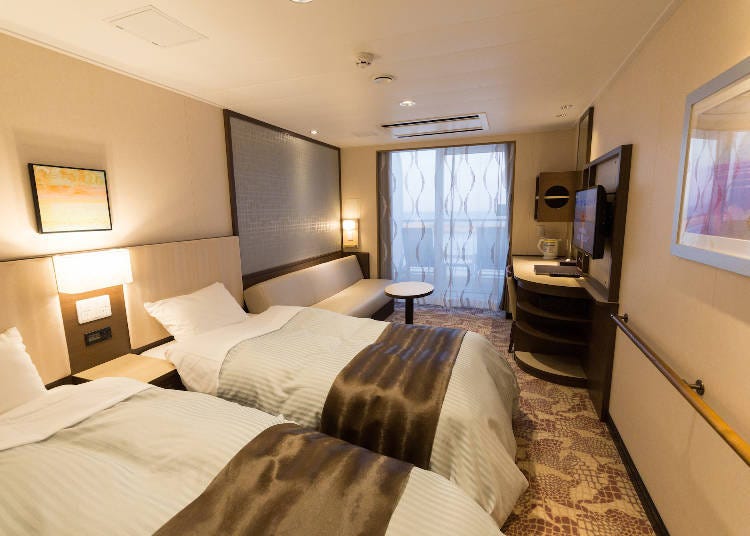
There is a convenient direct bus from Tokyo Station to the Oarai Ferry Terminal, but you can also drive there, so if you were thinking about renting a car and enjoying the sights on the way, this would be a good option for you (especially if you are traveling with children). You can arrive from Tomakomai Port to Sapporo city center in just over an hour, and you can sightsee around the city easily if you have a car. When booking online you can find round-trip discounts and other deals. The website supports English, Simplified Chinese, and Traditional Chinese.
- Phone: 0120-489850 (From a mobile phone/PHS/IP phone, call 029-267-4133 (Oarai Ship Reservation Center), or 0144-34-3121 (Tomakomai Ship Reservation Center))
- Open: 9 AM-9 PM (Saturday until noon)
- Closed Sunday and national holidays
- Website: https://www.sunflower.co.jp/
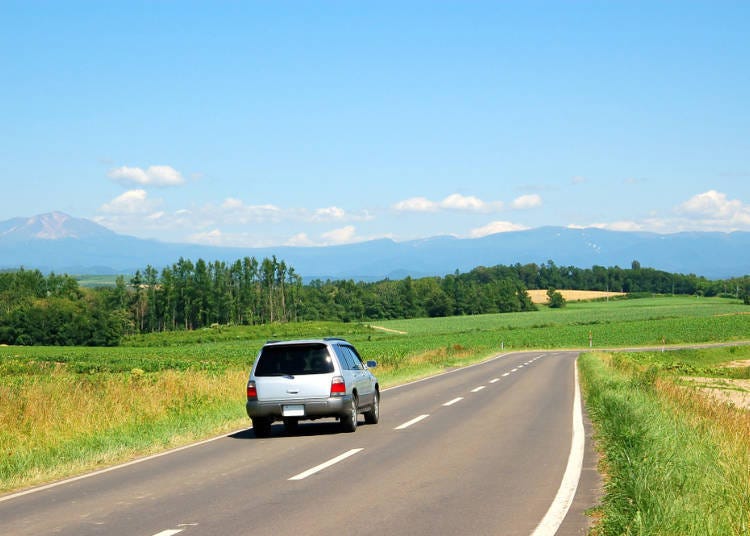
If you crave the freedom of the open road, driving from Tokyo to Hokkaido in a rental car is the perfect adventure. Embark on a road trip that allows you to set your own pace, making stops at picturesque towns and breathtaking viewpoints along the way. While the journey requires more time compared to flying or taking the Shinkansen, the flexibility and scenic routes offer an unforgettable experience. There are three major routes: The Pacific side, the Sea of Japan side, and the inland, all of which run for roughly 1,000 km, but the landscapes are different and unique, making them irresistible to people who love to drive. Since you will have to cross the Tsugaru Strait, don’t drive for too long hours, and give yourself a couple of days. You can also rent a car via a system called “drop-off,” which allows you to rent a car from Narita or Haneda Airport , and return it at New Chitose Airport . There are several companies that offer multi-lingual service, and convenient options, and discounts, so do some research beforehand to find what best suits you.

The way you travel will change your trip. Before you leave, do your research, study the various options, and choose the best method for you. Also, make sure to look into discount tickets and other offers, and have fun!
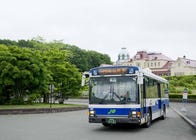
Minna no Kotoba Sha is a production company founded by an editor with extensive experience in editing local magazines in Sapporo. For over 20 years, our team has conducted research and written articles across Hokkaido, with Sapporo as our primary hub. Our diverse portfolio includes the production of various books such as travel guides, informational magazines, and collections showcasing the picturesque landscapes of Hokkaido. Comprised entirely of women, the team at Minna no Kotoba Sha boasts diverse interests, including a passion for travel, culinary delights, and alcoholic beverages. The scope of our communication efforts spans a wide range, covering everything from introducing notable restaurants to providing coverage of local events and sharing stories of leisure experiences.
- Area Sapporo / Chitose
- Category Other Sightseeing
- How To: Transportation
Share this article.

Recommended places for you

Sapporo / Chitose

Mt. Hakodate Observatory
Forests & Mountains

Farm Tomita
Other Nature
Furano / Biei / Sounkyo

Otaru Canal
Rivers, Lakes & Canyons

Shiroi Koibito Park
Theme Parks

Rukku and Uohei

Highway Bus Guide from Sapporo Station: Bus Stop Locations and Ticket Reservations
by: Minna no Kotoba Sha
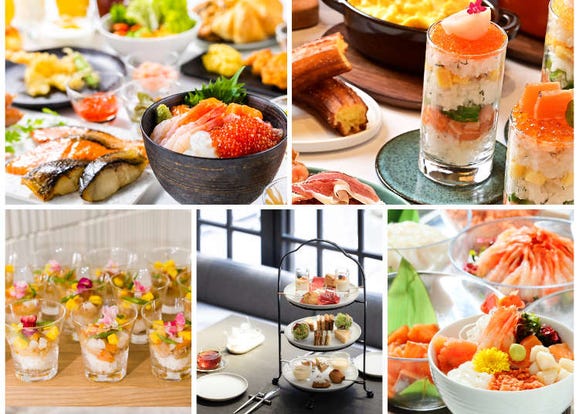
Expert-Recommended! 5 Otaru Hotels with Great Breakfasts
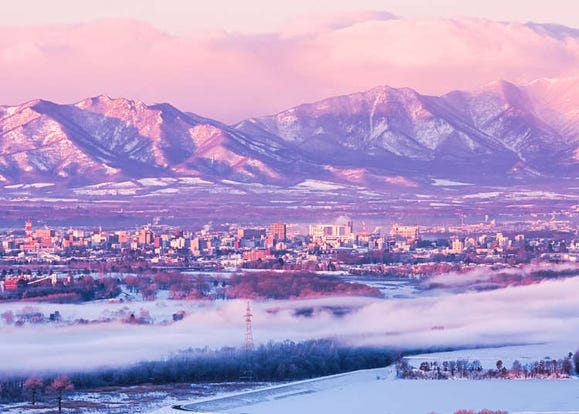
Your Trip to Obihiro (Hokkaido): The Complete Guide - Activities, Hotels, Savers & More

Summer Adventure! Sapporo Day Trip to Enjoy Gorgeous Lavender Fields

Touch the Sky: Enjoy Seasonal Escapes on the Asahidake Ropeway (Hokkaido)

Must-Try! 9+ Things to Do in Niseko in Summer for All-Day Fun
Inspiration for Accommodations

Enjoy Snowy Landscapes! Best Onsen with Snow in Hokkaido

Stunning Views from Your Private Space! Hotel with View of Hakodate's Nightscape

Experience Ultimate Luxury! Best Sapporo Hotels with Night Views from Your Room

Kichijoji – Explore Tokyo’s Top-Rated Stylish Suburb in Half a Day!

Flowers, Beer & More: Hokkaido Summer Driving Itinerary (+ Bonus 6-Day Plan)

Top 20 Things to Do in Furano: Your Ultimate Guide to Unforgettable Sightseeing, Food, and Shopping

'You’ll Never Forget Once You See It!' 5 Incredible Surprises Foreigners Had Living in Hokkaido

Where to Stay in Noboribetsu: 6 Ryokan Hotels in Hokkaido's Spa Wonderland

10 Major Cities in Japan: Which One Should Top Your Bucket List?
- #best sushi hokkaido
- #things to do hokkaido
- #best ramen sapporo
- #what to bring to japan
- #new years in tokyo
- #what to buy in ameyoko
- #japanese nail trends
- #what to do in odaiba
- #onsen tattoo friendly tokyo
- #best sweets otaru
- #japanese fashion culture
- #best nature furano
- #japanese convenience store snacks
- #best japanese soft drinks
- Itineraries
- Tours and Activities
- Travel Guides
- Best of Japan
JRailPass.com » Japan Travel Blog » Taking the Hokkaido Shinkansen from Tokyo to Sapporo
Taking the Hokkaido Shinkansen from Tokyo to Sapporo
January 8, 2019

Japan is a wondrous, exotic land, full of iconic places, pop-culture galore, and a perfect marriage between the old and the new.
Among one of Japan’s most iconic symbols is the Shinkansen bullet train, an incredible piece of engineering and technology that links major cities in Japan in just a few hours. Throughout the years, Japan has been expanding and improving its railway system to cover the majority of each island and facilitate traveling all together.
That is why in March of 2016, the Hokkaido Shinkansen, linking Aomori on Japan’s main island of Honshu with Hakodate on the island of Hokkaido via the Seikan Tunnel, was inaugurated. Until then, access to Hokkaido was challenging, but now with only one transfer, you can get there faster. The Hokkaido Shinkansen will be extended to Sapporo, and it is scheduled to open by 2030.
Japan Rail Pass covers the new Hokkaido Shinkansen route , including the super fast Hayabusa train. The JR Pass is really worth it if you are taking this route : as a normal ticket would cost 23,120 yen for the round-trip.
The Hokkaido Shinkansen Line
Currently, two trains are operating on the Hokkaido line: Hayabusa and Hayate. The majority Hokkaido Shinkansen trains are Hayabusa , which run between Tokyo Station and Shin-Hakodate-Hokuto Station, and seat reservation is required.
The journey from Tokyo to Hakodate takes approximately 4 hours and 4 minutes. The Shinkansen Hayabusa goes all the way to Shin-Hakodate-Hokuto, located between Hakodate and Hokuto. Once you arrive, you will need to take the local Hakodate Liner to reach the city of Hakodate .
Hayate trains usually operate one return service per day during the morning and late evening between Morioka and Shin Hakodate and one return service per day between Shin Aomori and Shin Hakodate. Again, it is mandatory to book your seat before boarding the Hayate train, since there are no non-reserved cars . If all reserved seats have already been booked, standing tickets will be made available.
The new shinkansen stations also include Oku-Tsugaru-Imabetsu (in Honshu), and in Hokkaido, Kikonai Station.
Once in Shin Hakodate, the Hakodate Liner operates 16 shuttle services per day to reach Hakodate station. The Hakodate Liner connects Shin-Hakodate-Hokuto Station and Hakodate Station in just 15 minutes and links the shinkansen with all train lines with 16 round trips operating per day. Travel times are 15 to 22 minutes and ten return services are scheduled per day.
Book your Japan Rail Pass now
Hokkaido Shinkansen map
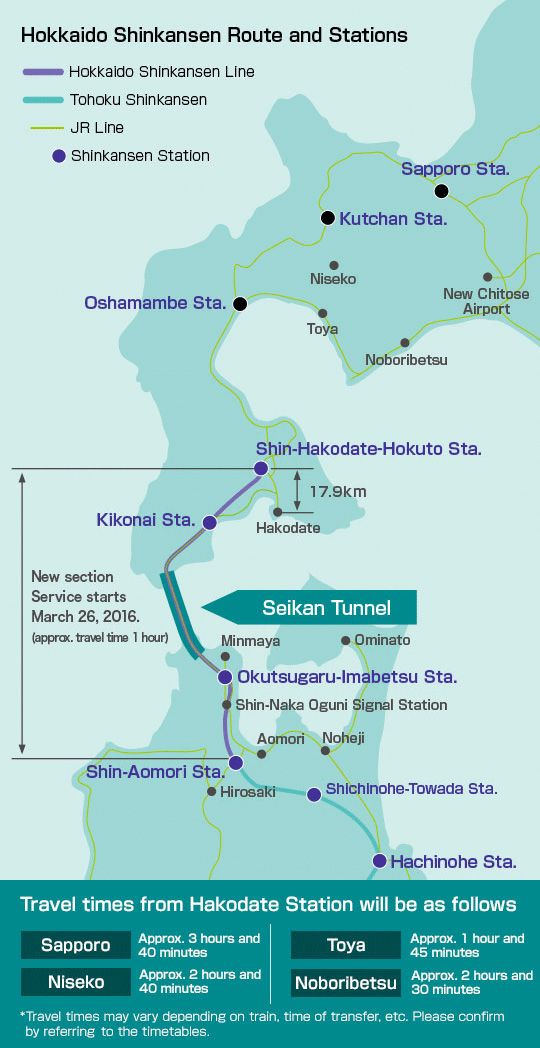
How to get to Hakodate
Once you get to Shin-Hakodate-Hokuto station, to get to Hakodate, the connection is easy thanks to the Hakodate Liner . Once you get to Hakodate, it is easy to discover the city with the shuttle bus or the streetcar.
How to get to Sapporo
It is very easy to get to Sapporo : once you get to Shin Hakodate station, you need to take the Ltd Express Super Hokuto or Express Hokuto (3h30). The shinkansen line addition from Shin-Hakodate-Hokuto to Sapporo Station is scheduled to open in 2030.
From Sapporo, you can easily get to New-Chitose Airport taking a Rapid Airport Express via the JR Chitose line, which is also included in the JR Pass.
How to get to New-Chitose Airport
From Sapporo, you can easily get to New-Chitose Sapporo : once you get to Shin Hakodate station, you need to take the Ltd Express Super Hokuto or Express Hokuto (3h30). The shinkansen line addition from Shin-Hakodate-Hokuto to Sapporo Station is scheduled to open in 2030.
Super Hokuto trains
The Hokuto and Super Hokuto are limited express train services between Sapporo and Hakodate in Hokkaido operated by Hokkaido Railway Company (JR Hokkaido). It takes The journey time of the Super Hokuto is approximately 3 hours 40 minutes, 10 minutes faster than that of the Hokuto .
Super Hokuto services started on 1 March 1994, and cut journey time by about 30 minutes due to the higher speeds through the many curves of the line between Sapporo and Hakodate.
Gran Class cars
The Hayabusa trains feature Gran Class cars – first-class travel that far exceeds that of the green class. The Gran Class involves the use of a special train car with ample seating room, as well as the constant attention of your host or hostess. Trains generally have one Gran Class car along with standard and green cars.
The train fare itself is covered by the Japan Rail Pass, but holders must pay for an additional Gran Class charge , that is, the difference to the standard or Green Class ticket (depending on your pass). These charges vary slightly for a Hayabusa ride or for a Hayate ride from Shin-Aomori to Tokyo.
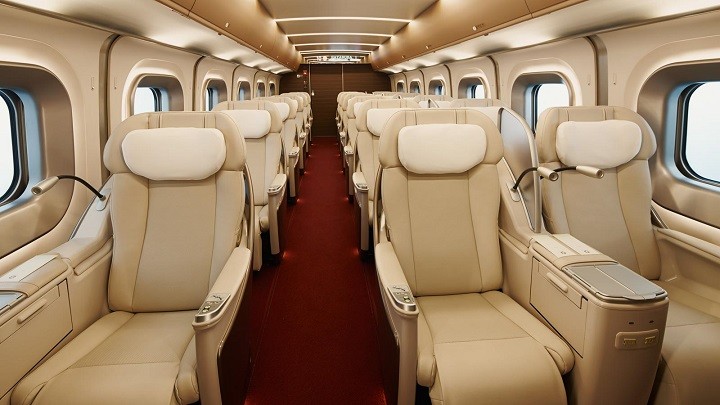
Future plans for the Hokkaido Shinkansen
The Hokkaido Shinkansen really helped bridge Tokyo and Hakodate. Before, it took 5hrs and 30mins from Tokyo to Hakodate, but on the Hokkaido Shinkansen it takes 4 hours and 2 minutes to reach Shin-Hakodate – Hokuto Station.
The goal for the Hokkaido Shinkansen is for it to reach Sapporo. The extension from Shin-Hakodate-Hokuto to Sapporo is planned to open by March 2030. Tunneling work on the Murayama tunnel started in March 2015 and is scheduled to be completed by March 2021. The 211.3 km extension will be approximately 76% in tunnels, including major tunnels such as Oshima, Teine, and Shiribeshi. Finally, when the section to Sapporo opens, the estimated travel time from Tokyo to Sapporo will be roughly 5 hours.
Related posts
Related tours & activities.
Sapporo: Getting there and around
Getting to sapporo.
- ¥ 7,000 - 48,000
Tokyo-Sapporo is one of the world's busiest air routes with dozens of flights per day, operated by JAL, ANA, Air Do, Skymark, Peach Aviation, Jetstar Japan and Spring Airlines Japan. The majority of flights use Tokyo 's Haneda Airport and Sapporo 's New Chitose Airport , but quite a few flights also use Tokyo's Narita Airport .
Flight duration is about 90 minutes. The regular one way fares by the conventional airlines are as high as around 46,000 yen, but thanks to a wide range of discount offers , one way fares of around or under 10,000 yen are often available. Skymark, Peach Aviation, Jetstar Japan and Spring Airlines Japan tend to have the lowest fares (sometimes under 5000 yen), especially to/from Narita .
- ¥ 30,000
Take the JR Tohoku / Hokkaido Shinkansen from Tokyo to Shin-Hakodate-Hokuto (4 hours) and transfer to the Hokuto limited express to Sapporo (3.5 hours). The entire one way trip costs around 30,000 yen and takes around eight hours. It is fully covered by the Japan Rail Pass and JR East South Hokkaido Rail Pass . Note that seat reservations are mandatory on Hayabusa trains between Tokyo and Shin-Hakodate-Hokuto.
- ¥ 15,000
There are long distance ferries between Oarai Port, 100 kilometers northeast of Tokyo and Tomakomai Port, 50 kilometers south of Sapporo. The one way ferry ride takes about 19 hours and costs 11,500 yen in the cheapest class. View our ferry information page for more details, including port access information.
Above fees and schedules are subject to change. Be sure to check current yen exchange rates .
Getting around
No major city in Japan is easier to navigate than Sapporo with its rectangular street layout and simple addressing system: City blocks are named and numbered according to the point of compass, with the apex at the eastern end of Odori Park . The Sapporo Beer Museum , for example, is located in city block "North 7, East 9", i.e. in the 7th block north and 9th block east of the apex.
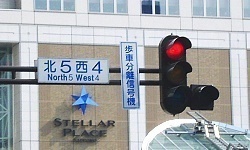
Three subway lines, a tram line and many bus companies (JR Hokkaido Bus, Hokkaido Chuo Bus and Jotetsu Bus) provide Sapporo with an efficient network of public transportation. The Japan Rail Pass , Hokkaido Rail Pass and Hokkaido Free Pass are valid on local buses operated by JR Hokkaido Bus.
Sapporo has two airports. The main airport, New Chitose Airport , is reached in a 35 minute train ride hour south from the city center and handles most of the city's domestic and international air traffic. The much smaller Okadama Airport is more centrally located, but has only a small number of flights other cities in Hokkaido .
Passes and Tickets
The following one day passes are available for Sapporo :
- Subway 1-Day Card (830 yen) Unlimited use of Sapporo's three subway lines on one calendar day. Note that a discounted pass is available on weekends (see below).
- Donichika Ticket (520 yen) Unlimited use of Sapporo's three subway lines on one calendar day. The pass is only available on weekends, public holidays and from December 29 to January 3.
Prepaid cards make the process of taking subways and buses easier, as you do not always need to buy a new ticket for each ride. Some of them also give small discounts. Prepaid cards can be purchased at vending machines.
- Kitaca Kitaca is the rechargeable prepaid IC card by JR Hokkaido that can be used on JR trains in Greater Sapporo , including Otaru and Shin-Chitose Airport as well as on Sapporo's subways, buses and tram thanks to its compatibility with Sapica (see below). Kitaca can, furthermore, be used in several other cities of Japan. Nine other IC cards from other major cities of Japan, including Suica, can also be used in the Greater Sapporo area instead of Kitaca. The initial purchase of a card costs 2000 yen (500 yen refundable deposit and 1500 yen fare balance).
- Sapica Sapica is the rechargeable prepaid IC card which can be used on Sapporo 's three subway lines, city buses (JR Hokkaido Bus, Jotetsu and Hokkaido Chuo Bus) and tram. The initial purchase costs 2000 yen (500 yen refundable deposit and 1500 yen fare balance). Unlike many other IC cards, Sapica is accumulating 10% points with each use, and accumulated points are used towards the purchase of future trips. Sapica cannot be used on JR trains or outside of the Greater Sapporo area.
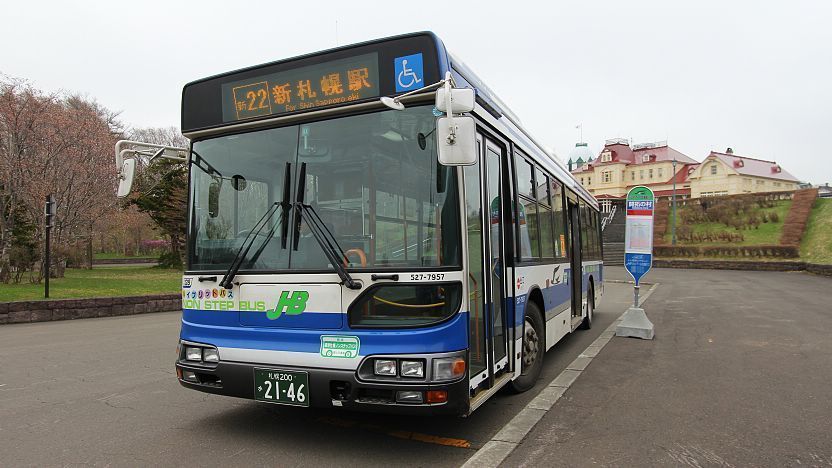
Questions? Ask in our forum .
Links and Resources
Jr hokkaido, hokkaido chuo bus, jotetsu bus, sapporo subway, jr hokkaido bus, hotels around sapporo.

Experiences around Sapporo

- Tokyo Cheapo (繁體中文)
Tokyo to Sapporo: The Easiest Ways to Travel
Sapporo. A common brand of Japanese beer. Also, the capital city of Hokkaidō , Japan’s northernmost island. Famous for the aforementioned beer, an impressive snow festival , and being Japan’s biggest city and transit hub this far north. And now, here are the best ways to get from Tokyo to Sapporo.
How to get from Tokyo to Sapporo

Sapporo is approximately 500 miles (or about 800 km) from Tokyo as the crow flies. Options for making the trip from Tokyo to Sapporo include trains and planes but also roadtrips and ferries. If you have a JR Pass or a JR East–South Hokkaidō Pass we recommend taking the Shinkansen.
Otherwise, flying will generally be the more economical choice — especially if you’re able to snag your tickets during a sale. If you’re really here for the journey rather than the destination, then taking the ferry or roadtripping it up can be fun. We don’t really recommend either though, since they’re a lot slower and generally more expensive.
Tokyo to Sapporo Travel Options
Flying from tokyo to sapporo.
1.5 hours flight time + airport travel time ¥ 4,500 to ¥ 45,000 Haneda or Narita to New Chitose Airport
Air is by far the easiest way to get from Tokyo to Sapporo. The flight time is a reasonable 1.5 hours, though you have to take into account travel time to and from the airports. On the Tokyo side, different airlines fly out of both Narita and Haneda airports.
If you book early enough or during a sale, you can snap up return tickets from Tokyo to Sapporo’s New Chitose Airport for as little as ¥ 9,500 (or, fellow Cheapos tell us, even less).
The standard range is more like ¥ 15,000 to ¥ 45,000 . Those higher fares happen during peak periods such as Obon, New Year and Golden Week .
In normal times, there are around 80 flights a day to New Chitose Airport from Haneda and Narita airports in Tokyo. That makes it one of the busiest air routes in the world. The disruptions caused by COVID-19 mean fewer flights each day, but you can still find plenty of flights between Tokyo and Sapporo.
Haneda or Narita to Sapporo?
Flights out of Haneda Airport tend to be at least ¥ 2,000 more expensive than those out of Narita Airport. Still, don’t rule Haneda out. The cost of getting all the way out to Narita Airport could end up cancelling out the savings on cheaper plane tickets.
Check out our guides on traveling between Tokyo and Narita Airport and also for getting to Haneda Airport .
Cheap flights to Sapporo
It’s best to look at LCCs (low-cost carriers) for good deals . You can start by checking budget airlines like Peach, Jetstar, and Skymark. Skyscanner offers a good comparison of what’s available right now, and at what price.

Air Do deals
Of special note is Air Do (rhymes with hairdo), Hokkaidō’s own carrier that’s headquartered in Sapporo. Air Do has flights not only between Sapporo and other major cities in Japan, but also between Sapporo and smaller, regional Hokkaidō airports like Memanbetsu.
For travelers living outside of Japan, Air Do offers a Welcome to Hokkaidō fare that can be purchased up to one day in advance. The fare varies, but a one-way flight is often ¥ 9,000 or less, going up to ¥ 9,800 in peak seasons. Users must present a non-Japanese passport and evidence of an international plane ticket to and from Japan upon check-in.

Getting from New Chitose Airport to Sapporo
New Chitose Airport is about 50 km from Sapporo, and there are regular direct trains and buses connecting the two. Trains take less than 40 minutes and cost only ¥ 1,150 . For more details about airport trains and other transport options, check out our guide to getting from New Chitose Airport to Sapporo .
Pro tip: Traveling with lots of luggage? Consider using a luggage delivery service to ship it onwards to your accommodation or the airport.
Taking the Shinkansen to Sapporo (sort of)
8 hours ~ ¥ 27,760 Tokyo to Hakodate by Shinkansen, Hakodate to Sapporo by Ltd. Express
Can you take the bullet train from Tokyo to Sapporo? Yes. Most of the way, anyway.
Since March 2016 it’s been possible to take the Hokkaidō Shinkansen from Tokyo to Shin-Hakodate-Hokuto Station. That’s in Hakodate , at the bottom of Hokkaidō, which is…not so close to Sapporo. While there are plans to extend the Shinkansen to Sapporo, that isn’t scheduled to happen until 2030. In the meantime, there’s a Ltd. Express service between Hakodate and Sapporo.
It takes approximately 4–4.5 hours from Tokyo to Shin-Hakodate-Hokuto, which is currently the end of the line for the Hokkaidō Shinkansen. Then it’s at least another 3.5 hours on express trains to get to Sapporo. So you’re looking at a whole day of travel.
How much does it cost?
The total fare between Tokyo and Sapporo is ¥ 27,760 . That’s booking a through ticket on the Hokkaidō Shinkansen from Tokyo to Shin-Hakodate-Hokuto and the Ltd. Express Hokuto service between Shin-Hakodate-Hokuto and Sapporo. The Hokkaidō Shinkansen only has reserved seats but you can save ¥ 260 by skipping the reserved seat on the Ltd. Express Hokuto.
It’s important to book the two segments of the journey together as a through ticket, in order to take advantage of JR East’s transfer discount. This gives you a half-price discount on the Ltd. Express journey. Booking the tickets separately would cost significantly more.
Working out train fares in Japan can be tricky. Learn more about how Shinkansen fares are calculated and how to find discount Shinkansen tickets from JR East .
Getting a Japan Rail Pass for travel to Hokkaidō
A one-way train ride from Tokyo to Sapporo costs over half as much as the 7-day Japan Rail (JR) Pass ( ¥ 50,000 ), which gives you virtually unlimited rides on bullet trains and other JR trains countrywide. So if are keen on making a return trip to Hokkaidō you should seriously consider buying a JR Pass to economize.
Regional rail passes for travel to Hokkaidō
The East–South Hokkaidō Pass , which is a regional rail pass from JR East , also covers the train journey between Tokyo and Sapporo. The pass is a little cheaper at ¥ 27,000 , but is only good for six consecutive days of travel. It also doesn’t cover train travel in Hokkaidō beyond Sapporo.
What about local trains?
It’s…possible. But, the journey is impossible to complete in one day. You’re looking at 40 to 50 hours, including an overnight stop at some point when the trains stop running for the day. Plus, unless you have a Seishun 18 Ticket you’re looking at ¥ 22,290 or more one-way. If you really like the scenic route then it could be an interesting trip, but with 15 or more transfers it’s not necessarily going to be relaxing.
Also keep in mind that you’d still have to take the Shinkansen between Aomori (Honshū’s northernmost prefecture) and Hokkaidō, since local trains no longer run on the Seikan Tunnel tracks. Or you could take a ferry instead (see below for more details on ferries between Aomori and Hokkaidō).
Taking the ferry from Tokyo-ish to Sapporo-ish
Around 19 hours ¥ 10,000 to ¥ 24,500 for the ferry alone Tokyo to Oarai port in Ibaraki, then Tomakomai port to Sapporo
You can also take a ferry from Ōarai in Ibaraki prefecture (1 hour and a bit from Tokyo) to Tomakomai (1 hour south of Sapporo by train). There are early evening and late night departures, and the whole trip takes about 19 hours.
Tickets start from about ¥ 9,800 , but be aware that fares do vary depending on the time of year and whether you choose the twilight or overnight option (the latter being slightly pricier).
During peak travel times they can range from ¥ 17,200 to ¥ 22,200 for the cheapest option, so do check your dates online for the twilight and for the overnight services.
You can book combo overnight ferry and Sapporo hotel packages starting from ¥ 17,900 .
When booking, you can choose a cabin — either economy or something slightly fancier, depending on your budget. The cheapest option involves a bit of floor space in a communal room.
There is a kind of boat restaurant/cafeteria, so you’ll be well-fed, in addition to well-bored by the time you arrive. Unless you’re moving large objects or trying to tap into your inner pirate, we have to ask, why not just take the bullet train or fly? But we salute you, seafarer. Each to their own.
Transfers eitherside
The train journey from Tokyo to Ōarai takes 1 hour and 45 minutes, using a combination of limited express (JR Tokiwa or Hitachi service for Mito) and local Kashima Rinkai line trains, and costs ¥ 4,220 . (Using regular trains costs ¥ 2,640 and takes about 3 hours).
On the other side, the train journey from Tomakomai to Sapporo can either be made on a limited express service in 47 minutes for ¥ 3,360 or on local lines in an hour (with one change) for ¥ 1,680 . You’ll have to take a taxi or a local bus between Tomakomai Port and Tomakomai Station.
Keep an eye out for bus and ferry deals in Hokkaidō when you book — they vary depending on season but can be a better option price-wise, and smoother than dealing with trains too.
Pro tip: Interested in ferry travel in Japan? Read about the Japan Ferry Pass 21 —the oceanic answer to the Japan Rail Pass .-->
Roadtripping from Tokyo to Sapporo
16 hours with toll roads (23 hours without) ¥ 15,150 for tolls, ¥ 10,000 to ¥ 33,000 for the ferry, plus fuel Drive from Tokyo to Aomori, ferry to Hakodate or Tomakomai, then drive to Sapporo
Unfortunately, you cannot drive directly to Hokkaidō as the Seikan Tunnel only takes bullet and freight trains. If you have the time, money, and the inclination, however, you can drive from Tokyo to Aomori prefecture in northern Honshū and then take a ferry across the strait. From there, you can continue on to Sapporo.
Pro-tip: There are plenty of great stop-offs to choose from in Tōhoku along the way.
rentals like DreamDrive -->

Travel time and cost
The main thing that will influence the time and cost of roadtripping from Tokyo to Sapporo is toll roads. If you don’t mind paying around ¥ 15,150 in tolls, you can make the trip in about 16 hours.
On the other hand, if you’d rather avoid the tolls you’re looking at over 23 hours driving. If you decide to go with the toll roads, make sure to check out our article on how to save money on tolls roads .
Ferries from Aomori to Hokkaidō
There are a few different ferry routes from which to choose. Keep in mind that car fares for the ferry are quite expensive, and while most companies include the driver’s fare in the price, additional tickets are required for other passengers, with some discounts available. There can be changes to rates depending on the time of year and vehicle size too, so be sure to check ahead for your specific journey.
From Aomori and Ōma to Hakodate
Both Aomori City and Ōma have ports for ferries to Hakodate. Ōma, which is further north than Aomori City, is closer to Hokkaidō and therefore a little cheaper.
The drive from Tokyo to Aomori City takes around 8–9 hours on toll roads (or 15 hours if avoiding tolls). Continuing to the port in Ōma adds an extra hour to this.
From Hakodate, Sapporo is a 4.5 hour drive, taking you along the coast and through the mountains. Car fares from Aomori to Hakodate on the Tsugaru Kaikyō Ferry range from ¥ 15,400 to ¥ 26,100 while those from Ōma range from ¥ 11,650 to ¥ 20,870 .
From Hachinohe to Tomakomai
Hachinohe is on the east coast of Aomori prefecture, and is 1 hour closer to Tokyo than Aomori City, taking either 7–8 hour or 14 hours depending on your toll choices.
The Silver Ferry from Hachinohe goes to Tomakomai which is only a 1 hour drive from Sapporo with tolls or an extra half-hour without. Fares for this ferry are ¥ 21,000 for vehicles less than 4m, ¥ 27,000 for vehicles less than 5m and ¥ 33,000 for vehicles less than 6m, but remain the same throughout the season.
Things to do in Sapporo and the rest of Hokkaidō

Once you’re there, you won’t be short of things to do. Sapporo is a fun place for foodies , and there are heaps of things to do and see in the city. Venturing out of the prefectural capital, the slopes of Niseko await powderhounds, and Hokkaidō road trips are an option for people keen to see other parts of the landscape.
While we do our best to ensure that everything is correct, information is subject to change. Originally published in July, 2016. Last updated in May 2023 by Shyam Bhardwa.
閱讀中文版本: 從東京去札幌:最容易的交通路線一覽
- Bullet train
- Domestic airlines
Get our Tokyo Cheapo Hacks direct to your inbox

The Suica Card in 2024: How and Where to Buy Tokyo's IC Card

TOP 20 Things to Do in Shinjuku, Tokyo

Tokyo's Best Airport: Flying into Narita vs. Haneda

A Guide to ALL Pokemon Centers in Tokyo, Japan

24 Hours in Tokyo — The Ultimate Itinerary Guide

Hidden Gems: 4 Unique Tokyo Bars You MUST Try!

Which is the Best View in Tokyo: Top Observation Decks

New Video! Haneda Airport Survival Guide
We give you the lowdown on all the airport amenities, accommodation, and transport options.

New Video! Climbing Mt. Fuji in 2024
Mount Fuji has introduced new rules, including trail fees and daily caps on climbers.

How To Climb Mount Fuji in Summer
Full guide to the routes, rules, packing, sleeping — and sunrise.

What Is the "Tokyo Station Area Museums Ticket"?
Spoiler: It's a nifty little discount pass for art enthusiasts — and there's still time to use it.

New Video! Narita Airport Survival Guide: Transport, Amenities & Accommodation
Absolutely everything you need to know before you go to Tokyo's busiest airport.

20 Things To Do on a Rainy Day in Tokyo
Grab your umbrella and go have some fun.

Complete Guide to the Akita Shinkansen
Routes, rail passes, recommended stops — and more.

Mount Fuji's New Rules: What You Need To Know
All the new fees, regulations — and reservations.

7 Accessible Places To Visit in Tokyo
Temples, museums, robot cafés and more.

Choosing Travel Insurance for Japan
A quick look at the options.

Ultimate Guide to the Yamagata Shinkansen
The only thing you need to read about this bullet train.

11 Things To Do Around Kawaguchiko Station
Forget about the controversial Lawson — here's what you should be looking at.

Close without accepting
Tokyo to Hokkaido: 4 Travel Options with Everything You Need to Know

Shinkansen (Bullet Train) Travel
Ferry travel, where to stay in tokyo, where to stay in hokkaido, memorable expedition from tokyo to hokkaido.
Traveling from Tokyo to Hokkaido offers a mix of modern transportation technology and scenic beauty, presenting a perfect blend of convenience and adventure. Whether flying over the sea, speeding through the longest undersea tunnel in the world via the bullet train, or cruising across the waters, each mode of transport offers its unique experience.
In this guide, we'll explore the various options for making this journey, from the fastest to the most scenic, ensuring you have all the information needed to plan an efficient and enjoyable trip.
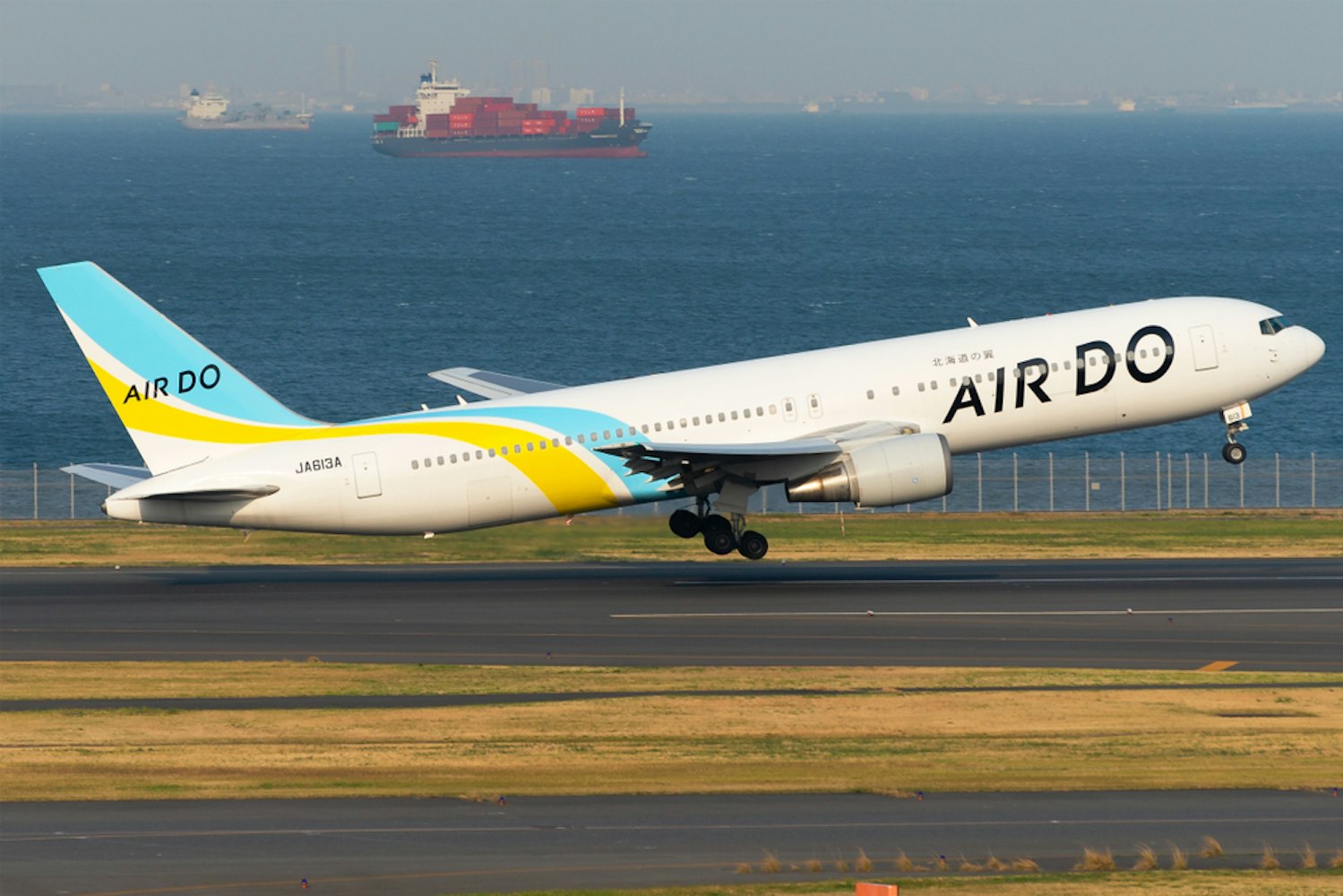
Air travel is the quickest way to travel between Tokyo and Hokkaido. Major airlines such as Japan Airlines and Nippon Airways and low-cost carriers like Jetstar Japan offer frequent flights, primarily landing at New Chitose Airport, the main gateway to Hokkaido.
From Tokyo, you can fly out of Haneda Airport, closer to the city center, or Narita Airport, which caters to international flights. You might find cheap flights if you book in advance, making air travel fast and economical.
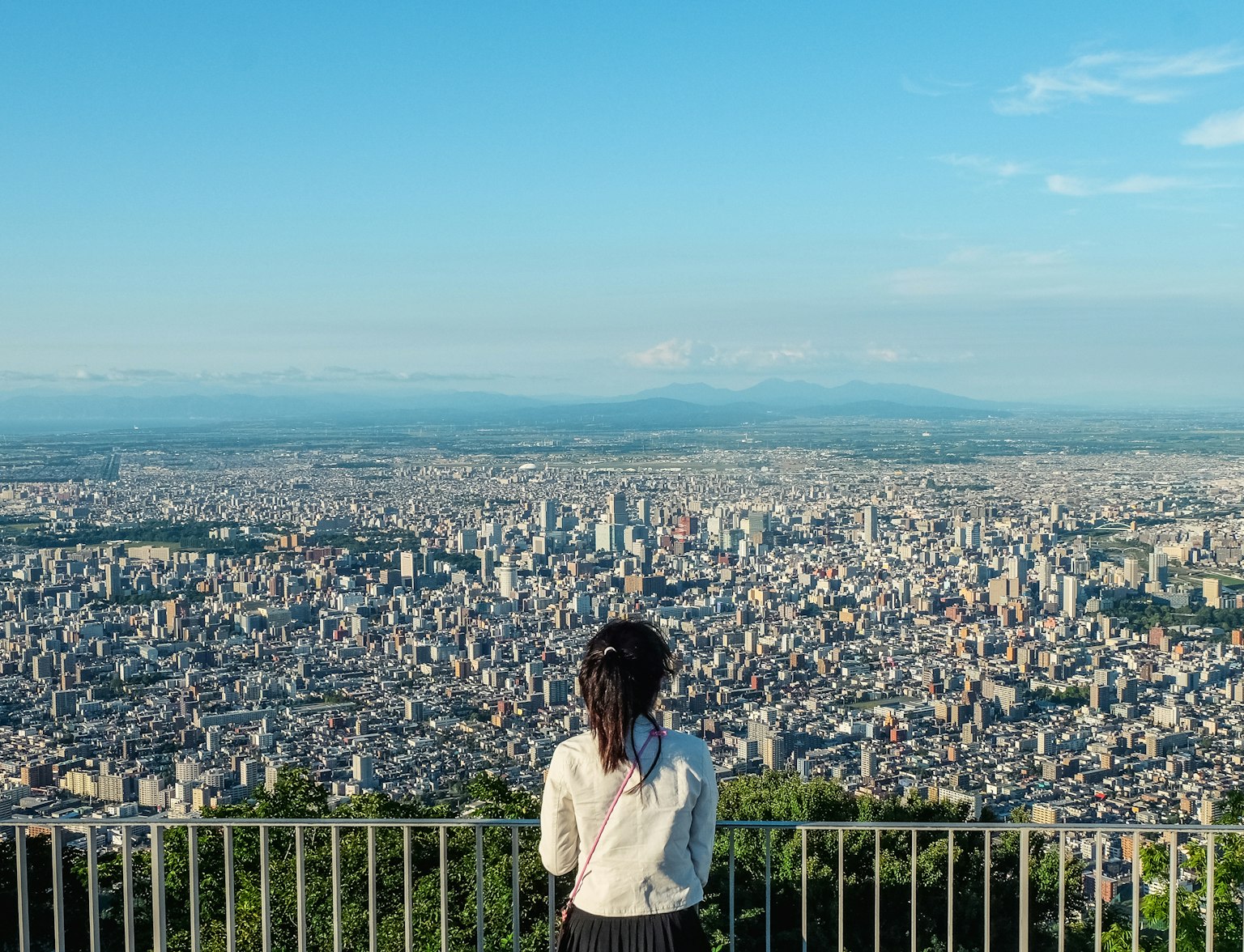
Explore Sapporo like never before on our custom private tours, designed and led by local experts.
Flight Duration
The total flight duration from Tokyo to Hokkaido is approximately 1 hour and 32 minutes. This duration is calculated based on a commercial airliner's average flight speed and includes extra time for the plane to taxi on the runway.
Travel Tips
1. Book Early: Book your plane tickets well to secure the best rates. Prices tend to rise as the travel date approaches, especially during peak travel seasons like the Sapporo Snow Festival.
2. Choose Your Airport Wisely: Tokyo has two major airports, Haneda and Narita. Haneda is closer to central Tokyo and might offer more convenient flight times for domestic flights to Hokkaido.
3. Check for Direct Flights: Opt for direct flights to save time. Most flights from Tokyo to Hokkaido land at New Chitose Airport near Sapporo, offering the quickest access to Hokkaido's attractions.
4. Pack Light: If you're traveling briefly, pack light to avoid checked baggage fees. Many domestic airlines fly charge for checked luggage, so carrying only hand luggage could save you money and time at the airport.
5. Stay Updated on Weather Conditions: Hokkaido's weather can significantly differ from Tokyo's, especially in winter. Check the weather forecasts to ensure you pack appropriately and are prepared for potential flight delays due to weather conditions.
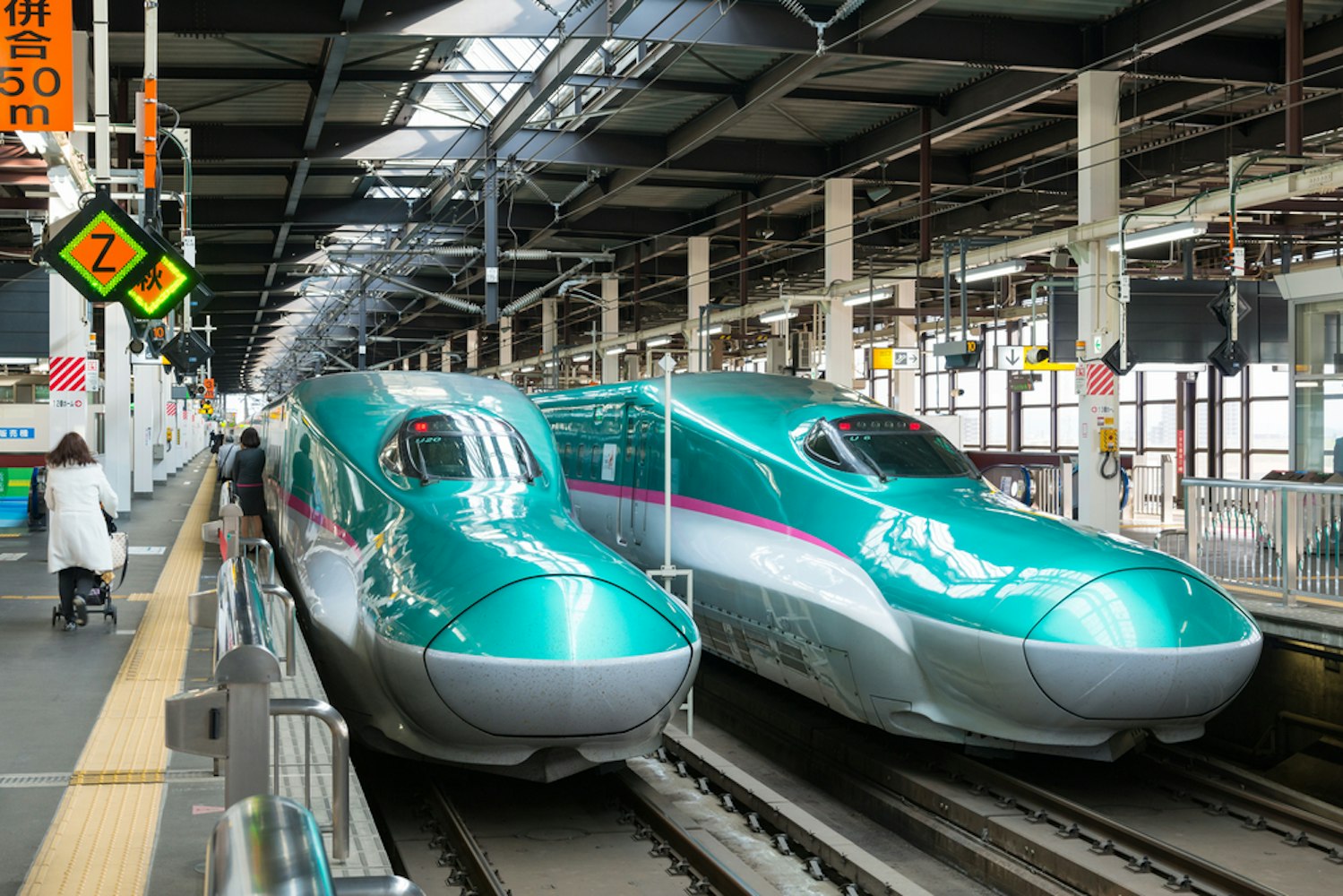
The Hokkaido Shinkansen is an exhilarating way to travel from Tokyo to Hokkaido. It connects Tokyo Station to Shin Hakodate Hokuto Station via the Seikan Tunnel, one of Japan's engineering marvels. With the Japan Rail Pass , travelers can find it a cost-effective and scenic route.
Services like the Gran Class offer luxurious seating options, enhancing the ride experience through Japan's landscapes.
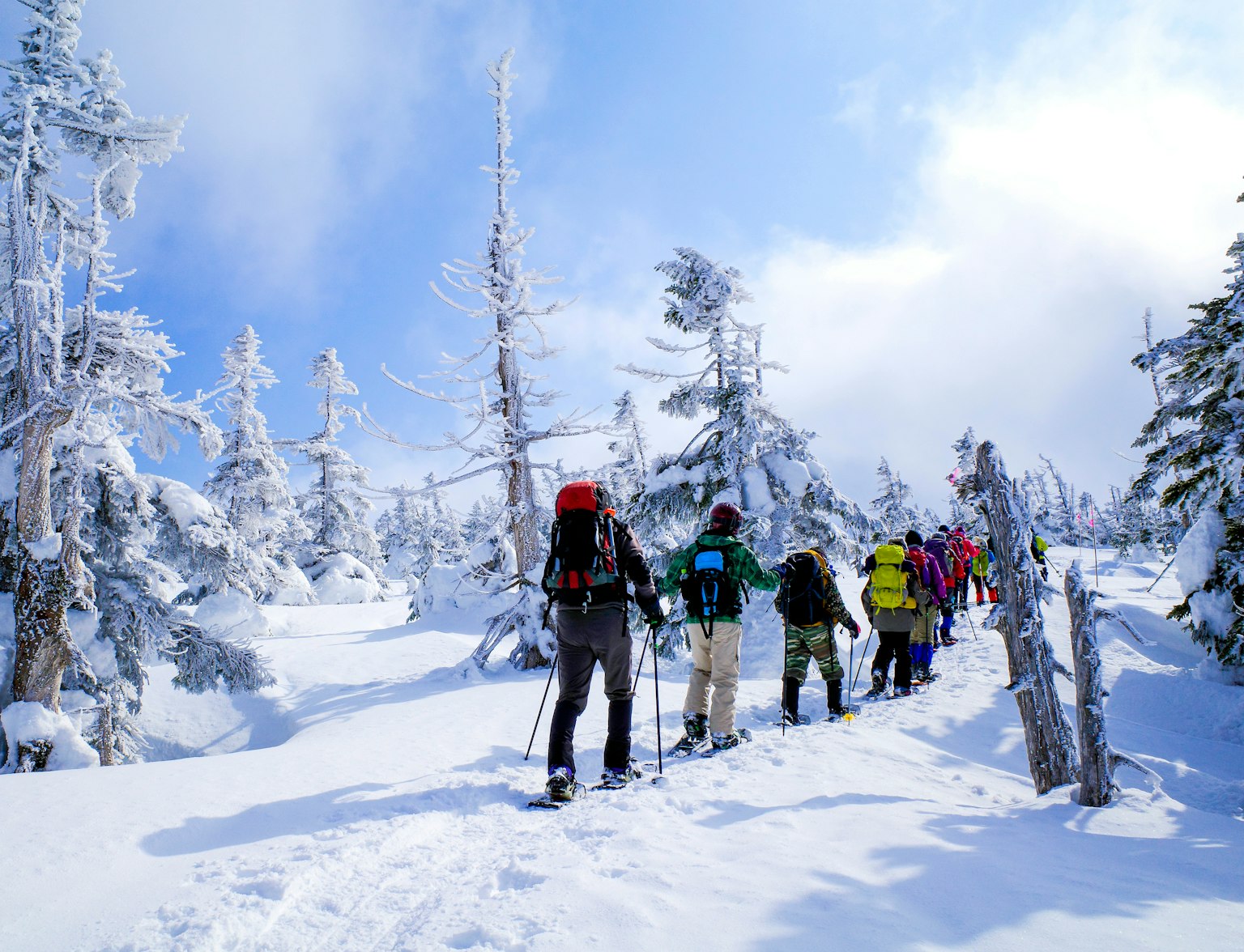
Experience the thrill of a unique winter escapade with our snowshoeing expedition.
Travel Duration
The travel duration for the Shinkansen (bullet train) from Tokyo to Hokkaido, specifically to Shin-Hakodate Hokuto Station, is approximately 4 hours. This route allows travelers to experience the scenic journey across Japan's landscapes at high speed, seamlessly connecting from Tokyo Station through the Seikan Tunnel to the northern island.
1. Book in Advance : Secure your tickets early, especially if you plan to travel during peak seasons like the cherry blossom period or national holidays. It not only ensures availability but often offers cheaper rates.
2. Reserve Your Seat : While unreserved seats are available, reserving your seat guarantees comfort and peace of mind, especially during busy travel times. Reserving reserved seats is advisable if traveling with luggage or in a group.
3. Leverage the Japan Rail Pass : If you're planning extensive travel across Japan, consider purchasing the Japan Rail Pass, which includes access to the Shinkansen. It can offer significant savings, particularly for long-distance journeys like Tokyo to Hokkaido.
4. Check for Shinkansen Services : Different Shinkansen services, such as Hayabusa, the fastest on the Tokyo-Hokkaido route. Check the types of services and select one that best fits your schedule and travel preference.
5. Pack Lightly for Easy Travel : Space on Japanese trains can be limited, especially if you are traveling with large suitcases. Pack lightly or use delivery services to send your heavy luggage to your destination in advance.
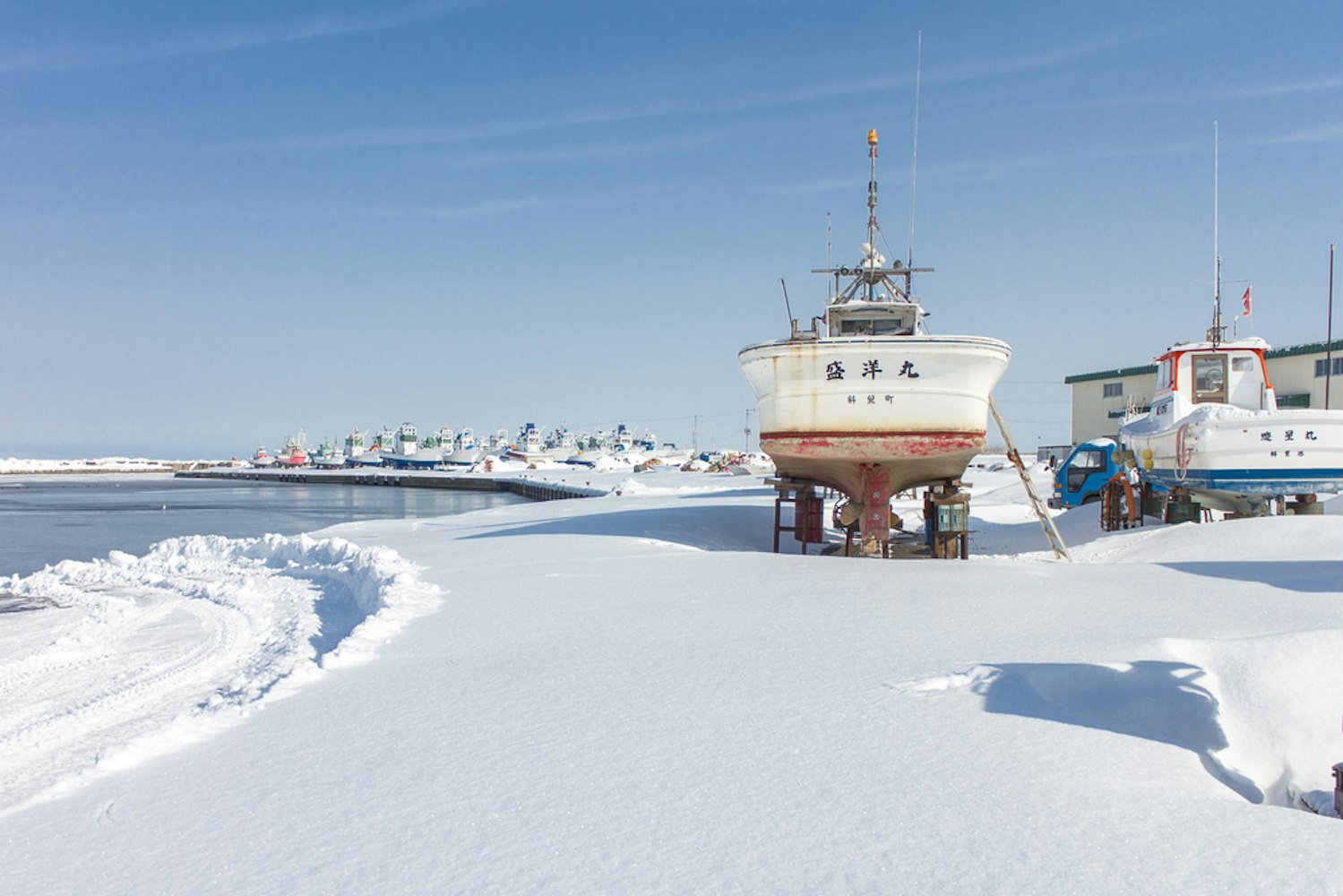
Ferry travel between Oarai Port and Hokkaido is a splendid choice for those who are not in a hurry and wish to savor the maritime journey. The ferries provide a magnificent view of Japan's coastal beauty, making the sea route a unique and picturesque experience.
Additionally, this option is typically more economical than flights or the Shinkansen. It offers a chance to relax and appreciate the slower pace of travel while enjoying the expansive oceanic surroundings.
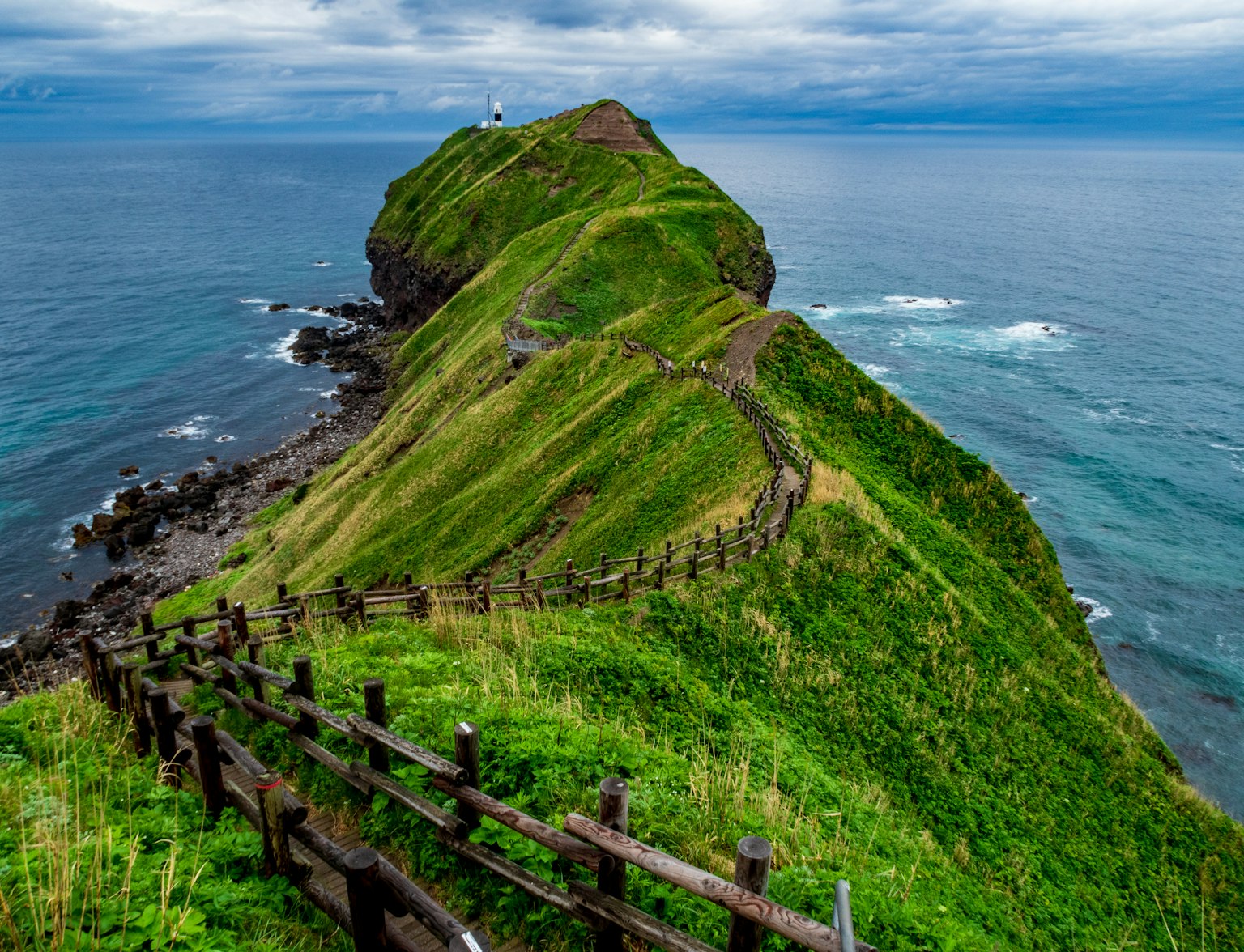
Embark on a journey through Sapporo's breathtaking sights.
The ferry travel time from Tokyo (Oarai Port, Ibaraki) to Hokkaido (Tomakomai) typically takes about 18 hours. This duration applies to the regular ferry services provided by companies such as MOL Sunflower , which offer evening and night ferry options.
1. Book Early : Especially during peak travel seasons, ferry tickets can sell out quickly. Booking your tickets in advance ensures availability and often secures a better price.
2. Check the Weather : Weather conditions can affect the sea journey. Before departure, check the weather forecast and be prepared for potential delays or rough seas.
3. Plan for Comfort : The ferry journey is lengthy, often taking up to 20 hours. Pack comfort items such as a travel pillow, blanket and entertainment like books or loaded devices with movies.
4. Explore Onboard Facilities : Many ferries offer restaurants, baths, and observation decks. Familiarize yourself with the ferry's facilities to make your journey more enjoyable.
5. Consider Cabin Options : For long overnight journeys, consider booking a cabin. Although more expensive than a seat, having a private space to sleep and relax can significantly enhance the travel experience.
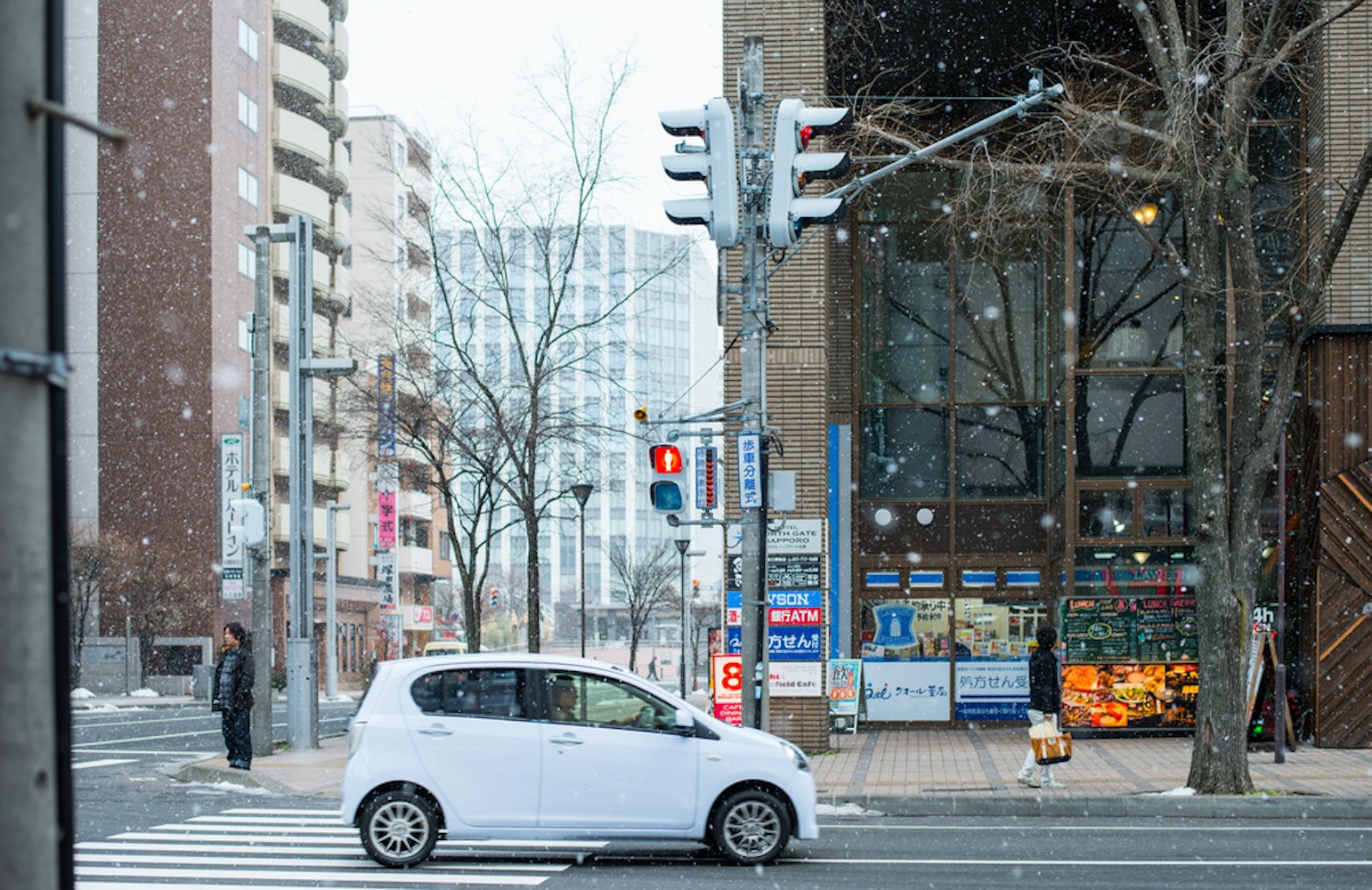
Driving from Tokyo to Hokkaido is an adventure for those who prefer road trips. The route involves a combination of expressways and a ferry crossing from Aomori to Hakodate if you drive the whole trip.
This option offers flexibility in travel schedules and the opportunity to explore rural landscapes and cities. However, be mindful of toll fees and peak travel times, which can significantly affect your travel time.
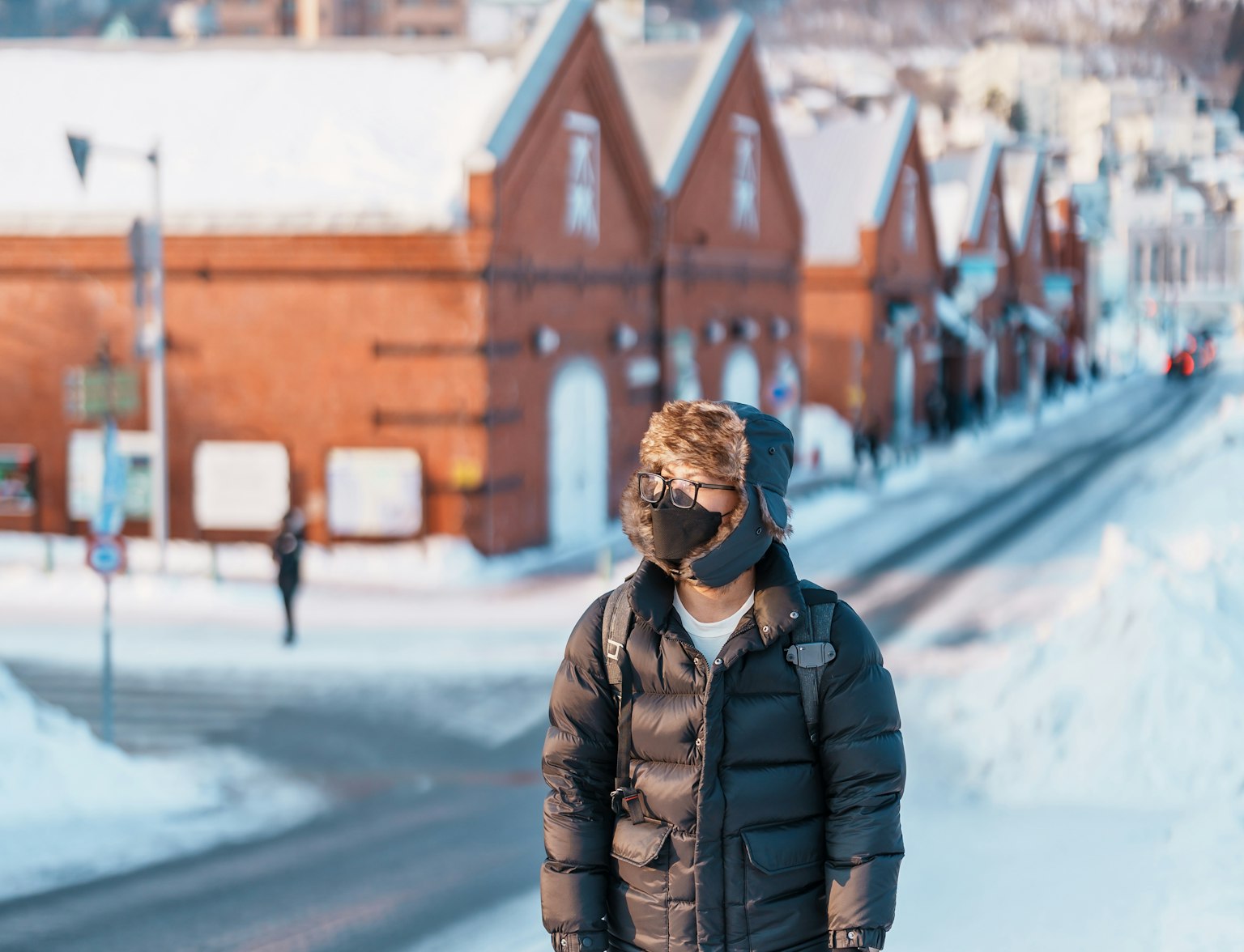
Unleash your sense of adventure with our Hidden Gems Tour of Hakodate!
The total driving time from Tokyo to Hokkaido is approximately 15 hours and 57 minutes. This duration is for the driving part of the journey and does not include time spent on ferries if that route is chosen.
If reasonable breaks are considered, travelers must plan for this extensive driving time spanning two days.
1. Plan Your Route Carefully : Map out your route, including expressways, and check for any road works or expected delays. Consider the best places to cross into Hokkaido, typically via Aomori, where you can take a ferry from Hakodate.
2. Book Ferry Tickets in Advance : If your route includes a ferry crossing, book your tickets in advance, especially during peak travel seasons. It ensures you will avoid delays or sold-out ferries when you arrive.
3. Prepare for Tolls : The journey involves several toll roads. Prepare an estimate of the toll costs beforehand and consider an ETC (Electronic Toll Collection) card rental for convenience and sometimes discounts on tolls.
4. Check Weather Conditions : Weather can drastically affect driving conditions, particularly in winter when roads might be icy. Always check the weather forecast for your travel days and plan for potential delays.
5. Stop for Rest : It's a long drive, so plan for adequate rest stops to stay alert. Japan offers well-maintained rest areas (Michi-no-Eki) along highways, providing food, restrooms, and sometimes hot springs.
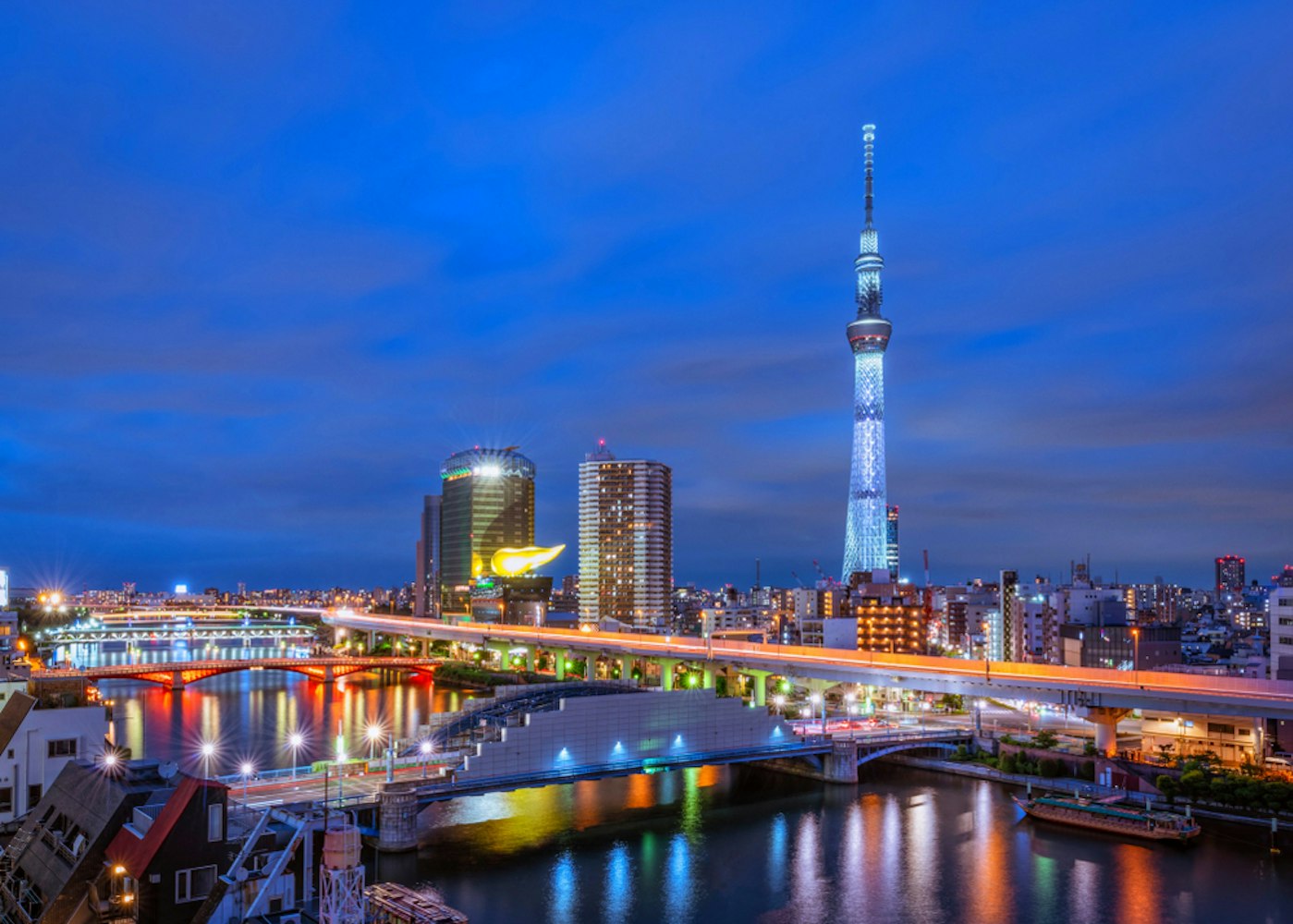
In Tokyo, accommodations range from luxury hotels in the bustling districts of Shinjuku and Shibuya to charming guesthouses in quieter areas like Asakusa. The city caters to all budgets, offering easy access to major transport hubs like Tokyo Station and Shinagawa Station, making departures to Hokkaido straightforward and convenient.
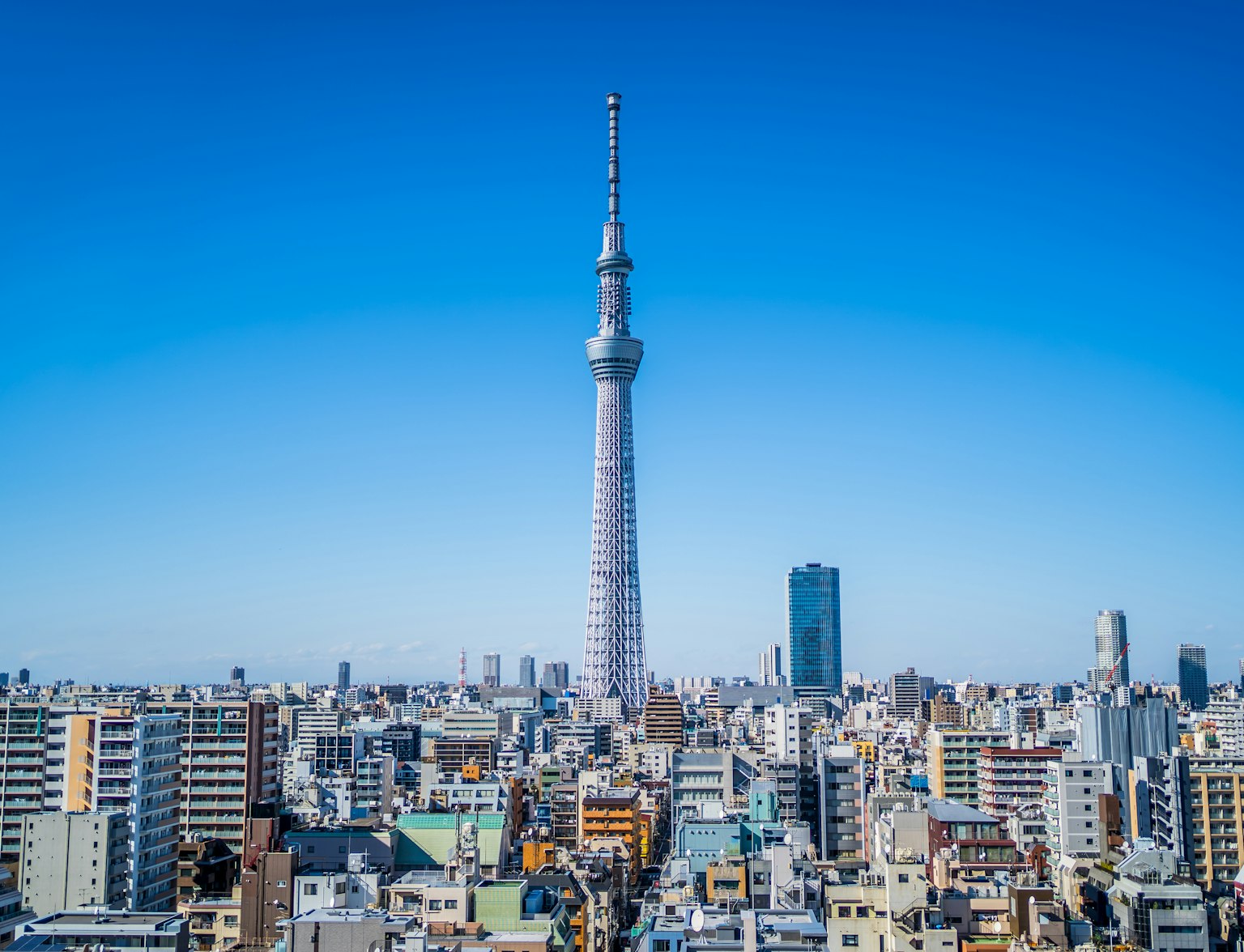
Experience Tokyo from its highest vantage point!
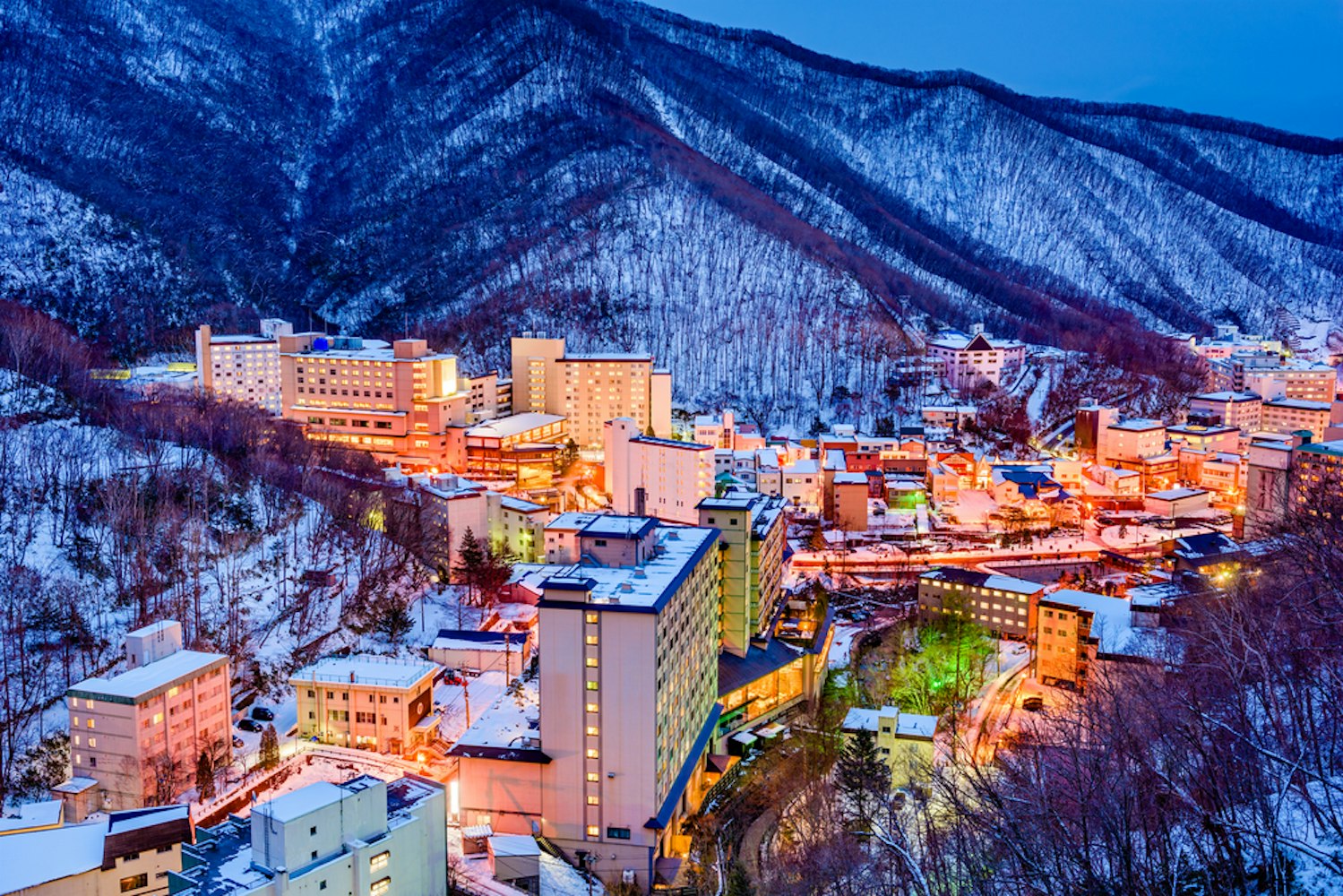
Hokkaido offers a variety of accommodations, from the luxury hotels of Sapporo , the capital of Hokkaido Prefecture, to the rustic inns in rural areas, providing an authentic Japanese experience. Staying near major transport hubs like Sapporo Station can simplify travel plans, especially for those planning to explore the wider regions of Hokkaido.

Discover the wonders of Hokkaido with our captivating day tour!
The journey from Tokyo to Hokkaido can be as memorable as the destination itself, with each mode of transportation offering a unique perspective of Japan. Whether you choose the efficiency of flying, the train's scenic route, the ferry's leisurely pace, or the freedom of driving, your trip to Japan's northernmost island promises an unforgettable adventure.
Plan carefully, choose the suitable accommodations, and you're set for a spectacular visit to Hokkaido .
How do you get from Tokyo to Hokkaido?
The Hokkaido Shinkansen line bridges Honshu, Japan's main island, directly to Hokkaido, facilitating a seamless journey from Tokyo Station to Shin-Hakodate Hokuto Station.
How much is the train fare from Hokkaido to Tokyo?
Costs 25,000 yen - 36,000 yen.
What is the best time to visit Hokkaido?
Hokkaido is a captivating destination throughout the year. However, if you're considering a visit during a specific season, here are the optimal times to explore Hokkaido:
For the spring cherry blossom season: Late April to mid-May.
For winter sports and ski adventures: December to February.
For viewing the autumn foliage: September to October.
For summer activities and escapades: June to August.
What is Hokkaido known for?
Hokkaido, renowned for its copious powder snow, is a prime winter destination for skiing and snowboarding. It features leading resorts such as Niseko, Rusutsu, and Furano.
Which month is coldest in Hokkaido?
During January and February, the coldest months of the year, heavy snowfall blankets Hokkaido's central and northern regions.
Continue reading
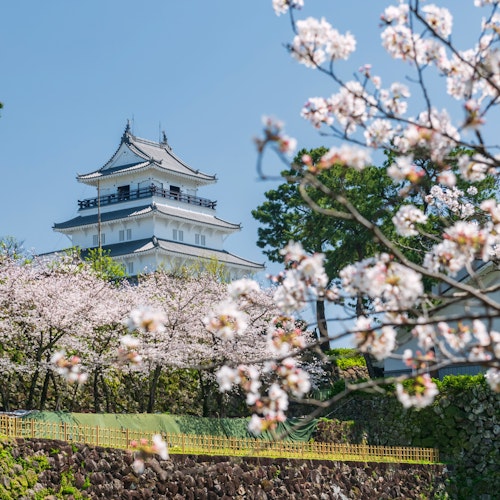
©Arukikata. Co. , Ltd. | ©Bringer Japan Z Inc.

Breakdown of How to Travel from Tokyo to Hokkaido! Need the Best Way to Get There? Here’s How!
Hokkaido is a treasure trove of picturesque spots that are sure to impress your inner shutterbug and friends back home on social media. With UNESCO World Heritage sites like Shiretoko and more, Hokkaido boasts broad, sweeping landscapes, vibrant seasons and must-see landmarks like the Sapporo Clock Tower and Otaru Canal . With so much to see and do, there are many travelers looking for the best way to get to Hokkaido from Tokyo .

There are many non-stop ways to get between Hokkaido and Tokyo, but each route has its perks. In this breakdown we’ll cover the merits and demerits of each route based on cost, travel time and accessibility. We’ll also add a few notes on which will help you enjoy the journey all the more.
1. What are the general ways to get from Tokyo to Hokkaido?
While people tend to mention “Hokkaido” as a single destination, Hokkaido is an especially vast area with considerable distance between each city. There are a number of routes and transportation methods available, but your best pick will depend ultimately on the region you plan to see and how you plan to get there. In broad terms, the major routes to expect will include either plane, Shinkansen (bullet train), ferry or rental car.
Traveling from Tokyo to Hokkaido By Plane
There are over 10 airports across the whole of Hokkaido, but New Chitose Airport provides easiest access to Sapporo Station. Haneda Airport and Narita Airport are the two major airports that will get you there from Tokyo. These two airports have different travel points to note, so we’ll introduce them as separate starting points.
Starting at Haneda Airport
Travel from Haneda Airport has many perks, including its convenient access putting it only a 30-minute train ride from central Tokyo. The airport provides a large selection of domestic flights, making it a hub airport from Tokyo to many places across Japan. For Haneda to New Chitose, there are over 50 flights available on any given day.
Traveling from Narita Airport
Narita Airport is located in Chiba, the neighboring prefecture next to Tokyo. It services over 115 cities across the world, making it the world’s gateway to Japan. The airport is known for having a wider selection of international than domestic flights, but in recent years, the increased number of budget airlines in Narita’s LCC terminal has drastically increased the number of domestic flights.

Located about 1 hour by train and 1.5 hours from central Tokyo, it’s hard to say that Narita is in a convenient location. Narita also has three different terminals where the third is especially distanced from the other two. Factoring the time to get between terminals on the airport campus, it’s important to prepare enough time to get to your final terminal. Just like Haneda and Narita Airports in Tokyo, you’ll need to ride a train or bus from New Chitose Airport in Hokkaido to get to the city. When comparing the cost of traveling from Tokyo to Sapporo Station, its important to include the time and fair for the transportation you use to get from Airport to station. If you decide to take an LCC from Narita Airport, the distance between Tokyo Station and Narita Airport is greater than the distance between Tokyo Station and Haneda Airport, so the transportation cost and travel time will be that much greater.
Going from Tokyo to Hokkaido By Shinkansen
The Hokkaido Shinkansen line first opened in 2016, making it possible to travel from Tokyo Station to Hokkaido by bullet train. However, the final Hokkaido Shinkansen is Shin Hakodate Hokuto Station (as of October 2019), so you will still need additional trains and/or buses if your final destination is Sapporo.

From Tokyo to Hokkaido By Ferry
Another option from Tokyo to Hokkaido is to travel by ferry, which offers a view of the Pacific Ocean along the way. While the ferry departs from Oarai Port and arrives in Tomakomai Port, there are convenient bus options that run from Tokyo St. to Oarai Port, and from Tomakomai Port to Sapporo St. For a discount, make sure to find ferry plans that include bus fare for an even more wallet friendly option to Sapporo.

Rental Car Options from Tokyo to Hokkaido
Renting a car is another option that will get you to Hokkaido by driving through Tohoku region. Driving can make for a fun roadtrip set to your own design, but the total trek will set you back 17 hours, so you will want to plan for this length of time. At the end you will also need to travel by Tsugaru Kaikyo Ferry, the straight that separates Japan’s main Honshu Island and Hokkaido. Considering the total cost of highway tolls, ferry fee, rental car fee and fuel, the total cost of renting a car can add up.

2. The Costs and Time per Each Travel Option
Here’s a breakdown of just how much you may spend per each transportation option. This comparison is based on data as of March 2021.

Flights Departing from Haneda Airport
You can get from Tokyo Station to Sapporo Station via a flight from Haneda Airport in 3 steps:
- Take a train or limousine bus from Tokyo St. to Haneda Airport
- Fly from Haneda Airport to New Chitose Airport
- Take a train or highway bus from New Chitose Airport to Sapporo St.

Below are approximate travel time and costs for routes starting from Haneda Airport:
1. From Tokyo Station to Narita Airport
If going by train...
Keikyu Line Start at Tokyo St. by taking the JR Tokaido Line to Shinagawa St. Here you’ll transfer to the Keikyu Line and ride it to the Haneda Airport Domestic Terminal Station. Total travel times average 30-40 minutes for a total fare of 460 yen.
Tokyo Monorail Start at Tokyo Station by taking the JR Yamanote Line to Hamamatsucho St. Here you’ll transfer to the Tokyo Monorail and ride it until Haneda Airport Terminal 2 Station. Total travel times average 30 minutes for a total fare of 649 yen.
(Prices shown are cost when using an electronic IC prepaid transportation card)
If going by bus...
Board the bus at Tokyo Station Yaesu North Exit (Tekko Building). Total travel times average 50-60 minutes for a total fare of 950 yen (*bus departing at 3:55am is 1,900 yen).
2. From Haneda Airport to New Chitose Airport
The flight from Haneda Airport to New Chitose Airport takes approx. 1 hour and 30 minutes. Prices for economy fare range between 8,000 and 40,000 yen.
3. From New Chitose Airport to Sapporo Station
- By train: total travel time by JR Rapid Airport train is about 40 minutes for a fare of 1,150 yen
- By bus: total travel time is about 75 minutes for a fare of 1,100 yen
Adding the approximate travel times of all 3 steps, you can expect a trip from Haneda Airport to Sapporo Station. To take about 4-5 hours. For cost, the cheapest flights can afford a trip for around 10,000 yen, but it is more realistic to expect somewhere between 20,000-40,000 yen based on average fare of flights from Haneda.
LCCs Departing from Narita Airport
LCC is an acronym for low cost carrier, which are airlines that offer bottom-line costs by simplifying the operation costs and flight-related services they provide. Conversely, traditional airline companies like Japan Airlines and All Nippon Airways are referred to as “full-service carriers” to differentiate between the two.

LCCs offering flights from Narita Airport to New Chitose Airport include Jetstar Japan, Spring Airlines Japan, and Peach Aviation. Each company has different pricing, services and operating rules. LCCs often after low base fares for flight, but depending on carrier, you may see additional charges in addition to the plane fare. Please make sure to take note. Just like Haneda Airport, the route via Narita Airport can be broken into 3 steps:
- Take a train or limousine bus from Tokyo St. to Narita Airport
- Fly from Narita to New Chitose Airport
Below are approximate travel time and costs:
1. Tokyo Station to Narita Airport
JR Sobu Rapid Line Start at Tokyo Station and take the JR Sobu Rapid Line to Narita Airport Terminal 2·3 Station. Total travel time averages 90 minutes for a fare of 1,342 yen
Narita Express Start at Tokyo St. and take the JR Narita Express to Narita Airport Terminal 2·3 Station Total travel time is about 50 minutes at a fare of 3,072 yen
Keisei Main Line Start at Tokyo St. and take the JR Yamanote Line to Nippori Station. Transfer here to the Keisei Main Line and get off at Narita Airport Terminal 2·3 Station Total travel time is about 90 minutes for a fare of 1,199 yen
Skyliner Start at Tokyo Station and take the JR Yamanote Line to Nippori Station. Transfer here to the Keisei Main Line and get off at Narita Airport Terminal 2·3 Station Total travel time is about 55 minutes at a fare of 2,664 yen
Total travel time is approx. 80-90 minutes for a fare of about 1,000 yen
2. Narita Airport to New Chitose Airport
The flight from Narita Airport to New Chitose Airport takes about 1 hour 50 minutes. Economy seats will cost about 4,900-28,000 yen
3. New Chitose Airport to Sapporo Station (identical to taking a flight from Haneda)
If you add the travel time of all 3 steps, the trip from Narita Airport to Sapporo Station should take about 4.5 to 5.5 hours total. The cheapest flights may bring total travel costs down to about 7,000 yen, but you will need to check for potential additional costs per the rules of your airline carrier. Make sure to note details like ticket purchasing fees, loading fees and baggage weight limits. Another tip is to check carrier policies for cancelled flights. In some cases, a flight maybe cancelled by unforeseen reasons like poor weather, in which you may only receive a refund voucher for the same company (no cash refunds). In other cases, your flight may be rescheduled for another day, where you still need to front the costs of any hotel expenses.
Shinkansen (Tokyo Station〜Shin Hakodate Hokuto Station〜Sapporo Station)
The final station of the Hokkaido Shinkansen is Shin Hakodate Hokuto Station. Here’s how to get all the way to Sapporo Station in 2 easy steps:
- Take the Shinkansen from Tokyo St. to Shin Hakodate Hokuto St. (approx. 4 hours)
- Take a train or high-speed bus from Shin Hakodate Hokuto St. to Sapporo St. (approx. 3.5 hours)

The entire trip takes roughly 8 hours by Shinkansen. For budget-friendly travel costs, the [JR East-South Hokkaido Rail Pass] is available to overseas travelers. We’ll introduce some travel pass prices here. If visiting Japan (on a short term visa of 90 days or less) with a foreign passport, you can purchase an exclusive discounted ticket for 26,900 yen if purchased outside Japan. (13,450 for children ages 6-12). This pass offers unlimited rides on JR Hokkaido Lines (Southern Hokkaido) and JR East Lines (Kanto and Tohoku areas) for 6 days of your choice over a 14-day period that stars when you receive your pass. You can use the pass for an unlimited number of times on Shinkansen and limited express trains. This includes bullet train travel from Tokyo to Shin Hakodate Hokuto, making the JR East-South Hokkaido Rail Pass a great option.
Details on the JR East-South Hokkaido Rail Pass
Here is a breakdown of how to get from Tokyo to Hokkaido by ferry.

1. Tokyo ⇨ Oarai Port
A direct bus will take you from Tokyo St. to Oarai Port for 2,280 yen (1,140 yen for children), a trip that takes approx. 2 hours and 30 minutes.
2. Oarai Port ⇨ Tomakomai Port
The fare to ride is 9,900-57,200 yen depending on season and room type. Total travel time averages 18 hours.
3. Tomakomai Port ⇨ Sapporo Station
To get from Tomakomai Port to Sapporo St., you can take a bus from the Tomakomai West Port Ferry Terminal to Tomakomai Station and take a train to Sapporo St., or you can take a high-speed bus from Tomakomai West Port Ferry Terminal to Sapporo St..
If by train, Start at Ferry Terminal and take the High-Speed Tomakomai Bus operated by Hokkaido Chuo Bus to Tomakomai Station Bus Stop. From Tomakomai Station take the JR Chitose Line Limited Express Super Hokuto and get off at Sapporo Station. Total travel time is approx. 80 minutes for a fare of 3,080 yen.
If going by high-speed bus...
If by high-speed bus, Start at Ferry Terminal and take the Tomakomai High-Speed Bus directly to Sapporo Station. Total travel time averages 2 hours at a fare of 1,330 yen.
By ferry, the trip takes approx. 23 hours; an entire day. However, if taking the less expensive room option you can get to Sapporo for only 14,200 yen. Between October 1, 2019 and March 31, 2020, there's an extra special discount available through the Pacific Story plan. On the Pacific Story plan, the total cost including high-speed buses from Tokyo Station to Oarai Port, and between Tomakomai Port and Sapporo Station would total 10,260 yen. In terms of cost, this is a very wallet-friendly way to get from Tokyo to Hokkaido.
Rental Car (expressway, ferry)
If journeying by rental car, the total drive from Tokyo to Sapporo without breaks would still set you back 17 hours. However, adding in breaks or detours for sightseeing will likely make your drive a two-day trip. Express tolls can cost about 20,000 yen, the Tsugaru Kaikyo Ferry from Aomori to Hakodate costs 20,000 yen. Adding in the rental car fee and 1,000 km worth of gas, you can expect this route to be long and the possibly most expensive way to travel.
Summing Up: A Comparison of the Good and Bad of Each Mode of Travel
At this point you should have a full idea of travel time and cost to get from Tokyo to Sapporo St., whether by plane, bullet train, ferry or car. Next we’ll show a full comparison of all methods so you can see the pros and cons of each laid out.
If Taking a Plane from Haneda Airport

If Flying with an LCC from Narita Airport

If Going By Shinkansen

If Going by Ferry

If Going By Rental Car

Let’s sum up. If looking for shortest travel time, flying is your best option. If looking to travel in a relatively short amount of time, without worry of weather, Shinkansen is your best bet. You can also travel smoothly, with less transfers on the bullet train. If time and expense are not a concern, you may consider the scenic route, driving through Tohoku by rental car. If you want a budget-friendly, smooth ride to Hokkaido, the low and slow option offered by ferry is for you.
Travel-worthy and Memorable Ways to Travel
Enjoy a leisure ride on a cost-effective ferry. If you haven’t travelled by ferry before it may be hard to imagine. Ferry-bound travel is not just a way to get from point A to point B, but a ride that’s packed with perks of its own. Unlike a plane or train, a trip onboard a ship is a memory in itself that we’d like to lay out below.

MOL Ferry Sunflower
For ferries, we recommend “Sunflower,” operated by MOL Ferry. This newly built ship was put into service in 2017, stylized with luxurious private suties and relaxing Japanese-style rooms. Enjoy a carefree ocean voyage for only 10,800 yen each way, with choices of departure times late into he night. The Novelties of a Trip Aboard the Sunflower:
1. A leisurely trip with insta-perfect views of the Pacific Ocean at Dawn & Dusk
A full day’s ferry ride means the rare chance for photos as the sun rises and falls against the Pacific Ocean. Set sail and the dusk will begin to fade into quiet night. As the moonlit ocean awaits you can enjoy the full blanket of starry skies on a clear night. In the morning, the dark skies give way to the break of dawn and bring with it a stunning view of the sun as it breaches the horizon. This is one picture-perfect view that’ll impress all you friends on social media and back home. The sun then climbs the skies, making the ocean spread like a shimmering sea before your eyes. Inhale the deep ocean-scented breeze and recharge the senses. On a lucky day, you may even spot a few dolphins.

2. Full Range of Activities Onboard
On your ride, you’ll find plenty to enjoy inside the ferry as well. With event programming and a full range of onboard facilities there are countless ways to enjoy your trip. From musical performances and magic shows, to juggling, portrait drawing and hula dancing and more, there’s plenty to participate in. You can even access 100+ movies for free via smartphone or tablet.

3. Lavish and Wide Array of Onboard Perks
Whether with family or a group, there’s plenty to enjoy including large, scenic public bath, ocean-side seating, free sauna, gift shop an full game corner. For small children there’s Kids Land. Equipped with a baby room with changing tables and nursery so families with young infants can travel with ease. One surprising fact is there’s even a pet space and dog run! Each aspect of the ship is meticulously customized to please any guest at any age. For meals you can expect a classy, spacious restaurant and a full course set for only 1,530 yen with a side of oceanside view. There are two full course sets to choose from: a Japanese set with dishes like tempura and sashimi, or a Western set featuring various meat dishes. Feel free to pick whatever suits your fancy.

4. Upgrade your Cabin for Optimum, Hotel-Like Private Comfort
The least expensive Tourist plan consists of beds with dedicated shelves separated by curtains, but you can also upgrade your room depending on how you prefer to travel.
For around 2,000 yen, you can upgrade to the Comfort plan that comes with a bed equipped with a TV (all seats have an electrical outlet) and a secure, private space. For around 7,000 yen, you can upgrade to a private room. Various types of rooms including Japanese-style rooms, Western-style rooms, ocean-view rooms, and rooms where pets are permitted are also available options.

5. Eliminate any communications concerns with translation system
While traveling in Japan, language barriers can be an inconvenience. The Sunflower has anticipated this, installing translations systems throughout the ship for guests from abroad. You can use the system at each terminal by contacting an operator via video call who can then interpret for you. Additionally, the main ship (evening departure) is equipped with an automatic translation system called “ili PRO”. The system is available in Chinese, English, and Korean.
Despite the price and package perks of a ferry, many are not sure what the trip entails. We hope at this point you know a little more about riding via ferry. The trip is lengthy, but instead of time from Point A to Point B, the ship offers a novel chance to enjoy the journey. With impeccable views of the ocean, a lavish ship interior and full event programming there’s plenty to enjoy. Your time on a ferry is unlike any on land. In the company of your fellow traveler, you’ll find vacationing elderly couples, young budget travelers, and families enjoying a leisurely ride. Thanks to the array of service plans there something for everyone. A tranquil trip and a colorful crew awaits you on the ferry. On a hectic and busy trip, this is one way to take it low and slow. If you have some time to spare, the ferry is a highly recommended way to visit Hokkaido.
Basic information regarding the operating cost/cost of the Sunflower
We hope you’ve enjoyed this full breakdown of the many ways to get to the hot spot destination of Hokkaido, along with one method you may not have known –the ferry. With pros and cons for each method of plane, bullet train, ferry and car, we hope you’ll bookmark this article for planning your next trip to Hokkaido!
Thank you for log in.
Thank you for signing up. A confirmation email has been sent to your registered email address.
This website uses cookies to ensure you get the best experience on our website. Learn more

How to Plan Your Perfect Hokkaido Itinerary In 2024
- Last Updated: January 26, 2024
We visited some of the best parts of Japan in this 12-day Hokkaido itinerary , and want to inspire you to do the same!
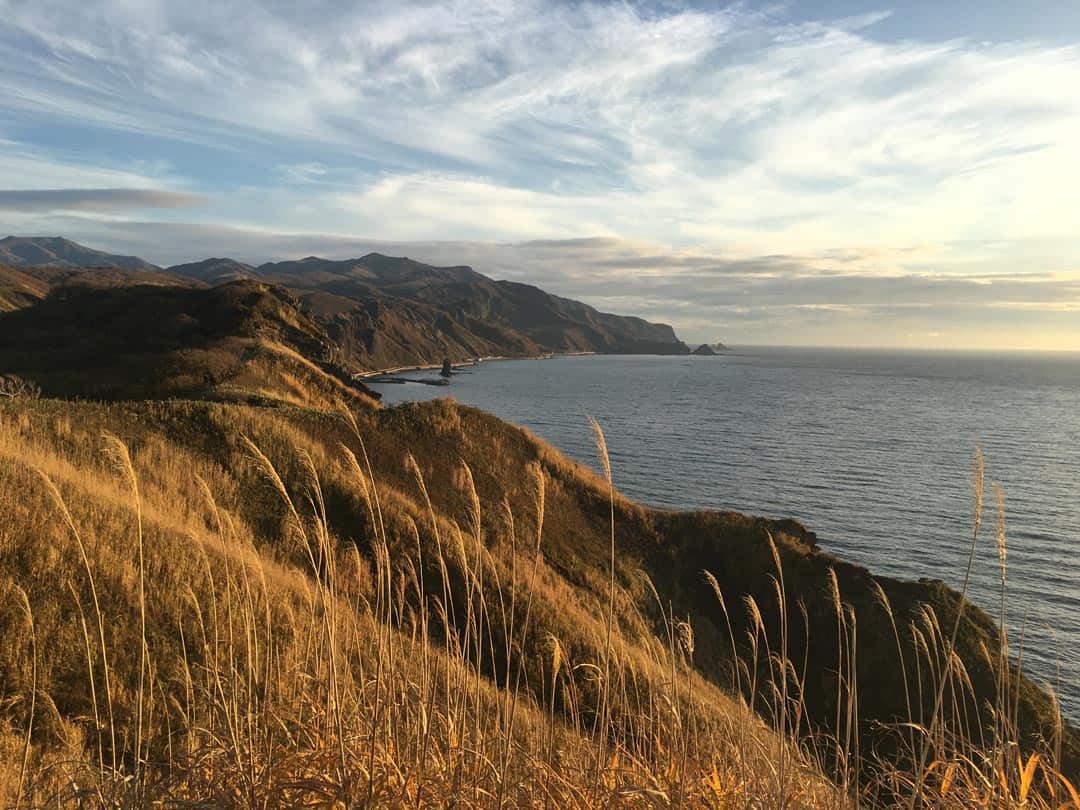
Make no mistake about it, Hokkaido is big. Very big. Distances are vast, the landscape wild and untamed and the weather can change at the drop of a hat. That’s what makes planning your Hokkaido itinerary so difficult.
This is easily one of the most beautiful places we have ever had the pleasure of visiting.
Full of dramatic natural scenery, hot springs, delicious food, national parks, ski resorts, and charming towns, there is so much to see and do here.
It is also very likely that you will share this stunning scenery with very few people.
So if you have time for a Hokkaido road trip, definitely fit it into your Japan trip.
Table of Contents
Getting Around Hokkaido
When to visit hokkaido, day 1 – sapporo, day 2 – sapporo to asahikawa, day 3 – asahikawa to utoro (gateway to the shiretoko national park), day 4 – shiretoko national park, day 5 – shiretoko national park, day 6 – shiretoko national park to akan national park, day 7 – mashu-ko and mashu-dake, day 8 – mount io, kussharo-ko and akan-ko, day 9 – akan national park to new chitose via kushiro wetlands, day 10 – shakotan peninsula, day 11 – noribetsu onsen and lake toya, save this pin for later, hokkaido travel tips.
If you’re trying to design your Hokkaido itinerary there are a few things you need to keep in mind first. These are some of our Hokkaido travel tips.
READ MORE: Check out our other guide on the absolute best things to do in Japan !
The best way to get around Hokkaido for this 12 day itinerary is by renting a car. You can check out our post on how to rent a car here .
Hokkaido does offer a JR pass, but services to the major national parks are limited and even then you will still need to take a bus or taxi to get into the parks proper.
Some of the most stunning scenery we saw was when we were driving. Having your own set of wheels will make your experience infinitely more enjoyable and convenient.
The best way to get around is to rent a car and explore on your own! We recommend Rental Cars , which has the largest range of vehicles for the best value on the market.
Hokkaido has 4 very distinct seasons and each of them have their merits.
Spring brings blossoming flower fields, summer brings bright sunny days, autumn gives us the changing of the leaves and winter dumps a few feet of snow all over the island.
We ended up doing our Hokkaido itinerary in autumn, which gave us beautiful colours and very few tourists. That being said it did bring some cold weather and occasional rain.
However depending on what your interests are you may prefer to travel in a different season. A Hokkaido 12 day itinerary can be beautiful at any time of year.
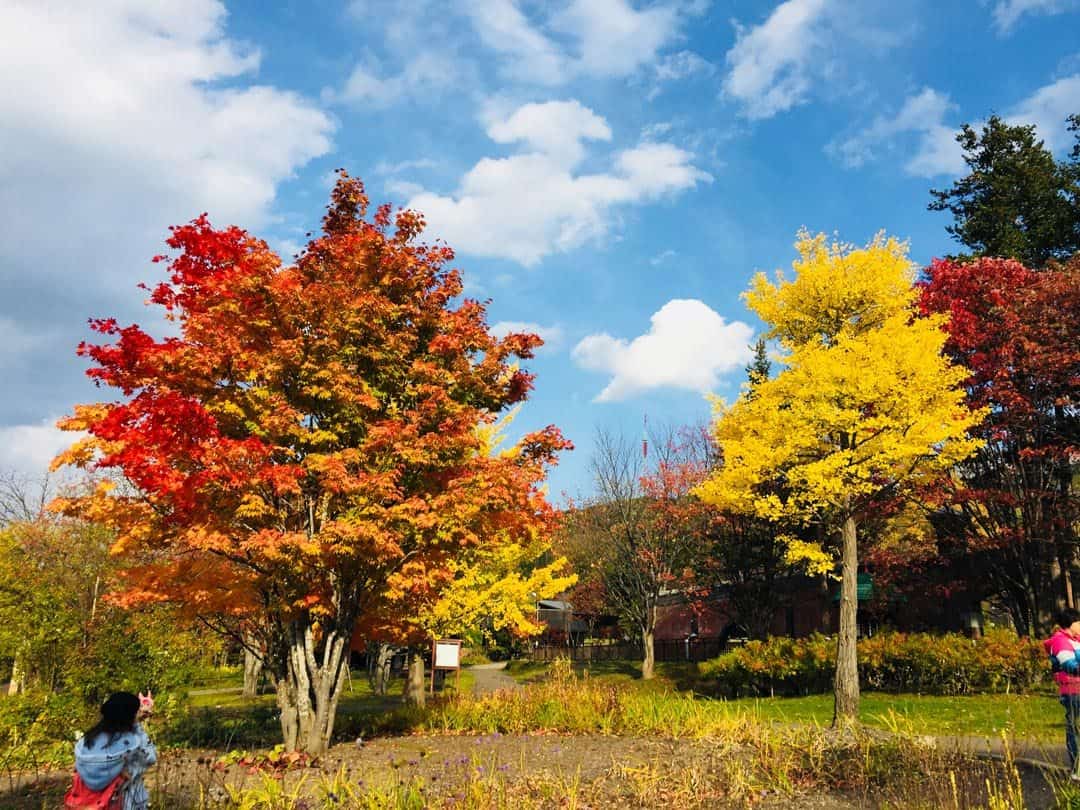
Our 12 Day Hokkaido Itinerary
This is the exact trip we did during our travels in Hokkaido, with a list of the places we visited, what we did and where we stayed. From the Sapporo Beer Museum and Beer Garden, to the national parks and lakes, this Hokkaido 12 Day Itinerary is packed with cool attractions!
We picked up our wheels and headed for Sapporo City at the start of our 12 day itinerary. This is a great opportunity to pick up some cold weather clothes if you haven’t got that many with you.
Outside of summer, it can get really cold, especially in Shiretoko and Akan. We brought some extra warm clothes and it was definitely a worthwhile investment.
Sapporo is a lovely city to wander around. Checking out the Sapporo TV Tower Observation Deck, Sapporo Clock Tower, Odori Park, Sapporo Beer Museum, and the botanical gardens is a great way to spend an afternoon.
In the evening we headed to the top of Mount Moiwa for a beautiful nighttime view over the city. The Sapporo TV Tower also has an incredible view from the Observation Deck, if you didn’t get the chance to visit there earlier in the day.
The fresh seafood is amazing, Hokkaido has the best sashimi in Japan according to the Japanese.
- Where To Eat: Ramen Yokocho and any izakaya serving sashimi.
- Where We Stayed: We stayed in an AirBnB in Sapporo . This place does have parking, it is important to check that the places you stay in Hokkaido, be it hotels, guesthouses or airbnb’s have parking as it is not always a guarantee. Click here to get $35 off your first AirBnB stay .
Check out our brand new and complete guide on the best things to do in Sapporo !
Next on our 12 day itinerary, this is where our Hokkaido Expressway Pass came into use. You save a few hours taking the highway to Furano. After getting off the highway it’s stunning scenery all the way to Furano.
If you’re visiting in winter, Furano Ski Resort is one of the best places to go skiing and snowboarding.
But you’ll likely be doing a road trip outside of winter when the weather is more favorable.
Be sure to check out Farm Tomita for a mind blowing display of colour. They sell everything lavender, including a rather delicious lavender ice cream. It sounds awful, but like almost everything in Japan it was delicious.
From here you can take route 237 winding through the Japanese countryside to the quaint little town of Biei. From here you can head to the Blue Pond, a place that you will find on many Japanese postcards.
We elected not to do the above. Instead we attempted to get to the Asahidake cable car station for sunset. The weather had been really cloudy all day until around 3:00 so we decided to go for it.
Around 800m we were surprised with a snow storm. Within a few minutes the road was slippery and our windscreen wipers creaking under the weight of snow. Unsurprisingly we abandoned our plans and headed towards Asahikawa for the night.
Where To Eat: Farm Tomita is a good start for a lavender based snack. An advantage of the hotel is the amazing little izakaya over the road from the hotel serving great food for an even better price.
Where We Stayed: Trend Hotel Asahikawa – Nice hotel, but you can probably find something cheaper when you visit Hokkaido, we booked very late in the day.
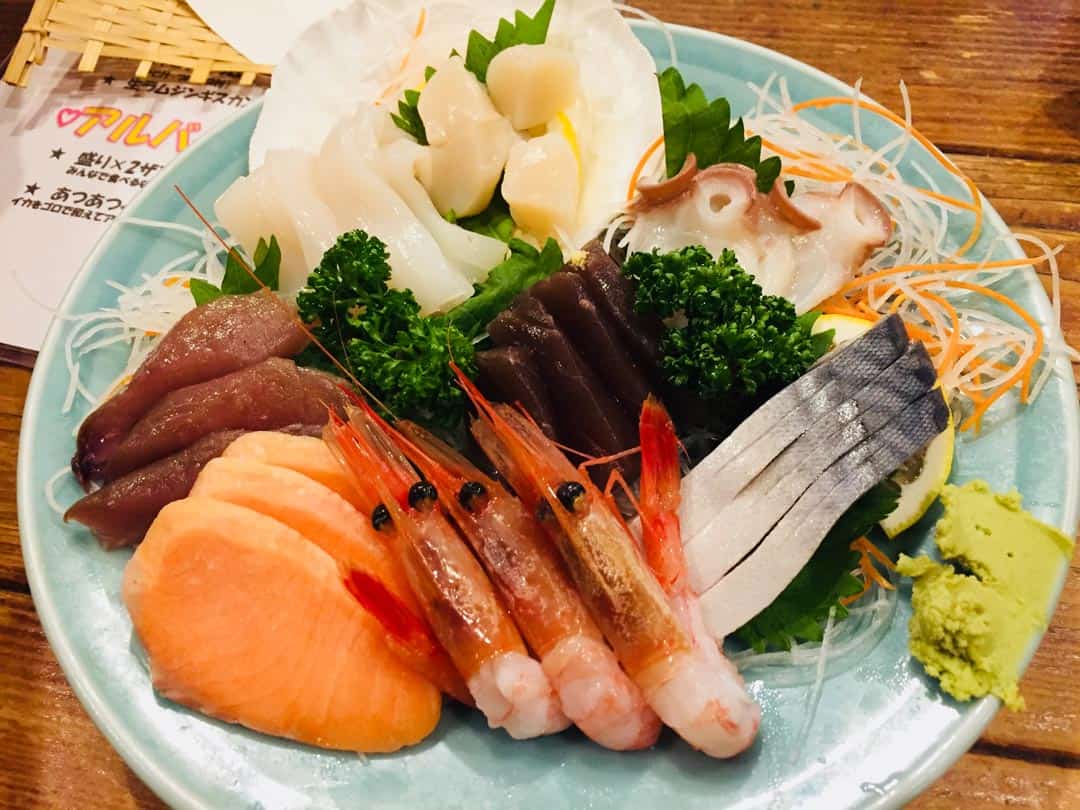
We had originally planned to spend the day exploring the Daisetsuzan National Park and then drive onto Shiretoko the next day, but the rain put pay to our plans. One advantage of this was it gave us extra time for later in the trip.
We took route E39 from Asahikawa, but be warned the area circling the northern end of the Daisetsuzan National Park will make you forget about the previous day.
This is a long drive, it probably took us between 4 and 5 hours with rest stops included. This and the previous days drive were where Hokkaido Express was invaluable. It saved us so much time by being able to use the highway.
Utoro is a tiny village at the edge of the Shiretoko National Park. As a result most restaurants stay open till around 8pm.
As a side note, the next town down from Utoro is Shari. Accommodation is usually a little cheaper here, but you a now an hour from the park as opposed to 15 minutes in Utoro.
Where To Eat: Options are pretty limited in terms of choice, however there is a great ramen restaurant and a lovely izakaya about 10 minutes walk from the hotel. Staff inside recommended these places to us.
Where We Stayed: Iruka Hotel – Great little guesthouse with friendly staff and a good breakfast .
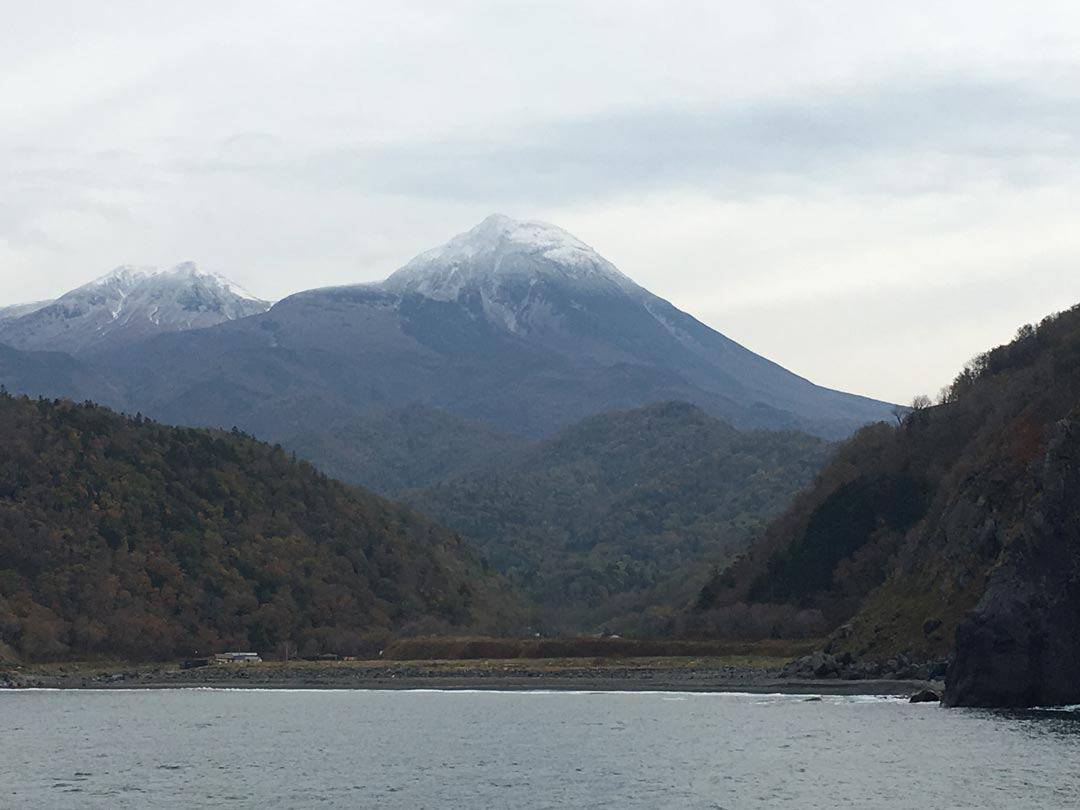
We checked out the Shiretoko Go-Ko (5 lakes). The long walk around is pretty amazing and you get to sit through a rather interesting safety video about how to avoid bears. The main thing to take away from the video is that if a bear attacks you there is nothing you can do, so best avoid them.
We then checked out the Fureppe Waterfalls, which offers some pretty incredible views. Later on in the day we enjoyed a free foot bath. The guesthouse staff can mark them on a map for you.
One thing to note about Shiretoko is that the weather can change very quickly. Most of our time there was cloudy, but no rain and a fair few blue skies.
Where We Stayed: Iruka Hotel – Great little guesthouse with friendly staff and a good breakfast. This guesthouse has a number of WOOFERs working there who can also offer great advice on what to do when you visit Hokkaido.
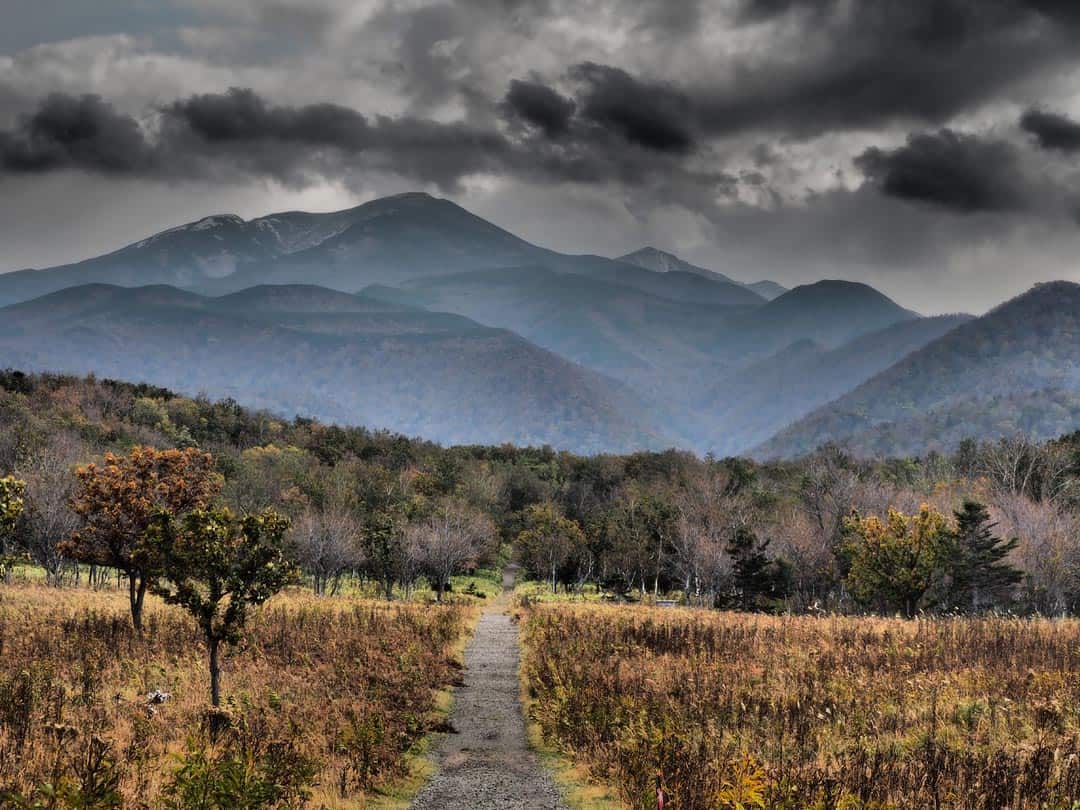
We spent day 5 of our Hokkaido trip on the eastern side of the peninsula around the port town of Rausu.
To get there follow the road to the Shiretoko pass. The pass is absolutely stunning and is a must if you’re in the area. you get amazing views over the coast, and if you are lucky you will be able to see the summit of Mount Rausu.
When you arrive in Rausu take a left and follow route 87 and check out some of the beach foot spas that run along the coastline. It’s a surreal experience to dangle your feet into a foot spa whilst waves from the sea of Okohtsk crash onto the beach.
The Kamuiwakka Hot Falls back towards Utoro make a great place to stop off on your way back. Do be aware that this is an unsealed 10km road. As soon as dusk hits be on the lookout for deer.
Where To Eat: Sashimi in Rausu. A tiny little restaurant south of the centre right on the coast gave us an incredible meal.
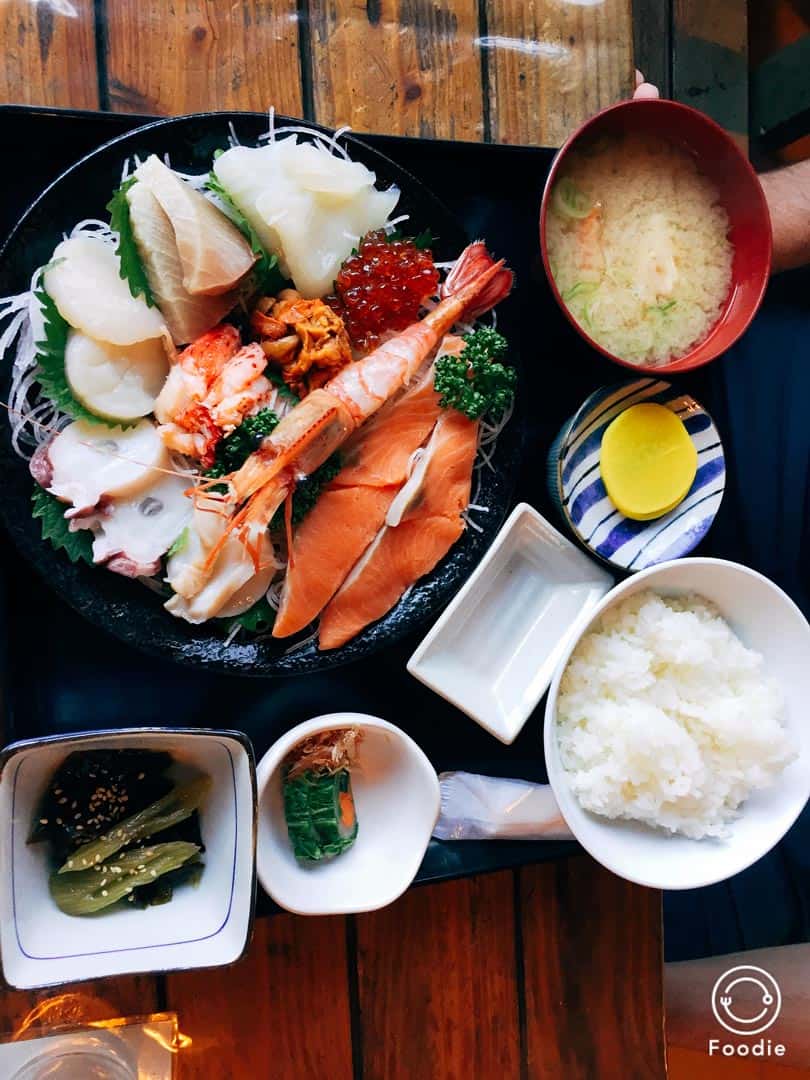
We drove via Abishiri along the Okhotsk road which offers some spectacular coastal views. Abishiri has a really interesting prison museum where you can learn about Hokkaido’s history.
From here we headed on to our onsen hotel close to Teshikaga in the Akan National Park. We entered the park along route 102 which takes you through a pass that gives you incredible views of Lake Kussharo. Try and get there around sunset for the best views.
Lots of accommodation in the area offers breakfast and dinner. We decided not to do dinner to give us the chance to go out and explore the nearby towns. Here it is the same story as Shiretoko, restaurants close early, so try and avoid eating late.
The rooms at the hotel do not have showers or baths in the rooms. You wash in the onsens in the hotel. A word of warning, it can take a bit of practice to get the temperature right as the taps are extremely sensitive, but its a great way to start and finish your day.
Where To Eat: The nearest town is Teshikaga which has 2 restaurants and a bunch of convenience stores. Your choices are ramen or tempura. On the plus side, both are fantastic.
Where We Stayed: Hotel Parkway . Great little onsen hotel .
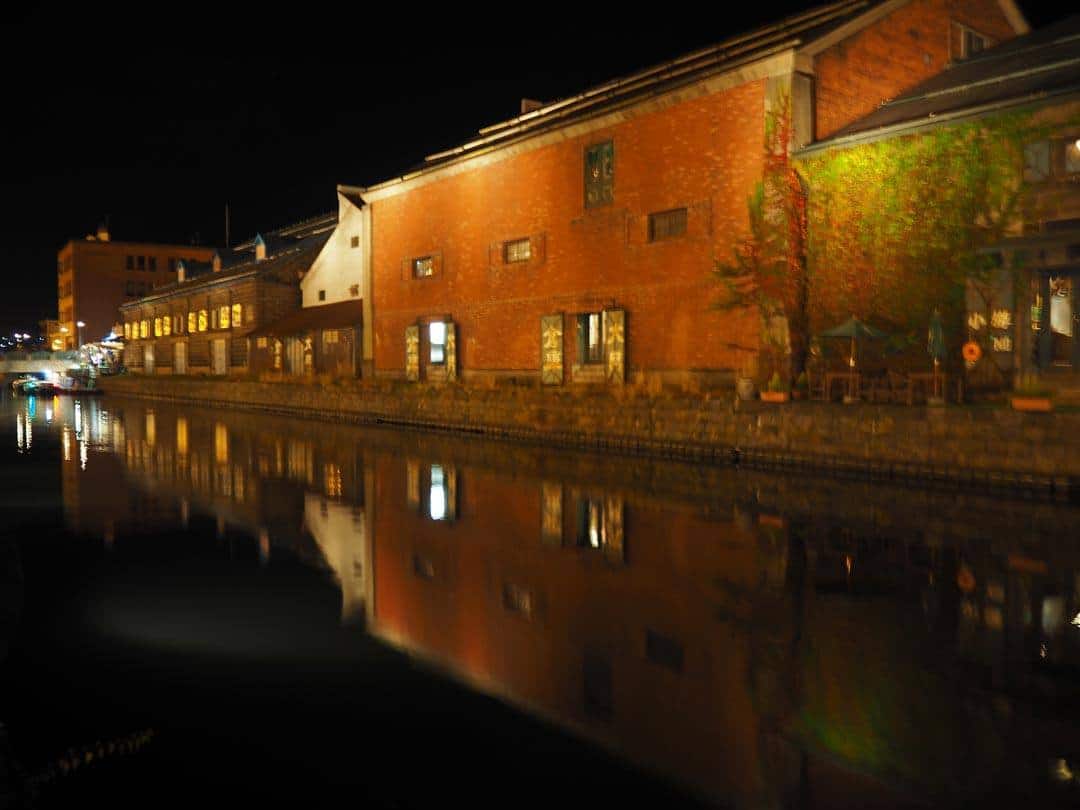
One of Hokkaido’s top hikes. Getting to the top of Mashu-Dake takes around 4-6 hours return. Bring plenty of water and warm clothes as the top of the mountain can be very cold.
A few minutes after getting to the top we were treated to our own private snowstorm ! You will need good shoes as the track can be slippery, and although it’s not a particularly challenging walk the last 400m are very narrow and steep so take care.
Also the car packing ticket you get at Mashu-Ko can also be used at Mt Io the next day or vice versa.
The hotel offers a great breakfast that comes complete with raw egg rice. You crack an egg into a little bowl whisk it and add some soy sauce before pouring it onto the warm rice. Delicious.
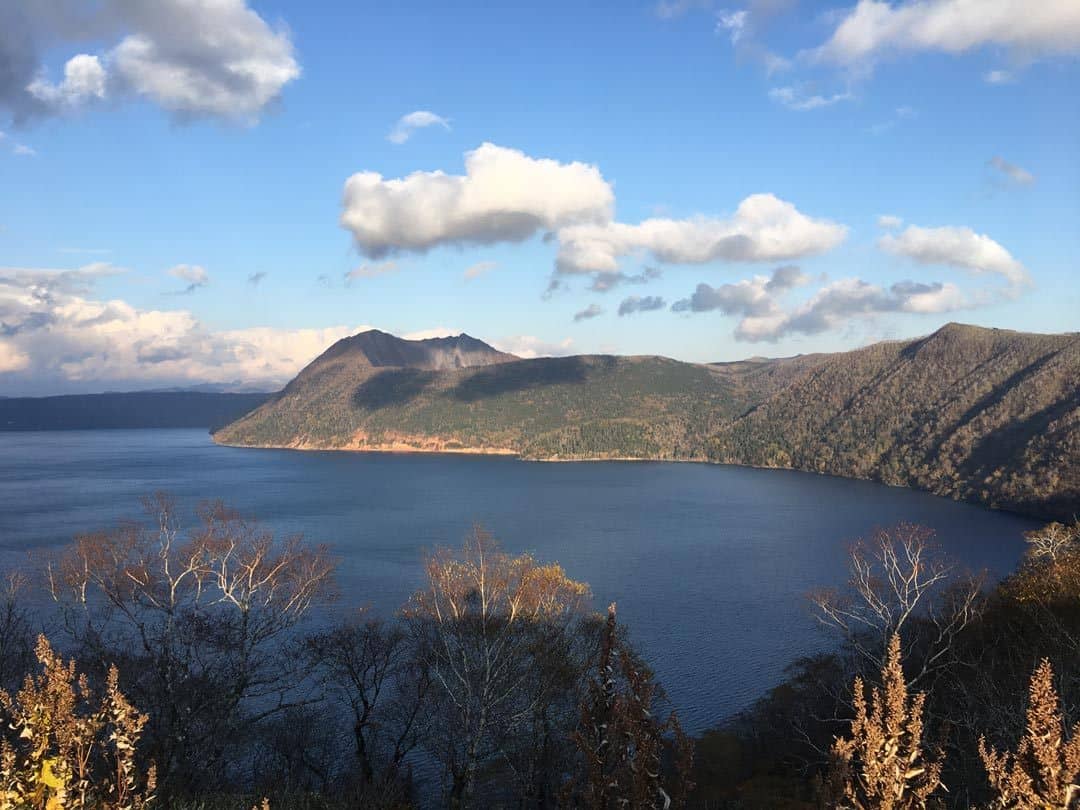
The scenery around Mount Io is to die for, but the smell is not pleasant, think Rotarua in New Zealand – lots of sulphur.
From here its a short drive to Kussharo where there are plenty of hiking options and a few hot water beaches on the shores of the lake. There is a great hike around the peninsula which gives some beautiful views.
Akan-Ko is approx 50km from Kussharo and is a little more developed for tourism than the other two lakes. The drive from Kussharo-Ko to Akan-Ko is particularly good, probably more interesting than Akan-Ko itself in our opinion.
Akan-ko has a rather cool little foot spa cafe. Perfect after a long day of exploring.
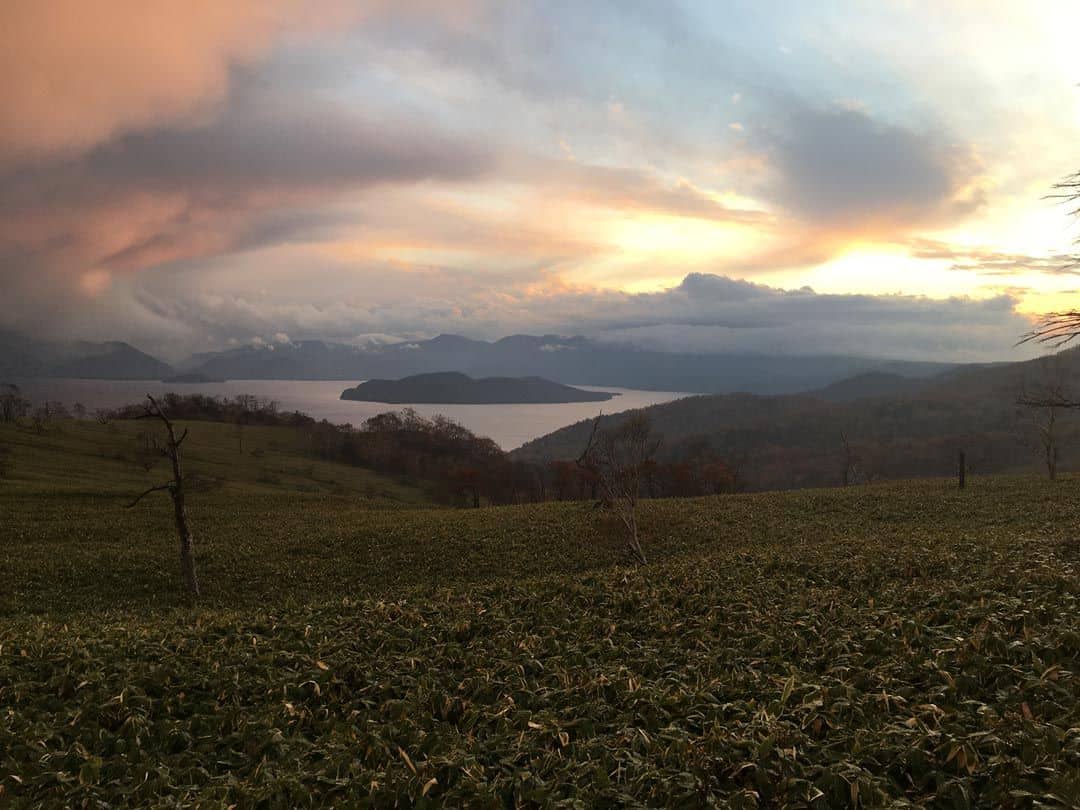
This is a long drive, be under no illusions. We left just before 10 and headed straight for the bihoro pass which is a must. Possibly one of the best views we got in Hokkaido.
From here we drove to the Kushiro wetlands, which is ok but there isn’t a huge amount to do. However it does give you a break from driving and the scenery on the way is excellent.
From here we jumped on the Doto Expressway around 2pm thinking there would be a service station fairly soon after where we could grab some lunch as we were starving. Sadly we were wrong, finally coming across one around 4:30. We ended up staying in New Chitose as there was no affordable accommodation around Shikotsu-Ko.
Where To Eat: The area is dotted with great eats. In particular some amazing izakayas and BBQ (yakinuku) restaurants.
Where We Stayed: Hotel Plus Hostel Sapporo . Has private and shared rooms so you can find something that suits your budget.
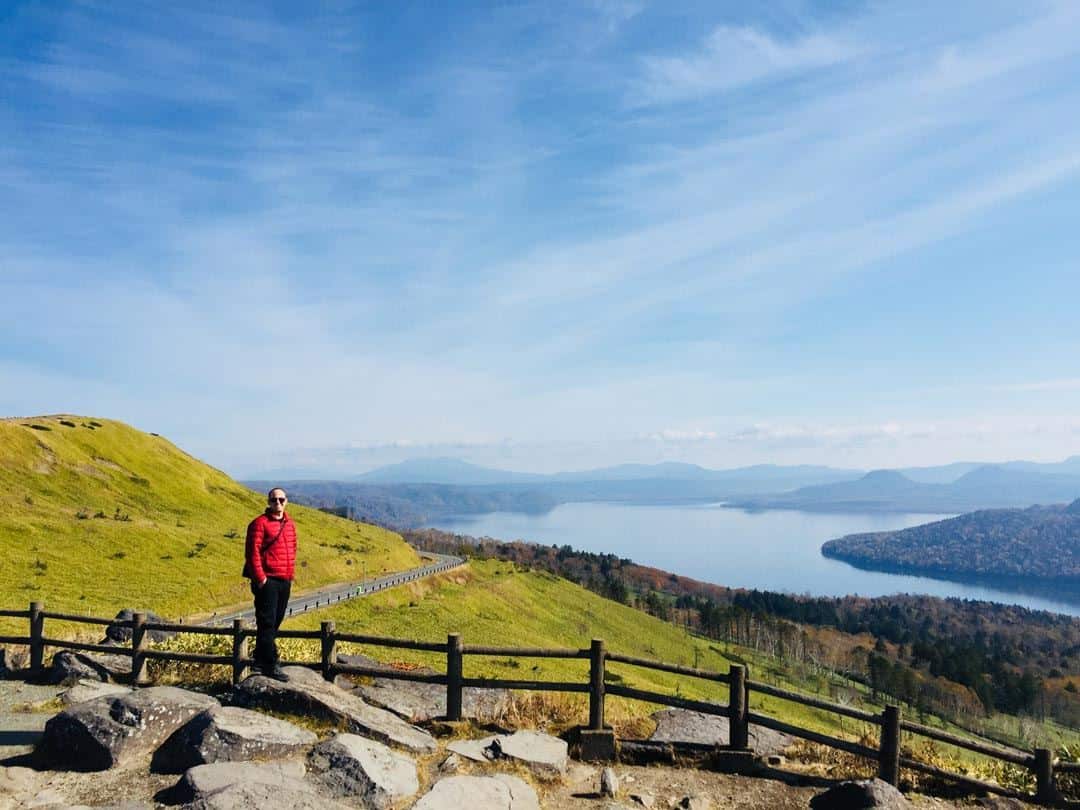
Not listed in guidebooks or J apanGuide.com, this peninsula an hour and a half outside of Sapporo is an undiscovered gem. We only found out about it after doing a google search of “what to do in Otaru” and this came up on a TripAdvisor thread.
Probably the most stunning coastland we drove in Japan, with only a few others on the road. Some lovely short walks around the peninsula are well marked by road signs.
From the Shakotan Peninsula back to Chitose you pass through the lovely little town of Otaru. At night the canal and the surrounding buildings are lit up, so its a great place to go for a wander. Also check out the little alleyways close to the canal that around stuffed full of izakayas.
Where To Eat: The alleyways around the Otaru Canal offer a huge variety of great food.
Where We Stayed : Sho Inn Otaru . A small but cosy and affordable hotel in Otaru.

Noribetsu is probably the most famous onsen town in Japan full of hot spring baths and naturally, it is very popular with tourists. In fact, this was probably the busiest place we visited during our time in Hokkaido, but we’d definitely recommend it.
There are plenty of great walks around Hell Valley and the one down to Ooyunuma and the Ooyunuma Foot Spa. A great place to dip your feet after a few steep hills. Very easy to get to from Sapporo or New Chitose.
Checking out Hell Valley itself is also super cool. This volcanic crater is filled with bubbling sulphur hot spring baths and dramatic natural colors. The name “Hell Valley” is fitting because it really looks other worldly.
Driving back from Noribetsu you can choose to check out Lake Toya or Lake Shikotsu in Shikotsu Toya National Park.
Lake Toya is one of the most famous sights to see when you visit Hokkaido. Surrounded by volcanoes and peaks, the gorgeous Lake Toya offers some of the most stunning views in the country.
If you’re visiting between April and October, you may get to witness the Lake Toya Long Run Fireworks Festival. On clear evenings, a 20 minute fireworks display lights up the skies around Lake Toya, which is a super cool event to witness.
Where To Eat: The dining options in Noribetsu is pretty pricey, but just outside the town there are plenty of cheap restaurants.
Where We Stayed: Dai-ichi Takimotokan . There are lots of accommodation options in the heart of Noribetsu but this one has a hot spring, hot tubs, and swimming pools.
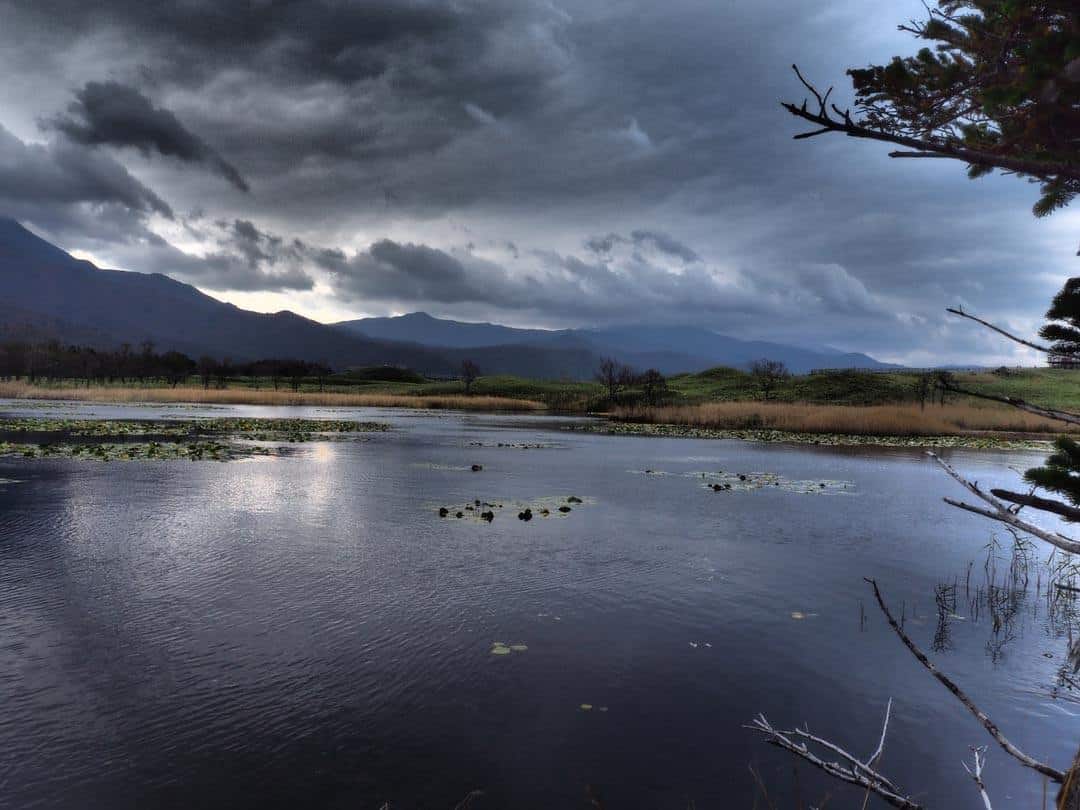
Day 12 – Saying bye to our car and flying on to Hiroshima
We chose a great day to leave as southern Hokkaido was hit by a huge blizzard. We had planned to go and see Lake Shikotsu but the weather was awful. In fact the winds were so strong that trees were blown down blocking parts of the road that were already covered with snow and ice.
Sadly we only saw lake Shikotsu under a fair bit of snow, but it certainly seemed very pretty.
We rented with OTS. The car they gave us was a small modern hybrid which really saved on petrol. The service and packages they offer were comfortably the cheapest and they also have the Hokkaido Expressway Pass set up and installed for you.
Some other companies don’t offer this service and will send it to your hotel, which is pretty inconvenient.
Next stop was to head off and check out the best things to do in Hiroshima .
Renting a car for an epic Hokkaido trip is a once in a lifetime experience. This truly is a place of outstanding natural beauty, culture and hospitality and must for any traveller. Our only regret is that our photos cannot truly convey how beautiful it really is.
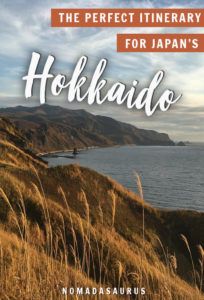
Richard Barnes
Hi, We’re Alesha and Jarryd!

We’ve been traveling the world together since 2008, searching for the planet’s best destinations and adventures.
Love Travel?
Sign up for our free weekly newsletter for the best travel tips, ideas and deals!
We respect your privacy. Unsubscribe at any time.
READ MORE...
19 BEST Things to Do in Osaka, Japan [2024 Edition]
The Perfect 3 Days in Tokyo Itinerary
The Best Day Trips from Every City in Japan [2024]
Related Posts
20 epic things to do in okinawa, japan [2024 guide], 18 awesome things to do in sapporo, japan (2024 guide), visting yamakoshi, nagaoka – japan’s most picturesque village, the ultimate travel guide to oita, japan (2024 edition), 7 thoughts on “how to plan your perfect hokkaido itinerary in 2024”.
Hi, You wrote a great article and it is very informative, thank you very much. May I know when was the above trip: Day 1 ~ Day 12? I will be in Hokkaido from Oct 24 to Nov 3, not sure if it is still worth to travel to Asahikawa?
Hi, do give Richard a message over on his website. He will be able to help you. All the best. https://abearandapig.com/
Hi, I like this report about Hokkaido a lot, am just planing our trip. Been to many other places in Japan before. I only wanted to know, when you have been there, “autumn” is not exact enough to plan 🙂 so can you please be a bit more detailed(like End of Sept. …) ?? Thank you very much!
Hi, I read ur article and need ur advice. Arrive Chitose Airport 27/10/2019, company incentive trip covered Noboribetsu, Jigokudani, Otaru, Sapporo, Mitsui Outlet, Okurayama Ski Jump, Hokkaido Shrine & Tanukikoji St. From 30/10/2019 morning till return flight from Chitose 4/11/2019 09:35 is my free and easy session with another partner Any recommendation program for 30/10 to 3/11?
I will be visiting Hokkaido in November and the group will include elderly and young children. Appreciate if you can recommend itinerary that is suitable
Hope you had a great trip. 🙂
Leave a comment Cancel reply
Save my name, email, and website in this browser for the next time I comment.
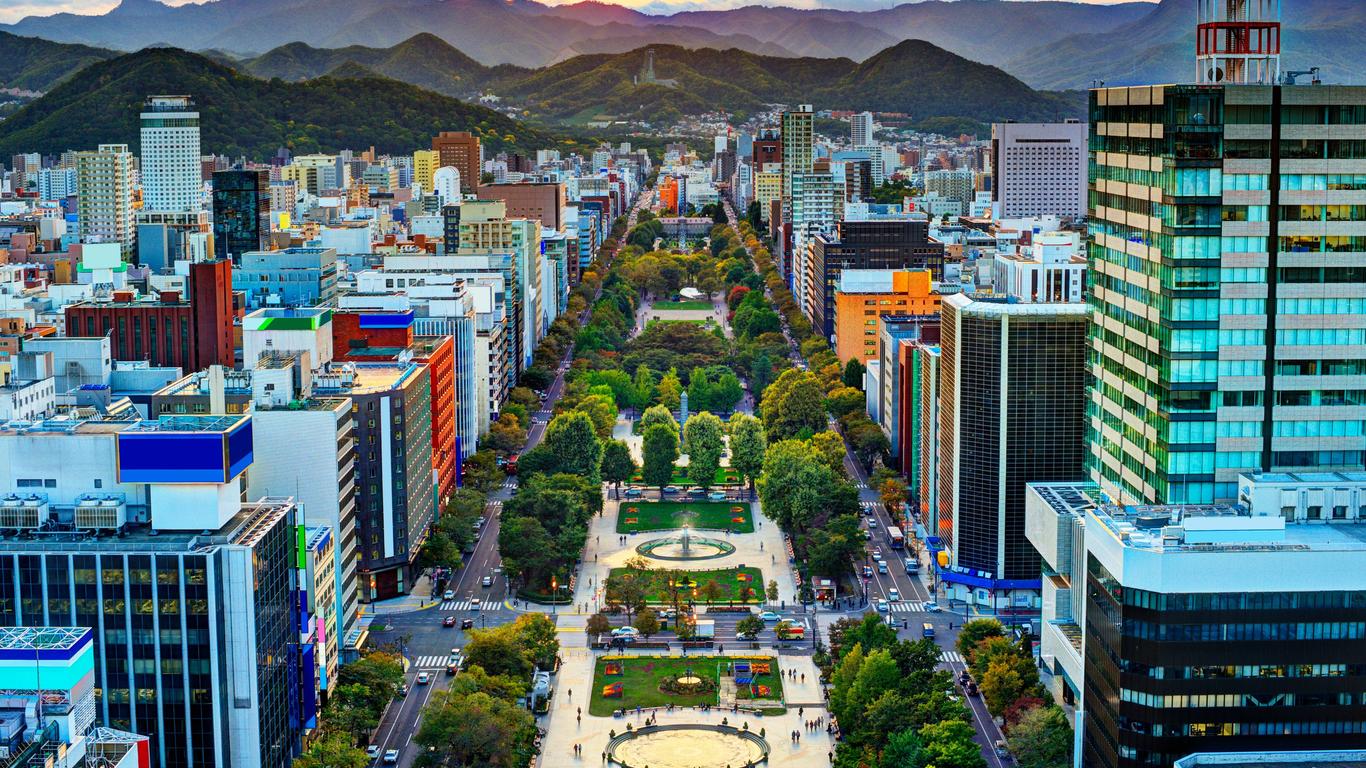
$45 Find Cheap Flights from Tokyo to Sapporo
This is the cheapest one-way flight price found by a kayak user in the last 72 hours by searching for a flight from tokyo to sapporo departing on 10/29. fares are subject to change and may not be available on all flights or dates of travel. click the price to replicate the search for this deal., search hundreds of travel sites at once for deals on flights to sapporo.
Save 22% or more Compare multiple travel sites with one search.
Track prices Not ready to book? Create a price alert for when prices drop.
Filter your deals Choose cabin class, free Wi-Fi and more.
Bundle and save Save money when you bundle your flight + hotel.
Cheap Flight Deals from Tokyo to Sapporo (TYO-CTS)
Flights from tokyo to sapporo - travel insights & trends, get data-powered insights and trends into flights from tokyo to sapporo to help you find the cheapest flights, the best time to fly and much more., what is the cheapest tokyo to sapporo chitose airport flight route, our data shows that the cheapest route for a one-way flight from tokyo to sapporo chitose airport cost $35 and was between tokyo narita airport and sapporo chitose airport. on average, the best prices are found if you fly this route. the average price for a return flight for this route is $72., what’s the cheapest day of the week to fly from tokyo to sapporo, for tokyo to sapporo, monday is the cheapest day to fly on average and saturday is the most expensive. flying from sapporo back to tokyo, the best deals are generally found on tuesday, with sunday being the most expensive., what is the cheapest month to fly from tokyo to sapporo chitose airport, the cheapest month for flights from tokyo to sapporo chitose airport is june, where tickets cost $93 on average. on the other hand, the most expensive months are august and september, where the average cost of tickets is $188 and $128 respectively., how far in advance should i book a flight from tokyo to sapporo chitose airport, to get a below average price on the flight from tokyo to sapporo chitose airport, you should book around 1 week before departure. for the absolute cheapest price, our data suggests you should book 51 days before departure., which airlines provide the cheapest flights from tokyo to sapporo, the best deals for a one-way ticket found by kayak users over the last 3 days were on peach ($45) and spring japan ($51). the cheapest round-trip tickets were found on jetstar japan ($70) and peach ($82)., which airlines fly most frequently between tokyo and sapporo, tokyo and sapporo are connected by different airlines. the airlines that fly that route the most regularly are ana (210 flights per week), japan airlines (119 flights per week), and skymark airlines (63 flights per week)., which airlines fly non-stop between tokyo and sapporo chitose airport, there are 6 airlines that fly nonstop from tokyo to sapporo chitose airport. they are: ana, japan airlines, jetstar japan, peach, spring japan and skymark airlines. the cheapest price of all airlines flying this route was found with jetstar japan at $50 for a one-way flight. on average, the best prices for this route can be found at peach., which cabin class options are there for flights between tokyo and sapporo chitose airport, there are 4 cabin class options for the route. these are first, business, economy and prem economy. perform a search on kayak to find the latest prices and availability for all cabin fares, which differ across airlines., how many flights are there between tokyo and sapporo chitose airport per day, each day, there are between 70 and 72 nonstop flights that take off from tokyo and land in sapporo chitose airport, with an average flight time of 1h 36m. the most common departure time is 8:00 pm and most flights take off in the morning. each week, there are 500 flights. the most frequent day of departure is monday, when 14% of all weekly flights depart. the fewest flights depart on a wednesday., how long does a flight from tokyo to sapporo take, nonstop flights from tokyo generally make it to sapporo in 1h 30m. the flying distance between the two cities is 500 miles., what’s the earliest departure time from tokyo to sapporo, early birds can take the earliest flight from tokyo at 6:30 am and will be landing in sapporo chitose airport at 8:00 am., what’s the latest departure time from tokyo to sapporo, if you prefer to fly at night, the latest flight from tokyo to sapporo chitose airport jets off at 9:30 pm and lands at 11:05 pm., good to know, when to book flights from tokyo to sapporo, faqs for booking tokyo to sapporo flights, how can i get from sapporo airport (cts) to central sapporo.
You can take the JR train to get from the airport to Sapporo centre. It runs every 15min from 08:15 to 23:00 and takes 35-40min to Sapporo Station. From there, you can take the subway to other parts of the city. There are two bus lines connecting Sapporo Airport with the city centre in 70min. The airport limousine buses also go to various downtown locations in Sapporo. Taxis to central Sapporo take about 1h and cost around ¥10,000 (A$ 120).
Are there any on-site hotels at Sapporo Airport?
The Air Terminal Hotel is located inside Sapporo Airport. The hotel offers a Japanese/Western breakfast buffet, free Wi-Fi and air-conditioning. It is conveniently located in the Domestic Terminal with entrances in the Departures lobby and the Arrivals lobby. Hotel guests can also enter the airport Onsen free-of-charge, which includes hot spring baths and relaxation areas.
What facilities are offered at Sapporo Airport (CTS)?
Sapporo Chitose Airport offers free Wi-Fi, business services, a post office, baby care facilities, a children’s play area, food, drink and retail concessions, an Information Desk and ATMs. Domestic lounges include Al Nippon Airways ANA Suite Lounge, Japan Airlines Diamond Premier Lounge, Japan Airlines Sakura Lounge, ANA Lounge and Super Lounge. The airport also has the Chitose Sky Museum and a movie theatre. If you are not eligible for your airline's lounge, there is a Super Lounge on Level 3F that offers comfortable seats and free soft drinks. The cost is around ¥1100 (A$ 13).
What is the cheapest flight from Tokyo to Sapporo Chitose Airport?
In the last 3 days, the lowest price for a flight from Tokyo to Sapporo Chitose Airport was $45 for a one-way ticket and $70 for a round-trip.
Do I need a passport to fly between Tokyo and Sapporo?
Even though you are not required to have a passport, keep in mind that an official ID is needed to board the airplane.
Which airports will I be using when flying from Tokyo to Sapporo?
When flying out of Tokyo you will be using one of these airports: Tokyo Haneda or Tokyo Narita. You will be landing at Sapporo Chitose.
Which aircraft models fly most regularly from Tokyo to Sapporo?
The Airbus A320-100/200 is the aircraft model that flies most regularly on the Tokyo to Sapporo flight route.
Which airline alliances offer flights from Tokyo to Sapporo?
oneworld, Star Alliance, and SkyTeam are the airline alliances operating flights between Tokyo and Sapporo, with Star Alliance being the most commonly used for this route.
On which days can I fly direct from Tokyo to Sapporo?
There are nonstop flights from Tokyo to Sapporo on a daily basis.
Which is the best airline for flights from Tokyo to Sapporo, ANA or Japan Airlines?
The two airlines most popular with KAYAK users for flights from Tokyo to Sapporo are ANA and Japan Airlines. With an average price for the route of $210 and an overall rating of 8.4, ANA is the most popular choice. Japan Airlines is also a great choice for the route, with an average price of $205 and an overall rating of 8.3.
How does KAYAK find such low prices on flights from Tokyo to Sapporo?
KAYAK is a travel search engine. That means we look across the web to find the best prices we can find for our users. With over 2 billion flight queries processed yearly, we are able to display a variety of prices and options on flights from Tokyo to Sapporo.
How does KAYAK's flight Price Forecast tool help me choose the right time to buy my flight ticket from Tokyo to Sapporo?
KAYAK’s flight Price Forecast tool uses historical data to determine whether the price for a flight to Sapporo from Tokyo is likely to change within 7 days, so travelers know whether to wait or book now.
What is the Hacker Fare option on flights from Tokyo to Sapporo?
Hacker Fares allow you to combine one-way tickets in order to save you money over a traditional round-trip ticket. You could then fly to Sapporo with an airline and back to Tokyo with another airline.
What is KAYAK's "flexible dates" feature and why should I care when looking for a flight from Tokyo to Sapporo?
Sometimes travel dates aren't set in stone. If your preferred travel dates have some wiggle room, flexible dates will show you all the options when flying to Sapporo from Tokyo up to 3 days before/after your preferred dates. You can then pick the flights that suit you best.
Top tips for finding a cheap flight from Tokyo to Sapporo
- Looking for a cheap flight? 25% of our users found flights on this route for $83 or less one-way and $171 or less round-trip.
- The Japanese tradition of buying presents (omiyage) for loved ones if you go on a trip means Sapporo Airport (CTS) is well-equipped with lightweight pre-wrapped gifts you can buy for about ¥1000 (A$ 12), in case you forgot to get anyone a souvenir.
- Sapporo Airport (CTS) has a 377-seat movie theatre in the Domestic Terminal. You can see a movie for ¥1800 or around A$ 22 on level 4F in Oasis Park, which also houses the on-site Onsen (spa).
- Also on the 4th floor of Sapporo Airport, you’ll find Snow Miku Sky Town, where you can meet the life-size character, visit the Hokkaido Panorama Theatre and buy limited edition Snow Miku items.
Prefer to fly non-stop from Tokyo to Sapporo?
Find which airlines fly direct from Tokyo to Sapporo Chitose Airport, which days they fly and book direct flights.
Nonstop departures
Tokyo to Sapporo Chitose
ANA, Aeromexico, Air Canada, +32 more
ANA, Aeromexico, +33 more
ANA, Aeromexico, Air Canada, +33 more
ANA, Aeromexico, +34 more
ANA, Aeromexico, Air Canada, +34 more
ANA, Aeromexico, +35 more
Nonstop returns
Sapporo Chitose to Tokyo
ANA, Aeromexico, Air Canada, +31 more
ANA, Aeromexico, +32 more
ANA, Aeromexico, Air Canada, +30 more
ANA, Aeromexico, +31 more
Top 5 airlines serving from Tokyo to Sapporo
Crew went out of their way for me, not often
Lots of legroom for a small flight. There was in flight entertainment even though it is a short duration. We waited on one passenger to board for a long time after everyone else was on.
The seats are too small for international flights. I felt like cattle.
At Fukuoka, check in counter stuff was no experience , took long time and took out our preserved sheets to change to emergency exit seats without asking. The flight was late and we missed the flight to go back to SF. My luggage was broken. I had a terrible experience.
Boarding was quick and efficient. The food was very good and they had pictures showing you what options there were to avoid misunderstandings.
Boarding was fast and efficient. Not a cramped plane and good comfort. Food was great and attendants were very nice.
Chair was broken. Crew was awesome. Food was eh. Dinner food not so good the sandwich was good ( for airplane food) headphones hurt my ears. It’s hard because no one has plug in earphones
Crew was professional. Never enough leg room for 12 hour overnight flight.
Fast boarding. Cabin temperature was a bit warm, but I guess this is the standard in ANA. The Room seats are spacious, but not long enough for me.
ANA crews are superb, very responsive and caring. Boarding was smooth and so as the landing. Great flights we had with ANA.
The self-baggage at Narita provided by JAL only worked for half my baggage, but the staff present at the counter were very quick to provide assistance. When I arrived in Vancouver, after waiting for ~25 minutes at the baggage carousel, a staff member with a JAL badge quite rudely came up and told me that there was no more baggage coming to the carousel, and I should double check that the baggage that wasn't mine, just in-case my baggage had somehow changed into a different one. After ~3-5 minutes more baggage came out onto the carousel, which included mine.
everything was great except for the plane itself looking worn out.
It was great, but the wifi service was very hard to pay and I barely could use it during my trip. The seats are also a bit tough for tall people (economy area). Other than that, it was a pleasant experience.
The airline was very clean, and the crew very kind and thoughtful.
It was a quick and comfortable flight. There was no entertainment or food so I gave them poor marks. I wasn’t really expecting either so wish there was a NA option. Great flight with more leg room than my longer, overseas seating!
WiFi inflight was not working. Then they told everyone they had no beef for the steak option. So that left just sea food and snacks. So all I ate for the 11 hour flight, was an ice cream sundae. Gave out Casper mattress pads, which are always so nice.
Wow they board very fast and very organized. We left late to to inbound flight but arrived early due to crew organized.
Management of serious allergens despite advance notice. Did not know ingredients contained in their own food. Went as far as to have parents try to ‘take a look at the food’ to ‘see if it was Ok’ since they did not know ingredients. Will inevitably have a passenger with a severe incident if they do not train better.
Great service. Premium coach seat was uncomfortable. Food was non-descript.
Will definitely try to book with them again next time. FAs are very helpful and nice, bathroom always clean & flight was comfortable.
The seats are very uncomfortable just was not a pleasant experience
my flight was cancelled an hour before departure and i have not received a refund yet.
A child behind me was kicking my seat and the cabin attendant noticed and kindly asked me if I’d like to switch to a different available seat. Really nice.
The flight crew was very nice. Had a bit of a hiccup on my end when I checked in flying from Tokyo to Sapporo but the staff was very helpful. Definitely enjoyed both flights.
There was no social distancing on the plane. Lots of people sneezing, etc so the coronavirus measures they are taking are not adequate. Very uncomfortable flight. Also hard to get customer service support by phone in English.
The seat is so bad Can’t recline the chair
For Travelers with babies, if they can be supported by allowing to carry the Baby stroller upto the Airplane gate, and not submit at the Check-In counter. it will be very convenient. Thankyou.
I didn’t even fly on it can I get my refund
The only two things to like were the price and the actual flight crew. Other than that, there is nothing positive to report above making it to my destination safely, yet later than scheduled or reported by the system. The Spring website doesn't work. I was repeatedly advised to check in online. That's impossible. None of the web functions work. I couldn't check in, pick a seat, purchase checked baggage. The phone numbers don't work. I tried every number I could find and was never able to even connect. I tried calling from my US phone and from my wife's Chinese phone. So I knew I would have to pay whatever they said for my baggage. On arrival to the airport, (HRB international terminal is a mess and also poorly run), the staff charged over $150 usd for my luggage. The luggage requirements on the web site are confusing and not close at all to industry standards. They blur the line between "Spring Air" and "Spring Japan". Kayak lists it as Spring Japan, the web site only delineates between Spring Air Domestic, Spring Air International, and Spring Japan, but doesn't make clear whether an international flight to Japan would be on Spring Japan. After checking the 1 suitcase, which took a long time for the attendant to even figure out how to do, I was told later that my carry on was too much and then there was a communication problem and I finally told them (interpreted through my Chinese wife) that I didn't mind paying for 2 bags, but I had to rearrange because I had batteries in the carry on which arent allowed to be checked. That requires the attendant to refund my first payment and te-cjexk both suitcases. She so forgot to give me the bag ticket and came to find me later. I was then motioned to go upstairs to the security screening without my wife accompanying to help translate. Then while about to be frisked, the attendant came to ask me to look inside one of the suitcases. So I went back to the check in a 3rd time to literally show them a flashlight in my suitcase. After all that, I made the tedious path through screening, & immigration. The gate wasarked for my flight. But when boarding time passes, nothing happened. None of the announcements were in English. At some point, they announced something and half the people near that gate got in line, but it wasn't moving. Some people were eventually going up and asking. I did and it turns out there was another flight to Korea link g up at the same gate, unmarked by the board. So I had to guess when that line was finished and my tokyo ight boarding finally started. My flight was scheduled to depart at 10:35am. The line for the boarding didnt even occur until 10:49am. But the Kayak app was reporting the flight as only 10 minutes late. We probably took off at 11:30am or so. I don't believe the plane wasn't ready. They were just having difficulty organizing the crowds into the trams that transport the passengers to the tarmac. The flight was mainly done because it seemed to only be about half booked. So there were many empty seats which helped. But then I find out that the flight crew will only accept Chinese or Japanese CASH for food, beverages, and snacks...even WATER. If I had known prior, my wife had Yuan cash but it is never used in China so I didn't have any. This airline is horrible and I should have paid for a better flight but it was the only one that got my plans very well. My wife later told me that it was well known to be a poorly run airline, but she didn't realize that's who I booked. I didn't interact with the crew much, so nothing to complain about there. The check in staff were nice, but somewhat incompetent. Never again.
Book cheap flights from Tokyo to Sapporo
Recent one-way flight deals, search by stops, search by airline, search by price, last minute flights from tokyo to sapporo, last minute flight, train and bus deals, flights to sapporo, destination:.
Chitose (CTS) Japan
Return flight deals:
Chitose - Tokyo
Cabin classes:
Browse origins:.
- Flights »
Browse destinations:
- Worldwide »
- Sapporo Chitose

Tokyo to Hokkaido Train: A Journey through Japan’s Scenic Landscapes
Are you planning a trip to Japan and looking for an unforgettable experience? Look no further than the Tokyo to Hokkaido train journey. This scenic route takes you through some of Japan’s most breathtaking landscapes, allowing you to immerse yourself in the beauty of the countryside. From picturesque mountains to charming small towns, this train journey offers a unique way to explore Japan’s hidden gems.
Explore the beauty of Japan’s countryside on a train from Tokyo to Hokkaido
The train ride from Tokyo to Hokkaido is a visual treat for nature lovers. As you leave behind the bustling city, you’ll be greeted by stunning vistas of lush greenery, snow-capped peaks, and crystal-clear lakes. The train tracks wind through tunnels and bridges, offering panoramic views of the surrounding landscapes.
One highlight of this journey is the scenic Shinkansen bullet train ride from Tokyo to Shin-Hakodate-Hokuto Station. The train glides through the picturesque Tohoku region, known for its charming countryside and picturesque villages. As you travel further north, you’ll pass by the iconic Mount Fuji, Japan’s highest peak, creating a truly memorable experience.
Once you reach Shin-Hakodate-Hokuto Station, you’ll board the Hokkaido Shinkansen, which takes you to various destinations in Hokkaido. This leg of the journey offers breathtaking views of the Sea of Japan and the Hokkaido countryside. From rolling hills to coastal cliffs, the landscapes will leave you in awe.
Discover the cultural treasures along the Tokyo to Hokkaido train route
Japan is renowned for its rich cultural heritage, and the Tokyo to Hokkaido train route is no exception. Along the way, you’ll have the opportunity to visit historic towns, temples, and shrines that showcase Japan’s traditional architecture and customs.
One notable stop on this journey is the city of Aomori, located in the northernmost part of Honshu Island. Here, you can explore the ancient Hirosaki Castle, surrounded by vibrant cherry blossoms in spring. The Nebuta Museum showcases the region’s famous Nebuta Festival, where giant illuminated floats parade through the streets.
In Hokkaido, make sure to visit the city of Sapporo, known for its lively atmosphere and delicious food. The Sapporo Clock Tower and Odori Park are must-visit attractions, offering a glimpse into the city’s history and culture. Don’t forget to try Hokkaido’s famous seafood and dairy products during your visit.
Experience the convenience and comfort of traveling by train in Japan
Traveling by train in Japan is a seamless and efficient experience. The country’s extensive rail network connects major cities and rural areas, making it easy to explore different regions. The Tokyo to Hokkaido train route is well-served by the Shinkansen and local train lines, ensuring a comfortable journey.
The Shinkansen trains are known for their punctuality and speed, allowing you to reach your destination in no time. The comfortable seating and spacious interiors ensure a relaxing journey, with ample legroom and storage space for your luggage. The trains are also equipped with modern amenities, including Wi-Fi and power outlets.
Local trains in Hokkaido offer a slower pace, allowing you to soak in the scenic beauty of the region. These trains often feature large windows, providing unobstructed views of the countryside. The friendly and helpful staff ensure that your journey is pleasant and hassle-free.
Indulge in delicious local cuisine during your train journey from Tokyo to Hokkaido
One of the highlights of traveling in Japan is the opportunity to savor its diverse culinary offerings. The Tokyo to Hokkaido train journey is no exception, with a wide range of local delicacies to tantalize your taste buds.
As you travel through the Tohoku region, make sure to try the mouthwatering regional specialties. From delicious seafood in Sendai to the famous Wanko Soba in Morioka, each stop along the way offers a unique culinary experience. Don’t forget to try the delectable Tsugaru apples, known for their crisp texture and sweet flavor.
In Hokkaido, indulge in the island’s famous seafood, including fresh sushi and succulent crab. The region is also known for its dairy products, such as rich butter and creamy ice cream. A visit to the Otaru Canal area is a must, where you can sample the city’s renowned sushi and explore the charming streets lined with local food stalls.
Learn about the history and significance of the Tokyo to Hokkaido train route
The Tokyo to Hokkaido train route has a rich history and holds great significance in Japan’s transportation network. The construction of the Shinkansen line revolutionized travel in Japan, providing a faster and more efficient mode of transportation between Tokyo and Hokkaido.
Before the Shinkansen, the journey from Tokyo to Hokkaido involved multiple transfers and long travel times. The introduction of the Shinkansen reduced the travel time significantly, making it easier for locals and tourists alike to explore the northern part of Japan.
The Tokyo to Hokkaido train route also played a crucial role in promoting tourism and economic development in the region. It opened up new opportunities for businesses and brought people closer, fostering cultural exchange and regional cooperation.
Tips and recommendations for planning your Tokyo to Hokkaido train trip
Planning your Tokyo to Hokkaido train trip requires careful consideration to make the most of your journey. Here are some tips and recommendations to ensure a smooth and enjoyable experience:
- Book your train tickets in advance, especially during peak travel seasons, to secure your preferred seats.
- Consider purchasing a Japan Rail Pass, which offers unlimited travel on JR trains, including the Shinkansen and local lines.
- Research the attractions and activities available at each stop along the Tokyo to Hokkaido train route to plan your itinerary.
- Pack comfortable clothing and footwear, as you may need to walk or explore the towns and cities during your stops.
- Check the weather forecast for the duration of your trip and pack accordingly, especially if you plan to visit during the winter months.
- Learn a few basic Japanese phrases to enhance your interaction with locals and make your journey more enjoyable.
Frequently Asked Questions about Tokyo to Hokkaido Train
Q: how long does it take to travel from tokyo to hokkaido by train.
A: The journey from Tokyo to Hokkaido by train takes approximately 4 to 5 hours, depending on the specific route and train type.
Q: Are there overnight trains from Tokyo to Hokkaido?
A: Yes, there are overnight trains available from Tokyo to Hokkaido. These sleeper trains offer a unique experience, allowing you to rest and wake up at your destination.
Q: Can I use my Japan Rail Pass for the Tokyo to Hokkaido train journey?
A: Yes, the Japan Rail Pass can be used for the Tokyo to Hokkaido train journey. However, please note that seat reservations may be required for certain Shinkansen trains.
Q: Are there vegetarian options available on the train?
A: While vegetarian options may be limited on the train, you can find vegetarian-friendly restaurants and cafes at various stops along the Tokyo to Hokkaido train route.
Q: Can I bring luggage on the train?
A: Yes, you can bring luggage on the train. Most trains have designated storage areas for larger suitcases, and smaller bags can be stored in the overhead compartments.
Expert Advice
If you’re planning a trip from Tokyo to Hokkaido by train, here’s some expert advice to enhance your experience:
- Take advantage of the stunning views from the train windows by choosing a seat on the right side when traveling from Tokyo to Hokkaido, and on the left side for the return journey.
- Consider adding stops along the way to explore more of Japan’s hidden gems. The flexibility of the train journey allows you to customize your itinerary.
- Engage with locals and fellow travelers to learn more about the culture and traditions of the regions you visit. Don’t hesitate to strike up a conversation and ask for recommendations.
- Make sure to try regional specialties and local dishes at each stop. Japan’s cuisine is diverse and flavorful, offering a culinary adventure at every destination.
- Take advantage of the convenient luggage forwarding services available at train stations. This allows you to travel light and have your luggage delivered directly to your next destination.
Izumi Kenta
Hi, I’m Izumi Kenta from Japan. By profession, I worked as a tourist guide and interpreter in Japan. Besides this profession, I’m a hobbyist blogger. I love to talk about different things about Japan and share them with a wider audience who wants to know about my country. To share my thoughts, I’ve created this site Visitjapan and brought some Japanese travel enthusiasts and tourists worldwide to share their experiences.
Leave a Reply Cancel reply
Your email address will not be published. Required fields are marked *
Save my name and email in this browser for the next time I comment.
Recent Posts
Why Does Japan Have So Many Earthquakes? Discovering the Secrets Behind Japan's Seismic Activity
Japan is a country that is known for its frequent earthquakes. The question of why Japan experiences so many earthquakes has intrigued scientists and researchers for years. In this article, we will...
Unlocking the Secrets: Kobe Beef Price per kg Revealed!
Unlocking the Secrets: Kobe Beef Price per kg Revealed! Understanding the Factors Affecting Kobe Beef Price per kg Kobe beef, renowned for its exceptional quality and flavor, is a delicacy that...

A first-time guide to Hokkaidō, Japan

Oct 3, 2023 • 8 min read

Plan your perfect trip to Hokkaidō with this guide for first-time visitors © Jeremy Woodhouse / Getty Images
Japan’s northernmost island, Hokkaidō , is best known globally as a ski and snowboard destination – thanks to its legendary powder snow.
Outdoor adventure is the main reason to visit this naturally stunning region; beyond winter sports, the green season brings opportunities for epic hikes, cycling and camping trips, or simply slowing down and appreciating the photogenic landscapes.
Travel in Hokkaidō is different than elsewhere in Japan : it’s more nature than people, and points of interest can be far apart. This makes it the best place in Japan for a road trip ; otherwise, you’ll probably want to stick to one area – so as to not spend most of the trip in transit. Plan the perfect trip to Hokkaidō with this guide to things that all first-time visitors need to know.

When should I go to Hokkaidō?
The best time to visit depends on what you plan to do and where you plan to go. For skiing and snowboarding, January and February are considered peak season (though most resorts stay open well into spring). Sapporo Snow Festival – Hokkaidō’s most famous festival – is also held in February, and during these months you’ll need to plan ahead, booking accommodations as early as possible.
While winter is the most popular time of year for international travelers, summer is peak season for Japanese visitors. July, August and September are the months for hiking, camping and cycling in and around the island’s spectacular national parks. Hokkaidō summers are mild compared to the rest of the hot and humid country, and typhoons don’t usually reach this far north (though they can mess up your flights from elsewhere in Japan).
Note that autumn, and then winter, comes early to Hokkaido. Snow can fall as early as September in the mountains, signaling the end of green season: trails and seasonal lodgings close, as do many roads. By November, snow could be falling in Sapporo , which means it is also getting cold, and will stay cold until sometime in April. Higher elevations start to thaw around May, though mountain peaks may retain snow into early summer.

How long do you need in Hokkaidō?
Hokkaidō, being vast, rewards long stays. If you’re coming to ski or snowboard, the answer is probably as long as you can afford. With only a few days, you’ll want to stick to one resort; with a week, however, you could visit two resorts, for different experiences, or spend a couple of days exploring Hokkaidō’s capital city, Sapporo .
It’s hard to imagine coming to Hokkaidō for less than three days, unless you stick to Sapporo or Hakodate, at the southern reach of the island. With three or four days, you could visit some combination of Hakodate, Sapporo and Shikotsu-Tōya National Park, the easiest of Hokkaidō’s six national parks to reach. Alternatively, you could use one of the island’s regional airports to get out to one of the more remote parks, like rugged and wild Shiretoko National Park , and go off-grid for a few days.
With more like seven or eight days to work with, your itinerary could include several highlights; you could cover some distance, or explore one region in depth. With two weeks, you can really get to know the island, its fascinating topography and complicated history, and visit some truly off-the-beaten-track spots – like the islands that make up Rishiri-Rebun-Sarobetsu National Park in Hokkaidō’s far north.
Is it easy to get to and around Hokkaidō?
Hokkaidō is easy to reach thanks to New Chitose Airport, which has international connections to cities across Asia; frequent daily flights to Narita and Haneda airports in Tokyo and Kansai International Airport (for Osaka and Kyoto ); and other connections to regional airports around Japan. Direct trains connect the airport to Sapporo, the main transport hub for the island, in under 45 minutes.
It’s also possible to take the shinkansen – Japan’s iconic bullet train – from Tokyo to Hakodate; the journey, which travels through the oft-overlooked Tōhoku region, takes four hours. The shinkansen doesn’t go any further north than Hakodate (yet), but you can continue to Sapporo via limited express train, the next fastest train class. Sapporo itself is easy to get around; it’s compact and has subway and bus networks.
Limited express trains connect most of Hokkaidō’s major cities, and with a combination of these and local trains or buses it is possible to get to most places you’d want to go – including campgrounds, trailheads and snow resorts – entirely by public transportation. Rail passes, like the Japan Rail Pass and the Hokkaido Rail Pass, can make travel around the island more economical.
A car, of course, gives you more flexibility; rentals can be booked online to pick up at New Chitose Airport (with the right paperwork).

Top things to do in Hokkaidō
Niseko United is the resort that put Hokkaidō on the map as a ski and snowboard destination. It’s the biggest (actually four resorts in one); has the most amenities, including a cosmopolitan après scene; and consistently superlative powder. More recently, travelers have begun seeking out less well-known resorts, like Rurutsu and Furano, or back-country tours up peaks inside Daisetsuzan National Park. For the shortest of trips, you can’t beat Sapporo Teine, a popular local resort within 30 minutes of the city.
The peaks of Daisetsuzan, which means "playground of the gods" in the language of the Ainu, the Indigenous peoples of Hokkaidō, can also be explored on foot in summer. Along with Shiretoko, it’s among the best national parks for multi-day treks. Aforementioned Shikotsu-Tōya National Park is home to caldera lakes and hot spring resorts; the new National Ainu Museum is in nearby Shiraoi.
While for many the whole point of Hokkaidō is to get away from city life, it should be noted that Sapporo – Japan’s fifth largest city – is an excellent place to spend some time, with dining and shopping opportunities, as well as some interesting sights, like a park designed by sculptor Isamu Noguchi. Historic port city Hakodate has some unique charms, including a morning market to rival Tsukiji in Tokyo.
My favorite thing to do in Hokkaidō
This is going to sound extremely American of me, but my favorite thing to do in Hokkaidō is drive. Driving in Tokyo, and really almost anywhere else in Japan, stresses me out; Hokkaidō, with its wide roads through vast country landscapes, feels just about the only place in the country where I can attempt an American-style road trip – windows down, stereo up and all that. Many motorcyclists from around Japan come to Hokkaidō for this reason, too.
I’ve also been fortunate to eat really, really well in Hokkaidō – mostly thanks to my work on Lonely Planet’s From the Source , and the team that helped put that together. I still think about the meals (and the people!) from that research trip; I don’t want to single any place out, but Menya Saimi and Daruma Honten in Sapporo and Kikuya Shokudō in Hakodate – in the morning market, actually – are probably the easiest to seek out.

How much money do I need for Hokkaidō?
On one hand, Hokkaidō can be the ultimate Japan budget destination : in summer, there are campgrounds, including free ones. Some people really do cycle around parts of Hokkaidō, and travelers on two wheels (cyclists and motorcyclists) can stay in bargain crash pads called "rider houses," where a futon in a shared room usually costs no more than ¥1000. Washing, meanwhile, can be done in one of the island’s many public hot springs.
Peak snow season is another story: resort areas like Niseko have mostly upmarket lodgings, where rooms cost what they would at any other international resort. Cheaper options exist, but you have to look for them, and book months in advance. Lift tickets, however, are generally considered a good deal; a one-day all-mountain pass for Niseko United for the upcoming season costs ¥9500 – much cheaper than passes at resorts in North America, for example.
Otherwise, prices are fairly similar to elsewhere in the country.
- Capsule hotel: ¥8000
- Basic room for two: ¥25,000
- Self-catering chalet: ¥40,000
- Train fare to Sapporo from the airport: ¥1150
- Bus fare to Niseko from the airport: ¥3000
- Coffee: ¥500
- Ramen in town: ¥1000
- Ramen on the slopes: ¥1600
How do I stay safe while traveling in Hokkaidō?
Winters in Hokkaidō are no joke. In January and February, temperatures rarely reach above freezing, while cold winds from Siberia bring dumps of pillowy snow. This makes for excellent skiing and snowboarding but also treacherous roads and off-piste conditions; take caution and consider joining a tour or using a guide if you have ambitious plans. Even in peak summer, temperatures can drop in the mountains, so take care to pack appropriately.
You’ll also want to read up on bears. Though not frequent, higuma (brown bear) attacks do occur in Hokkaidō and hikers typically attach bells to their packs to ward them off. Information centers at the national parks are a good resource — be sure to stop in before setting out on a hike.
What shall I pack for Hokkaidō?
Major snow resorts all offer competitively priced gear rental packages, so you don’t have to have your own equipment to ski or snowboard in Hokkaidō. You can even rent a whole snow outfit, though there will be size restrictions. Some campgrounds offer gear rental, including tents, sleeping bags and camp stoves or grill sets, but this is more likely to require Japanese language skills to sort out. You can find shops selling outdoor equipment and clothing in Sapporo and Niseko. Montbell is a popular Japanese outdoor brand.
Explore related stories

Art and Culture
Jul 12, 2024 • 6 min read
The secret spots beloved by those who know Japan best.

Jun 12, 2024 • 8 min read

May 1, 2024 • 9 min read

Apr 3, 2024 • 17 min read

Mar 31, 2024 • 7 min read

Mar 28, 2024 • 6 min read
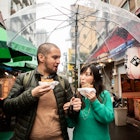
Mar 28, 2024 • 7 min read

Mar 26, 2024 • 8 min read

Mar 25, 2024 • 6 min read

IMAGES
VIDEO
COMMENTS
My Tentative Itinerary for Hokkaido and Tokyo (14D 13N) Aug 21, 2024; Otaru_OK to spend a night? Or just day trip Aug 21, 2024; See All Hokkaido Conversations. ... Barrier Free travel to Sapporo? JR East and South Hokkaido JR Pass? Hokkaido Destination Experts. DLi_hk. 16,709 forum posts. William512.
Just a short train ride from Tokyo, Kamakura's beaches, such as Yuigahama and Zaimokuza, offer a mix of natural beauty and cultural experiences. The historic town of Kamakura, with its ancient temples and the iconic Great Buddha, provides a perfect backdrop to a day spent by the sea. ... Hokkaido Travel Guide: 4 Places to See Fall Foliage ...
The thrill of travelling from Tokyo to Osaka offers flexibility and breathtaking scenery. For a quick and comfortable ride, you can take the Shinkansen; alternatively, think about taking an inexpensive overnight bus. Having a car rental might gives you the flexibility to visit undiscovered locations like Mount Fuji and Nagoya.
Michelin-starred restaurant Est, located in Four Seasons Otemachi, was an absolute standout though - with wagyu, Hokkaido scallops and miso monkfish on the menu. This was my first time trying ...
Tropical Storm Shanshan brought torrential rain Sunday to Japan 's Shizuoka area, 180 kilometers (110 miles) southwest of Tokyo, as weather officials warned the storm would linger for several ...
TOKYO -- Tropical Storm Shanshan brought torrential rain Sunday to Japan 's Shizuoka area, 180 kilometers (110 miles) southwest of Tokyo, as weather officials warned the storm would linger for ...
TOKYO (AP) — Tropical Storm Shanshan brought torrential rain Sunday to Japan 's Shizuoka area, 180 kilometers (110 miles) southwest of Tokyo, as weather officials warned the storm would linger for several more days.. Shanshan, packing winds of 65 kph (40 mph), made landfall Thursday, leaving landslides, flooded rivers, torn branches and scattered debris in its path.
Please enjoy the Utsunomiya Line DLC as you travel through the Kanto Plain, experiencing the changing landscape from Tochigi Prefecture to Tokyo, with its sprawling countryside, suburban residential areas, and buildings in the heart of the city. Highlights. The Shinkansen detainment line /Kuroiso〜Nasushiobara
Senso-ji Temple, Asakua, Japan. getty. Just a short train ride away is the historic district of Asakusa, where travelers can step back in time and explore the city's more traditional side.
A Rapidus factory construction site in Chitose, Hokkaido, on July 24. The plan to ramp up renewable energy usage in the region to 60% by 2030 is part of a larger concept known as "Hokkaido ...
Embark on a remarkable journey from Tokyo to Hakodate via the renowned Hokkaido Shinkansen. This high-speed bullet train offers a comfortable ride through Japan's scenic countryside. If you use the Hokkaido Shinkansen, which opened in 2016, you will arrive at Sapporo Station in about four and a half hours, when traveling from Tokyo Station to Shin-Hakodate Hokuto Station.
Rome2Rio makes travelling from Tokyo to Hokkaido easy. Rome2Rio is a door-to-door travel information and booking engine, helping you get to and from any location in the world. Find all the transport options for your trip from Tokyo to Hokkaido right here. Rome2Rio displays up to date schedules, route maps, journey times and estimated fares from ...
Before, it took 5hrs and 30mins from Tokyo to Hakodate, but on the Hokkaido Shinkansen it takes 4 hours and 2 minutes to reach Shin-Hakodate - Hokuto Station. The goal for the Hokkaido Shinkansen is for it to reach Sapporo. The extension from Shin-Hakodate-Hokuto to Sapporo is planned to open by March 2030. Tunneling work on the Murayama ...
Take the JR Tohoku/Hokkaido Shinkansen from Tokyo to Shin-Hakodate-Hokuto (4 hours) and transfer to the Hokuto limited express to Sapporo (3.5 hours). The entire one way trip costs around 30,000 yen and takes around eight hours. It is fully covered by the Japan Rail Pass and JR East South Hokkaido Rail Pass.Note that seat reservations are mandatory on Hayabusa trains between Tokyo and Shin ...
Sapporo is approximately 500 miles (or about 800 km) from Tokyo as the crow flies. Options for making the trip from Tokyo to Sapporo include trains and planes but also roadtrips and ferries. If you have a JR Pass or a JR East-South Hokkaidō Pass we recommend taking the Shinkansen. Otherwise, flying will generally be the more economical ...
The Hokkaido Shinkansen route connects Honshu (the main island of Japan) to Hokkaido, allowing direct access from Tokyo Station to Shin-Hakodate Hokuto Station. The bullet train journey takes approximately four hours and costs 22,690 yen. The flight from Haneda Airport to Hakodate Airport takes about 80 minutes.
Rome2Rio makes travelling from Hokkaido to Tokyo easy. Rome2Rio is a door-to-door travel information and booking engine, helping you get to and from any location in the world. Find all the transport options for your trip from Hokkaido to Tokyo right here. Rome2Rio displays up to date schedules, route maps, journey times and estimated fares from ...
Sapporo (Ainu: Satporopet) is a city in Japan. It is the largest city north of Tokyo and the largest city in Hokkaido, the northernmost main island of the country. It ranks as the fifth most populous city in Japan. It is the capital city of Hokkaido Prefecture and Ishikari Subprefecture. ... Rome2Rio makes travelling from Tokyo to Sapporo easy ...
The travel duration for the Shinkansen (bullet train) from Tokyo to Hokkaido, specifically to Shin-Hakodate Hokuto Station, is approximately 4 hours. This route allows travelers to experience the scenic journey across Japan's landscapes at high speed, seamlessly connecting from Tokyo Station through the Seikan Tunnel to the northern island.
The Hokkaido Shinkansen line first opened in 2016, making it possible to travel from Tokyo Station to Hokkaido by bullet train. However, the final Hokkaido Shinkansen is Shin Hakodate Hokuto Station (as of October 2019), so you will still need additional trains and/or buses if your final destination is Sapporo.
In this article, we will show you options for getting from Tokyo to Hokkaido-airplanes, bullet trains, ferries, and yes, even cars. The best way to Hokkaido is airplane. The Second is Train, Hokkaido Shinkansen or Tohoku Shinkansen. You can also choose ferry. ... Travel to Atami: The resort easy to access from Tokyo ...
Skymark Airlines, AIRDO, and two other airlines fly from Tokyo Haneda (HND) to New Chitose (CTS) every 30 minutes. Alternatively, you can take a train from Haneda Airport Terminal 1 to Sapporo via Monorail Hamamatsuchō, Hamamatsuchō, Tōkyō Station, and Shin-Hakodate-Hokuto in around 10h 28m. Rome2Rio's Travel Guide series provide vital ...
Rome2Rio makes travelling from Tokyo to Hokkaido easy. Rome2Rio is a door-to-door travel information and booking engine, helping you get to and from any location in the world. Find all the transport options for your trip from Tokyo to Hokkaido right here. Rome2Rio displays up to date schedules, route maps, journey times and estimated fares from ...
The Shinkansen journey from Tokyo to Shin-Hakodate-Hokuto takes approximately 4-4.5 hours (from ¥22,380). From there, take the Ltd Express Super Hokuto or Express Hokuto to Sapporo Station, which takes another 3.5 hours (from ¥9,440). Klook Tip: The journey to Hodate-Hokuto Station takes about 4 hours, and is suitable for those who want to ...
Our 12 Day Hokkaido Itinerary. Day 1 - Sapporo. Day 2 - Sapporo to Asahikawa. Day 3 - Asahikawa to Utoro (Gateway to the Shiretoko National Park) Day 4 - Shiretoko National Park. Day 5 - Shiretoko National Park. Day 6 - Shiretoko National Park to Akan National Park. Day 7 - Mashu-Ko and Mashu-Dake.
Our data shows that the cheapest route for a one-way flight from Tokyo to Sapporo Chitose Airport cost $35 and was between Tokyo Narita Airport and Sapporo Chitose Airport. On average, the best prices are found if you fly this route. The average price for a return flight for this route is $72.
The Tokyo to Hokkaido train route has a rich history and holds great significance in Japan's transportation network. The construction of the Shinkansen line revolutionized travel in Japan, providing a faster and more efficient mode of transportation between Tokyo and Hokkaido. Before the Shinkansen, the journey from Tokyo to Hokkaido involved ...
Direct. Wed, Oct 23 HKD - HND with Japan Airlines. Direct. from $149. Wakkanai.$217 per passenger.Departing Tue, Dec 10, returning Thu, Dec 12.Round-trip flight with ANA (All Nippon Airways).Outbound direct flight with ANA (All Nippon Airways) departing from Tokyo Haneda on Tue, Dec 10, arriving in Wakkanai.Inbound direct flight with ANA (All ...
Direct. from $38. Sapporo.$38 per passenger.Departing Wed, Oct 2.One-way flight with Jetstar.Outbound direct flight with Jetstar departing from Tokyo Narita on Wed, Oct 2, arriving in Sapporo Chitose.Price includes taxes and charges.From $38, select. Wed, Oct 2 NRT - CTS with Jetstar. Direct.
A first-time guide to Hokkaidō, Japan. Japan's northernmost island, Hokkaidō, is best known globally as a ski and snowboard destination - thanks to its legendary powder snow. Outdoor adventure is the main reason to visit this naturally stunning region; beyond winter sports, the green season brings opportunities for epic hikes, cycling and ...